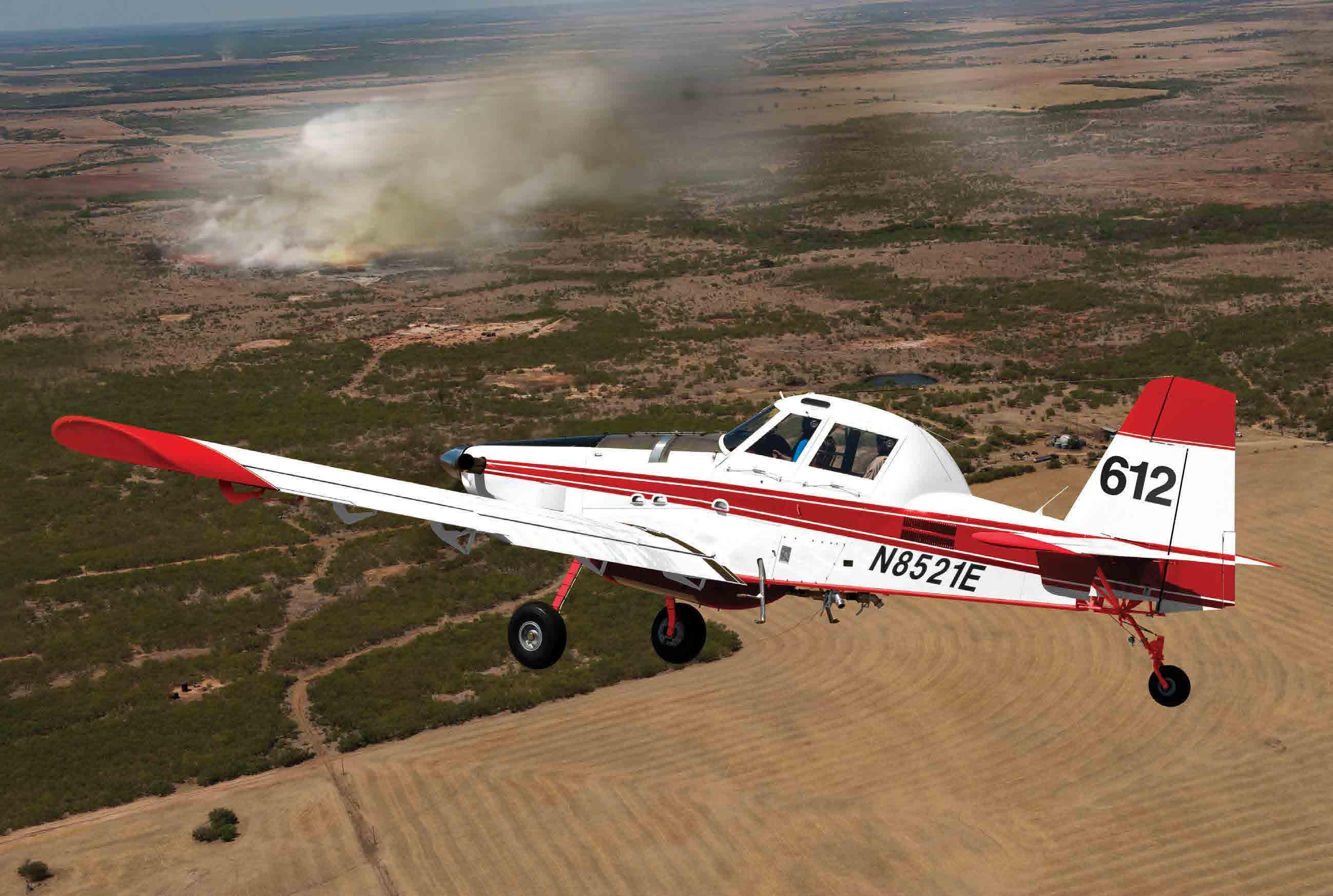






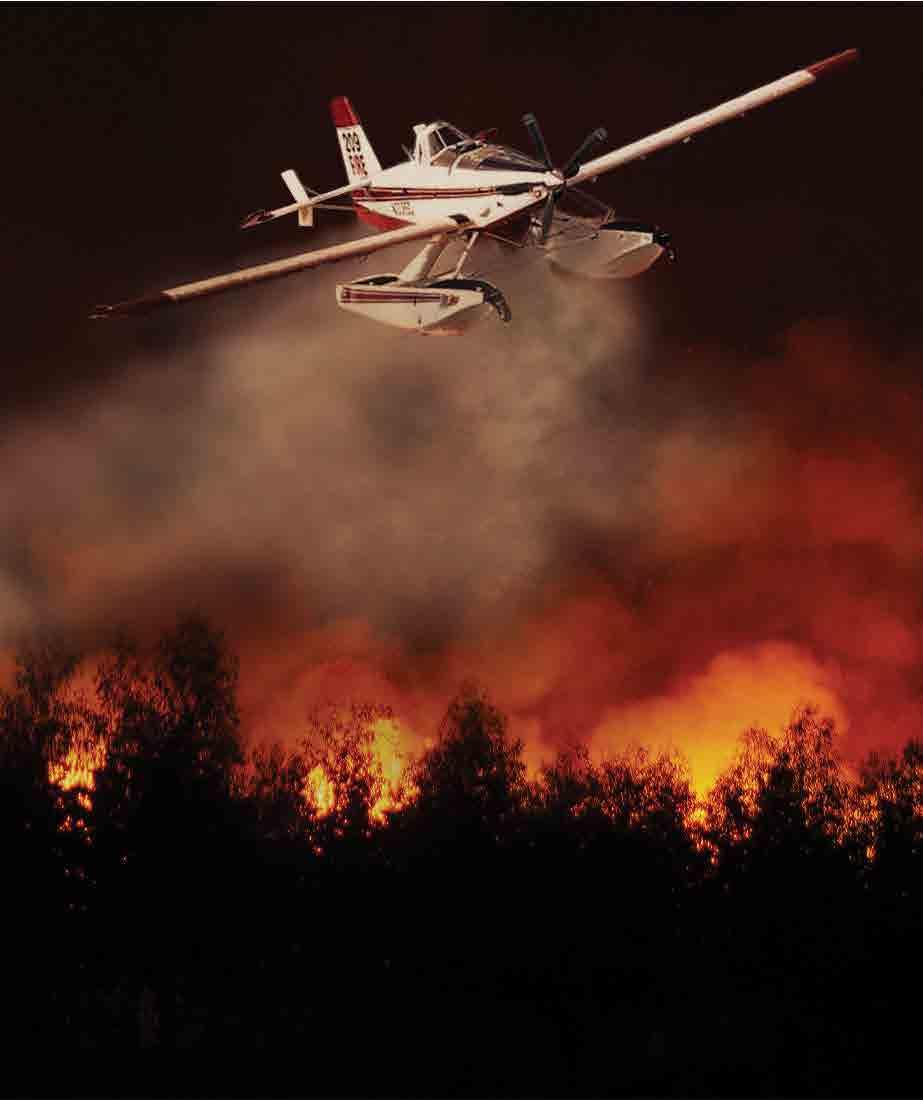
For sixty years, PHOS-CHEK® has represented innovation in support of firefighting operations around the world. This innovation has always been driven by the needs of the firefighting community – helping them operate effectively and safer when they risk their lives to protect our forests, our communities and our lives.

At Perimeter Solutions, we couldn’t be prouder of our work as PHOS-CHEK celebrates its 60th anniversary, and we are committed to continuing our innovation and support for the next sixty years!

AERIALFIRE
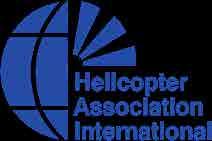
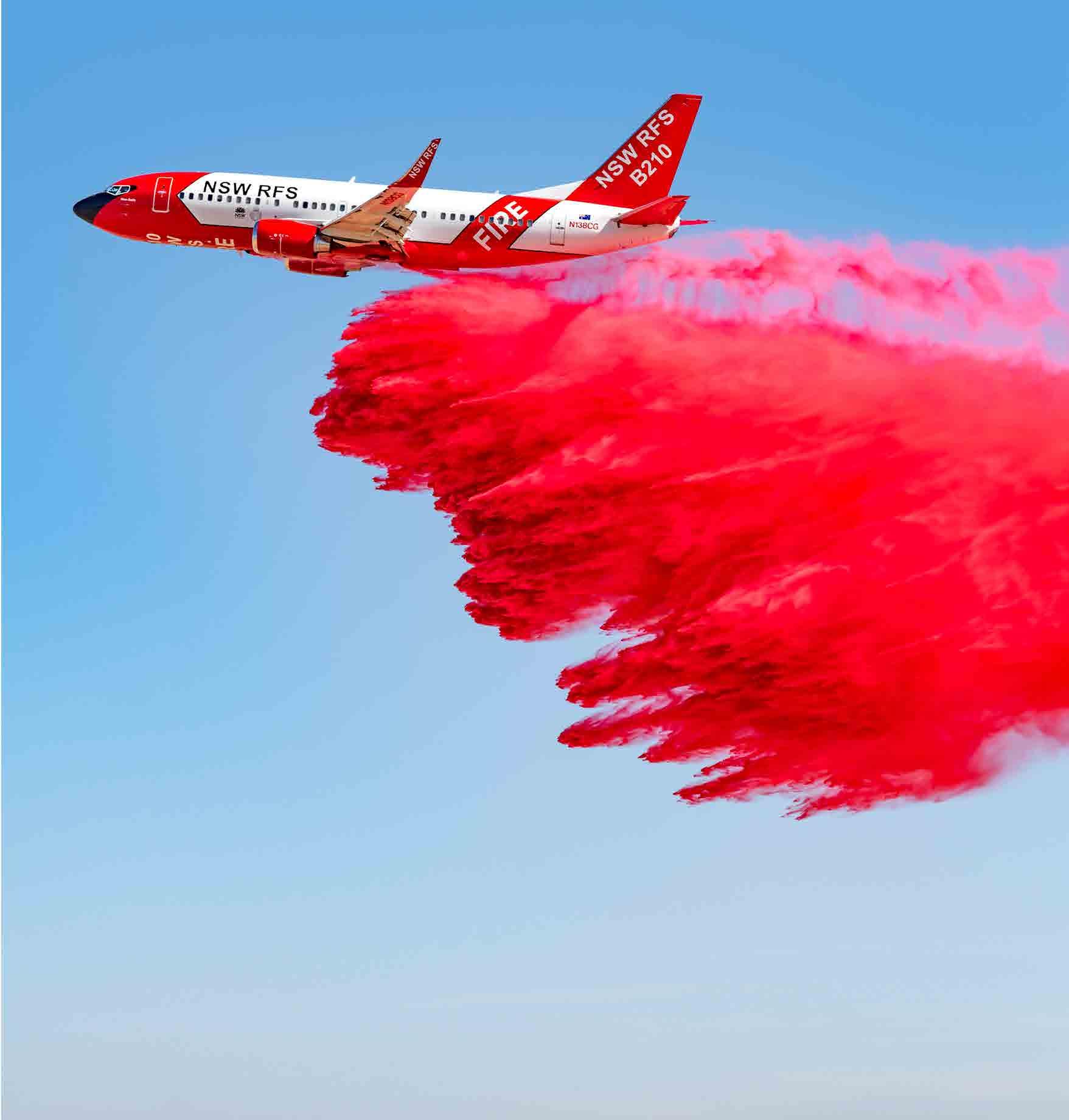
PUBLISHER:
Graham Lavender - graham@marsaylmedia.com
EDITOR IN CHIEF:
Ryan Mason - ryan@marsaylmedia.com

ACCOUNTING/ADMINISTRATION:
Casey Armstrong - casey@marsaylmedia.com
DISPLAY ADVERTISING:
Melanie Woodley - melanie@marsaylmedia.com
PRODUCTION:
Daniela Constantino - daniela@marsaylmedia.com
CIRCULATION:
Mary Jane Virden - maryjane@marsaylmedia.com
CONTRIBUTING WRITERS:
Robert Craymer - robertc@covingtonaircraft.com

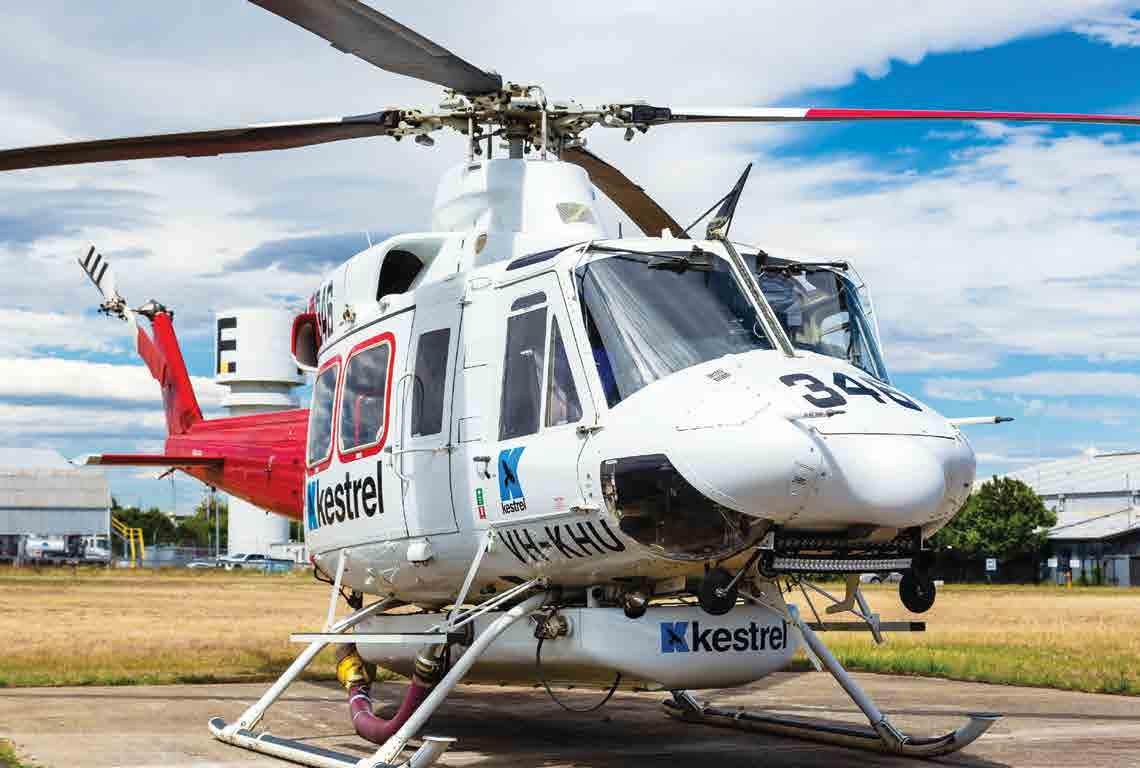
Igor Bozinovski - bozinovski.igor@gmail.com
Dan Reese - dan@intwcg.com
Paul Seidenman - avwriter@sbcglobal.net
Dave Soderstrom - davesoda727@hotmail.com
CONTRIBUTING PHOTOGRAPHERS:
Aaron Maurer Jeff Serpa
Dave Soderstrom Marty Wolin
Igor Bozinovski Kane Arlow
Marissa Fortney
© Copyright 2023 AerialFire retains all rights for reproduction of any material submitted, to include but not limited to articles, photographs, emails and bulletin board posts. All material remain the copyright of AerialFire. No part of this publication may be reproduced, in part or whole, without the written consent of the publisher. Editorial published do not necessary reflect the views of the publisher. Content within AerialFire is believed to be true and accurate and the publisher does not assume responsibility for any errors or omissions. Unsolicited editorial manuscripts and photos are welcomed and encouraged. We cannot be responsible for return unless submissions are accompanied by a stamped, self-addressed envelope. Advertising deadline is 12 noon, on the 1st of the month preceding the month of publication.
AerialFire Published bi-monthly by Blue Sky Investments, Inc., 475 Myrtle Field Road, Perry, GA 31069

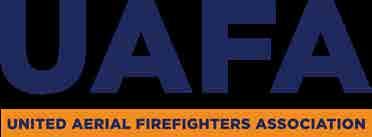

 Ryan Mason
Ryan Mason
Many of our readers have likely read from recent news coverage that federal agencies charged with providing aerial firefighting resources are now having to fight in the federal court system to continue using one of the biggest weapons available to wildland firefighters, fire retardant.

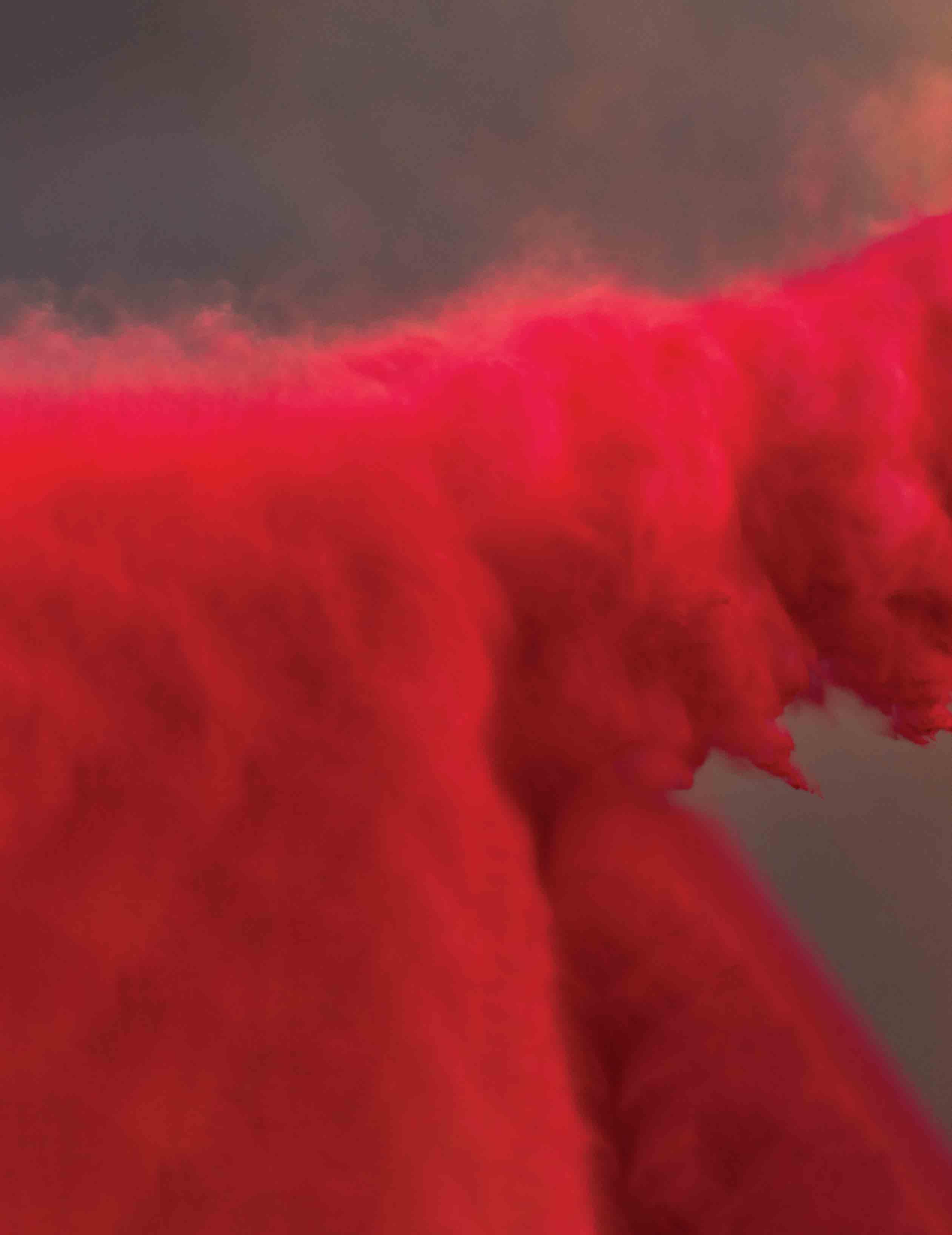
As this is being written, U.S. District Judge Dana Christensen in Missoula, Montana, is hearing oral arguments from lawyers representing the Forest Service Employees for Environmental Ethics (FSEEE) organization who filed suit against the U.S Forest Service. FSEEE is seeking the court to issue an injunction blocking firefighting officials from using aerial retardant until they get a pollution permit, a permit that the Forest Service could take years to obtain. FSEEE has, for years, advocated that the continued use of retardants causes damage to waterways and streams and should, therefore, ultimately be banned.
The suit fails to mention the voluntary measures already taken by the U.S. Forest Service, CAL FIRE, BLM, DOI, and every vendor tasked with dropping retardant. Retardants are forbidden from being dropped within 300 feet of a water source. It is only approved for use in avoidance areas where threats exist to life and property, per a 2011 U.S. government rule.
While accidents have occurred, retardant reporting is mandated for all incursions, and those accidental discharges of retardant consist of less than 1% of all retardants dropped in decades of aerial firefighting. Once the retardant reporting is documented, forest biologists investigate and monitor the site to ascertain if and what damage has or may occur. It is largely speculated that most avoidance area drops had little impact on the drop site; however, that can be substantiated in the results of the government’s retardant intrusion reports.
So in a world where the beating of the drum of social justice, climate change, and environmental concerns trump continuing life as we know it, the FSEEE expects
the government to ban the use of one of the most effective firefighting tools we have in the arsenal. This is to appease a group of activists masquerading as staff members from the same agency that the suit has been filed against to protect the 1% chance that some fish may die and a waterway may need some temporary help to return to normal after a drop was made that saved several thousand lives? Bear in mind the destruction of a watershed by fire will most likely annihilate the entire stream; however, this is not what the environmental lobby is concerned with.
This suit, even if successful in a temporary or short-term injunction, has the potential for deadly consequences. The term “cutting off your nose to spite your face” doesn’t even cover the thought process that believes banning retardants to potentially save fish and streams that may or may not have a 1% chance of being at risk is a wise move. That’s like saying there is a 1% chance you might cut yourself in the kitchen, so you should throw away your knives and invest in plastic sporks.
A ruling in favor of the FSEEE has the potential to halve the abilities and effectiveness of the current aerial firefighting fleet and relegate any retardant aircraft to now only being able to drop water or enhanced water. Although effective as a suppressant, at the moment, water provides exactly zero preventative purposes in directing a fire or preventing loss of life, like using retardant to direct the fire away from populated areas. Unlike retardant, water alone will not buy firefighters on the ground the time they need to accomplish specific objectives to control a fire.
Last week, I flew over Paradise, a small town in Northern California, devastated by 2018’s Camp Fire, which killed 85 people, and destroyed approximately 20,000 structures. Nearly five years later, the town is still half empty. Foundations of houses still standing where whole homes once stood. This requested injunction would disregard the lives of those in firestorms like the Camp Fire in favor of flora and fauna ahead of human life. In a statement to CBS News, the mayor
The same goes for aerial firefighting but in reverse. You can’t take away 50% of the ability to fight fires from every agency and aircraft in the national fleet and expect the same effectiveness and results. Expecting minimal loss of life and identical performance while wildfires continue to grow while tying one hand tied behind their backs is equivalent to an adult still believing in the tooth fairy.

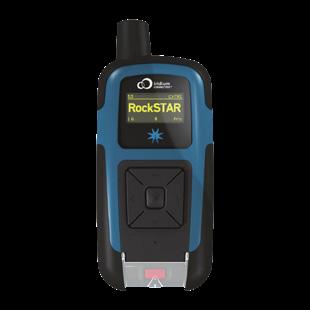

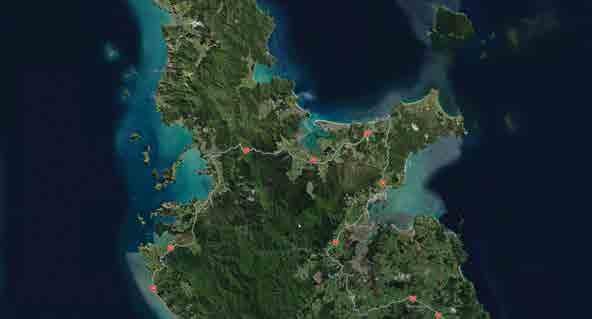
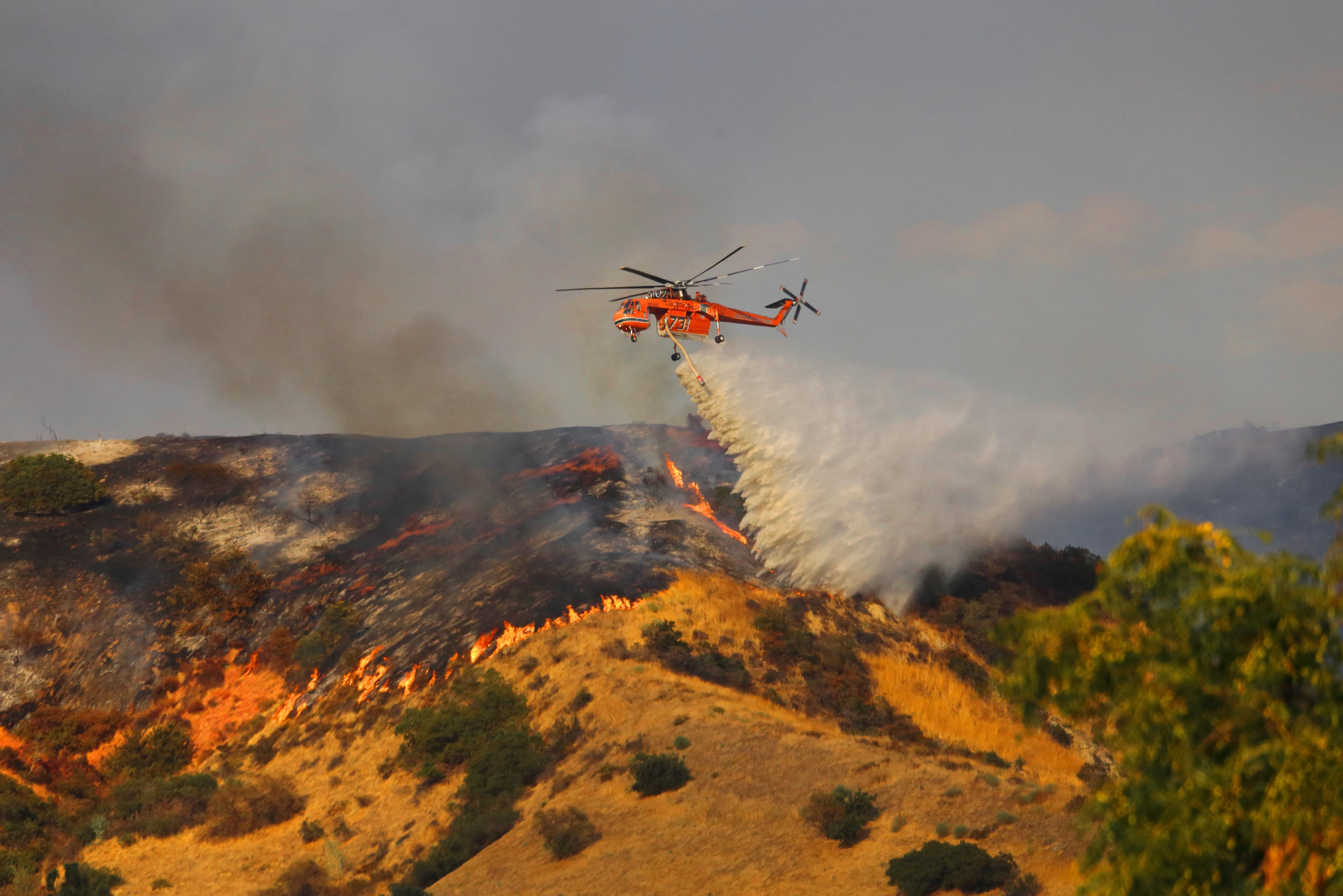

Fly safe,







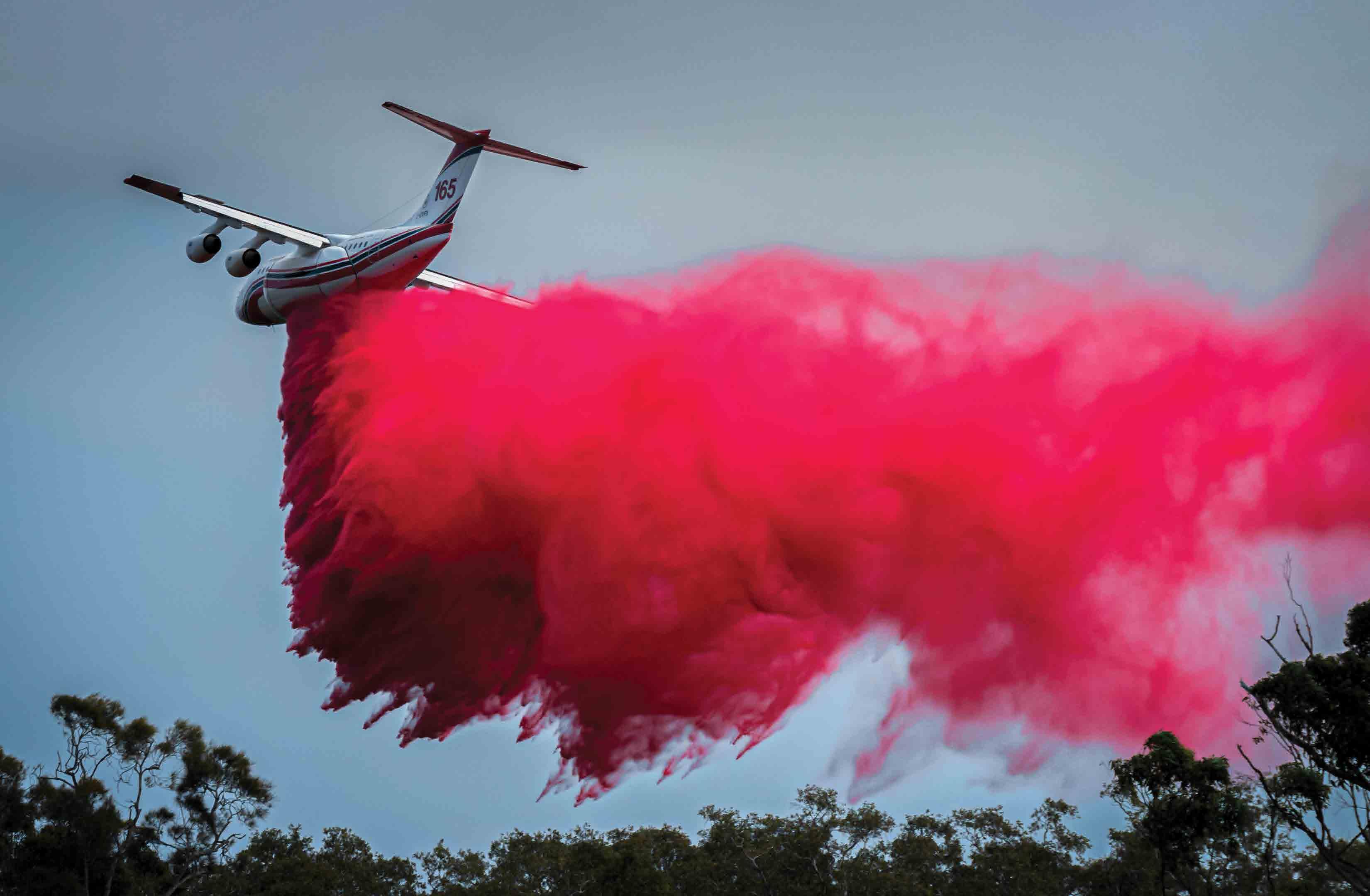 A Sécurité Civile Q400 returns to base in France. Image by Alex Pous.
A Conair RJ-85 lays a line of retardant in Port Macquarrie, Australia. Image by Rich Shaw.
A Sécurité Civile Q400 returns to base in France. Image by Alex Pous.
A Conair RJ-85 lays a line of retardant in Port Macquarrie, Australia. Image by Rich Shaw.
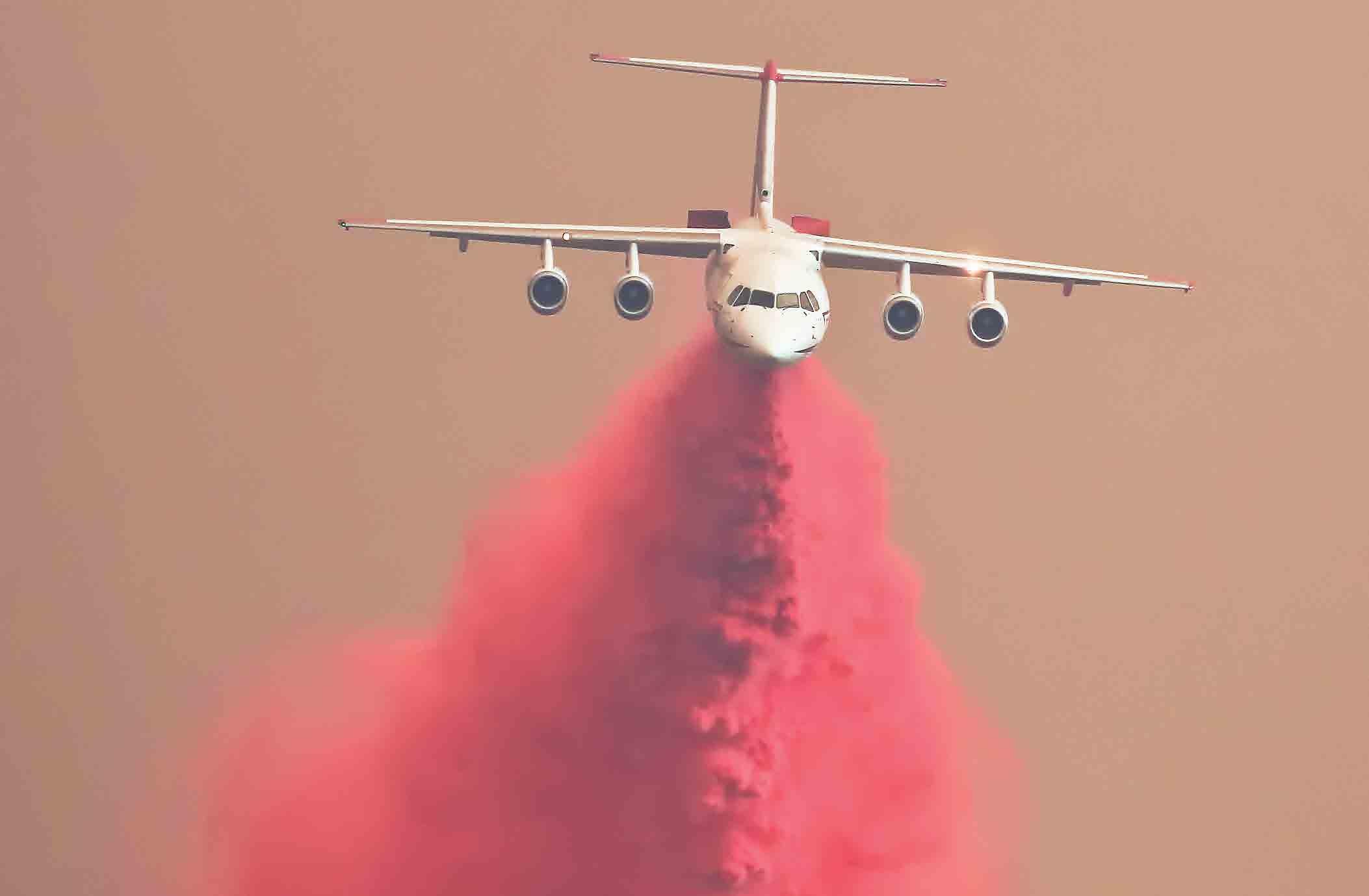
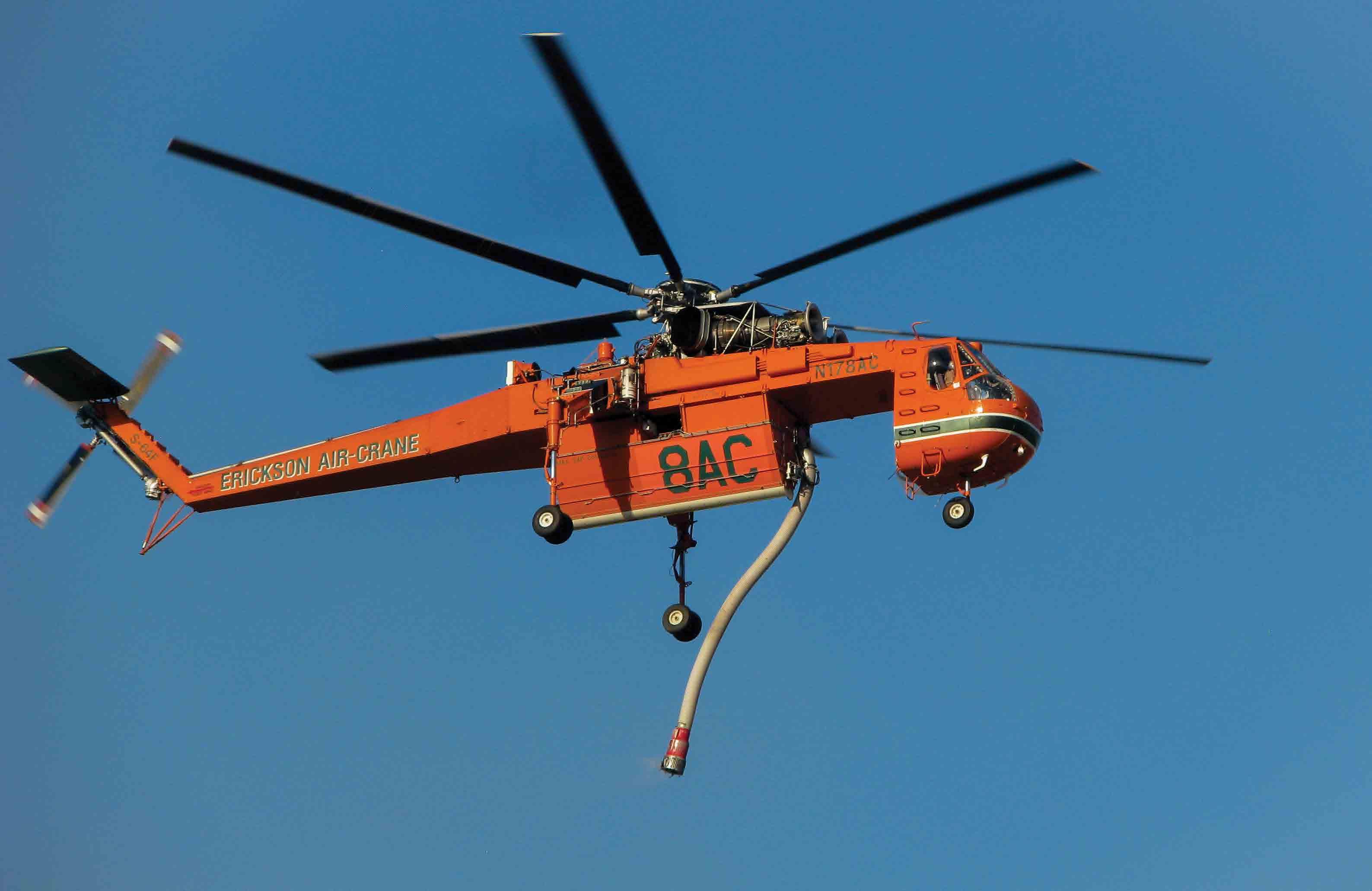 An Erickson Air Crane heads to the Daisy Mountain Fire. Image by Curt Porter.
A Neptune Aviation BAE-146 drops retardant in California. Image by Jeff Serpa.
An Erickson Air Crane heads to the Daisy Mountain Fire. Image by Curt Porter.
A Neptune Aviation BAE-146 drops retardant in California. Image by Jeff Serpa.
ITT is Internal Turbine Temperature. This is the system that indicates to the pilot the operating temperature of the engine. So, what is the ITT system?

The PT6 has several stations throughout. Various things are measured at these stations. You may be familiar with P3 air. The interpretation of that is the air pressure at station three. The ITT system is the same way. You may have heard me, or others refer to it as T5. Yes, you guessed it, ITT is measuring the temperature at station five. Station five is located right between the compressor turbine and the power turbine. That is the temperature that we want to measure.
The T5 system consists of either 8 or 10 thermocouples that extend into the airstream between the turbines. The thermocouples are connected in parallel with a bus bar. A wiring harness is connected to the bus bar and then comes to the outside of the engine. Before the signal goes to the gauge, a probe is also attached in parallel, commonly known as the trim stick. The trim stick adjusts the reading in the cockpit a prescribed amount. This amount is determined on the test cell run of the engine, where a formula that includes the temperatures of the inlet and exhaust is used to determine the trim value. The trim stick provides a specific bias to the indication to compensate for sampling errors. ➤
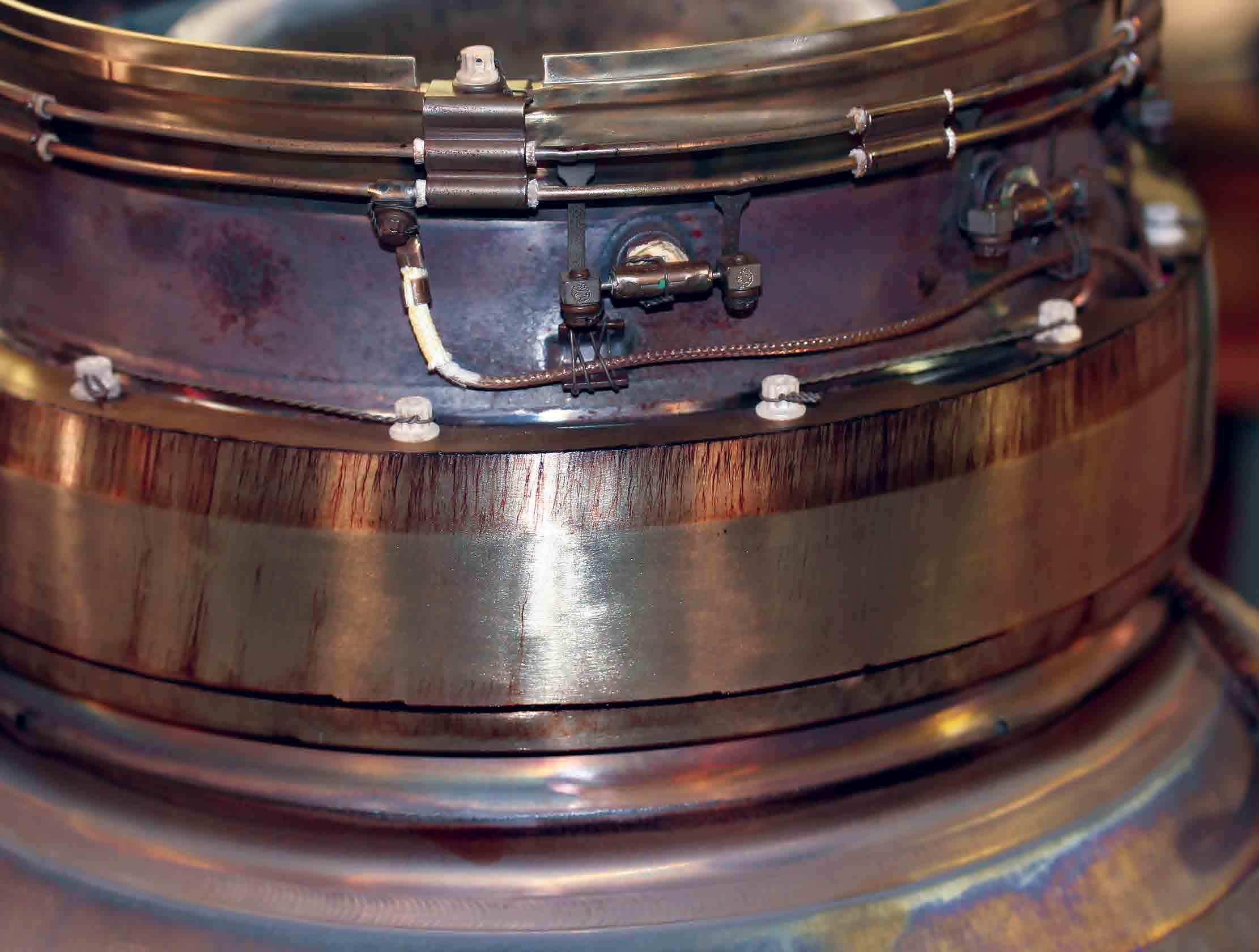
Let’s face it. This job’s not for everyone. Aerial firefighting demands nerves of steel and the power to fly at peak performance. The PT6 turboprop continues to be the engine of choice — built for full-load takeoffs in extreme hot and high environments, all day, every day.
LEARN MORE AT PWC.CA/PT6
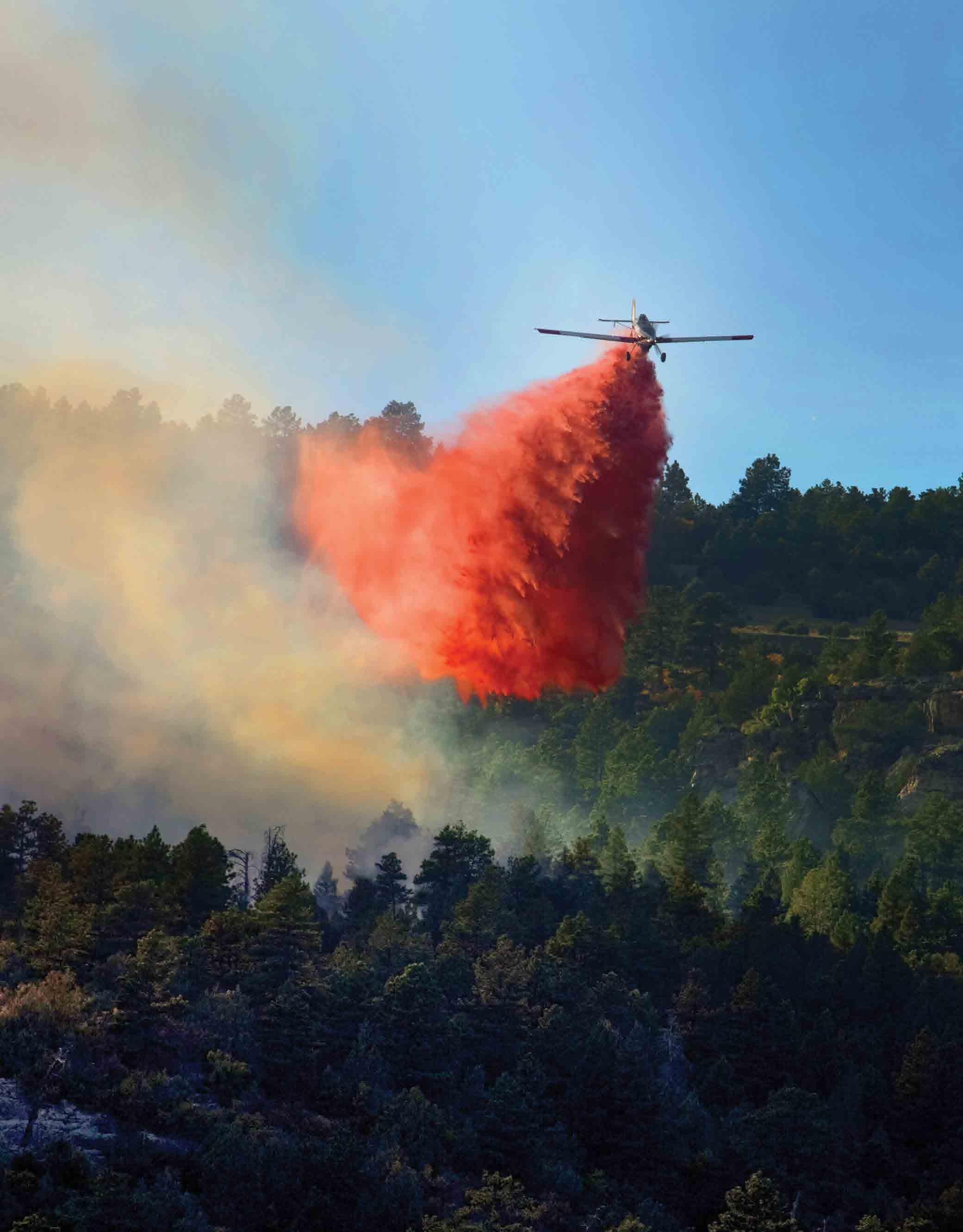
This is critical to ensure that the internal critical component’s temperatures are within the acceptable range. The trim stick cannot be adjusted or changed in the field without consultation from Pratt & Whitney Canada engineering. It can be replaced with the same class if found to be faulty.
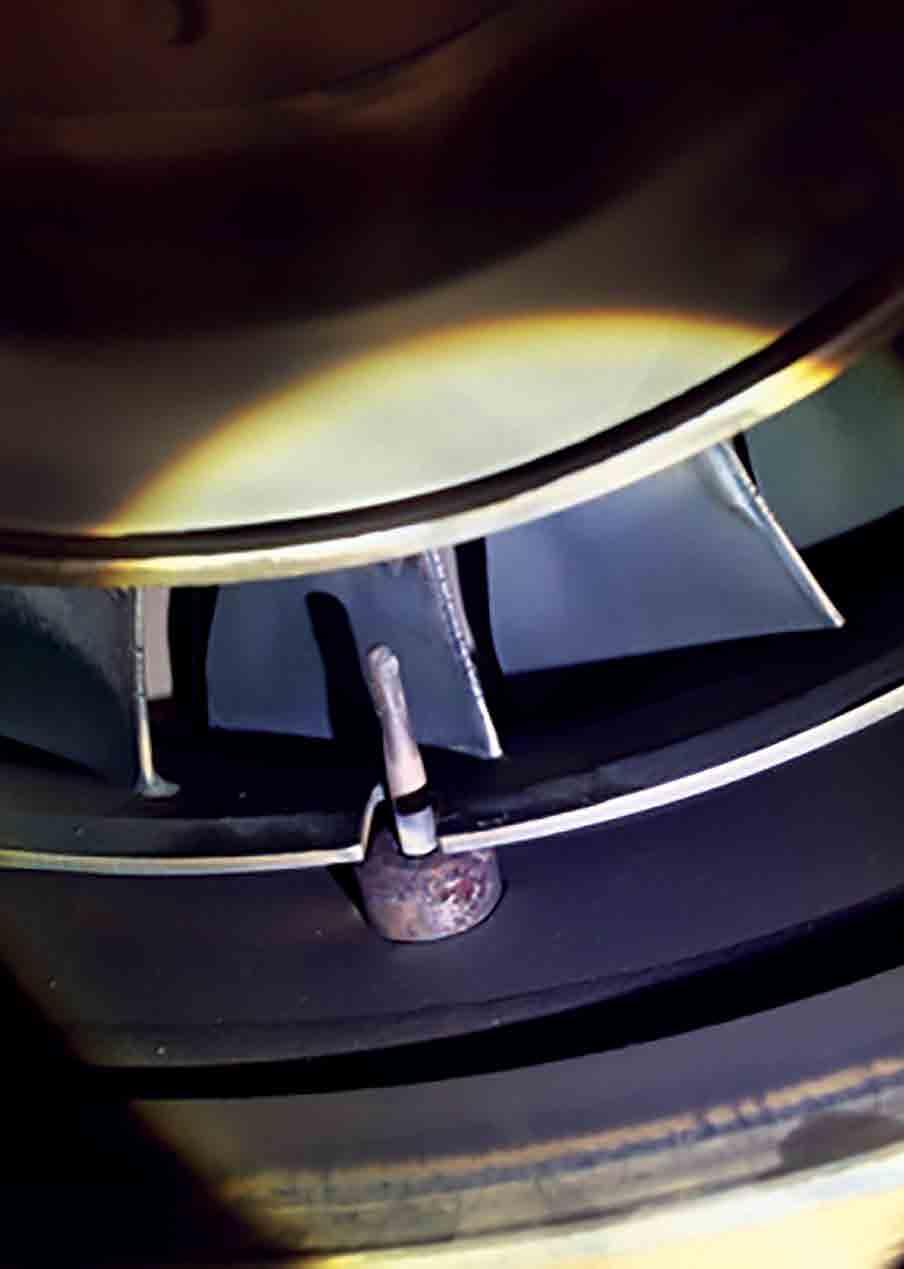

The thermocouples consist of alumel and chromel portions. The two metals are joined together and send an electrical signal when they get hot. This is the signal that goes to the gauge the pilot is reading. If you need to identify the difference between the alumel and chromel sides of the wire harness, they are different sizes. The alumel connections are bigger, I always remember them as BIG AL, and now you will too.
Why am I bringing all of this up? I have received some calls recently regarding intermittent or fluctuating ITT readings. There are testing instructions for the whole system in the maintenance manual. You can test it as a complete unit. You can also split the engine at the C-flange and test the individual components. When advising people on the process, I always start with a check of the ITT gauge. Remember to set your test equipment, considering the lead between the engine and the gauge. You can then induce an electrical signal with your tester and compare the reading to the reading in the cockpit.
Once the gauge is determined to be good or replaced, we test the engine components. We test for resistance and continuity. The issue then becomes, how do we trace an intermittent problem? Most of the time, what I have found is that there is a “disconnect” somewhere in the system. This can be chaffing on the ITT wire harness or a
broken leg on the bus bar; I have even found a broken bolt before. Sometimes there is insulation that becomes brittle over time and can allow a short in the system. These can only be thoroughly checked by splitting the engine. Sometimes, you might have to “wiggle” the components to find the issue. Once the issue is located, it can easily be handled by component repair or replacement.
A couple of extras. Humidity can cause erroneous readings. Be sure to follow the manuals when dealing with ITT components, as sometimes it will have you heat them for both checking and removing moisture. Lastly, handle the complete system with care. When reinstalling the power section, ensure the wire harness is tucked away as much as possible. Don’t bang the bus bar as the engine halves go together.
Intermittent problems can be the worst when it comes to troubleshooting. If you take a step-by-step approach with some information and assistance, you can almost always find the problem. As always, reference the manuals and ask for help. We are all in this together.
Robert Craymer has worked on PT6A engines and PT6Apowered aircraft for the past three decades, including the last 25+ years at Covington Aircraft. As a licensed A&P mechanic, Robert has held every job in an engine overhaul shop and has been an instructor of PT6A Maintenance and Familiarization courses for pilots and mechanics. Robert has been elected to the NAAA board as the Allied-Propulsion Board Member. Robert can be reached at robertc@ covingtonaircraft.com or 662-910-9899. Visit us at covingtonaircraft.com.





If you are in the aerial firefighting industry, you might have heard of a new trade association launched in 2022: the United Aerial Firefighters Association (UAFA). The UAFA is the only trade association dedicated to aerial firefighting, with a mission to promote safety, effectiveness, innovation, and collaboration in the aerial firefighting community. The UAFA also aims to inform policymakers and legislators about the primary issues concerning aerial wildland firefighting, which is becoming more critical and complex due to the increasing worldwide wildfire challenges.
As wildland firefighting has become more complex, there has been more emphasis on aerial resources. The recent lawsuit against the U.S. Forest Service over the use of fire retardant sparked a heated debate about the environmental impacts and efficacy of this vital firefighting tool and its use by aircraft. The world is seeing more flight hours, retardants, and aviation use. This increased use has shown the criticality of aviation resources and the long-term need to plan for the entire aerial wildland firefighting Industry.
The UAFA has a vision for the future of aerial firefighting: to be recognized as a vital and indispensable part of wildfire management. To achieve this vision, the UAFA has set three goals: to foster and enhance communication and collaboration among firefighting organizations, industry, and other stakeholders; to work with UAFA Members and Local, State, and Federal Agencies to improve contracting processes and outcomes; and to promote the safety and effectiveness of aerial firefighting operations.
The UAFA has named several priorities for 2023 and 2024. These include:
Collaboration: The primary goal is creating opportunities for collaboration between stakeholders across agencies and industry. It aims to improve the knowledge and understanding of the industry’s business needs and challenges among the agencies that contract aerial firefighting services, such as the US Forest Service, the Bureau of Land Management, and the National Interagency Fire Center. This includes improving agencies’ knowledge of industry business needs, such as operational costs, maintenance requirements, and workforce challenges. It also involves improving congressional understanding of industry needs, such as funding stability, contract flexibility, and liability protection. Additionally, it entails improving congressional knowledge of agency challenges, such as budget constraints,
resource gaps, and regulatory barriers. The UAFA plans to organize meetings, workshops, webinars, and site visits to help information exchange and dialogue among these stakeholders.
Increasing membership. The UAFA looks to expand its membership base to include more aerial firefighting operators, suppliers, customers, and supporters. It also looks to diversify its membership to reflect the variety in the aerial firefighting community in terms of size, type, location, and mission. The UAFA plans to launch a membership campaign highlighting the benefits of joining the association, such as networking, advocacy, education, and recognition.
Wildfire Commission Engagement. This involves working with agencies and Congress to plan and implement the Congressional Wildfire Commission Report. The UAFA has and will continue to work with the Wildfire Commission, so they consider the role and value of aerial firefighting in its analysis and recommendations. This will set an excellent plan to shape the future of the Aerial Wildland Fire Industry for the next 10 years or more. By having UAFA engaged with the Wildfire Commission, UAFA will be able to stand for the Aerial Fire Industry and drive the innovation needed to improve and transform the industry for the next decade.
Adding value to Membership. The UAFA plans to supply value-added services and products to its members to meet their needs and expectations. Member input will drive the development and implementation of the solutions that enhance member satisfaction and engagement. Training, data analysis, and collaboration opportunities will all be part of the value.
The UAFA welcomes anyone who shares their passion and vision for improving wildfire fighting outcomes. It invites companies who own or lease and operate aircraft, UAVs, drones, or provide aerial-delivered suppressants and retardants under contract with federal or state governmental entities for aerial firefighting services to join its membership. The UAFA also encourages companies that support the aerial firefighting industry by providing products and services along with nonprofits, state agencies, and national agencies to join its membership. An international focus will come next.
The UAFA believes that collaborating with its members and partners can make a positive difference in the aerial firefighting community and help protect lives, property, and natural resources from wildfires.
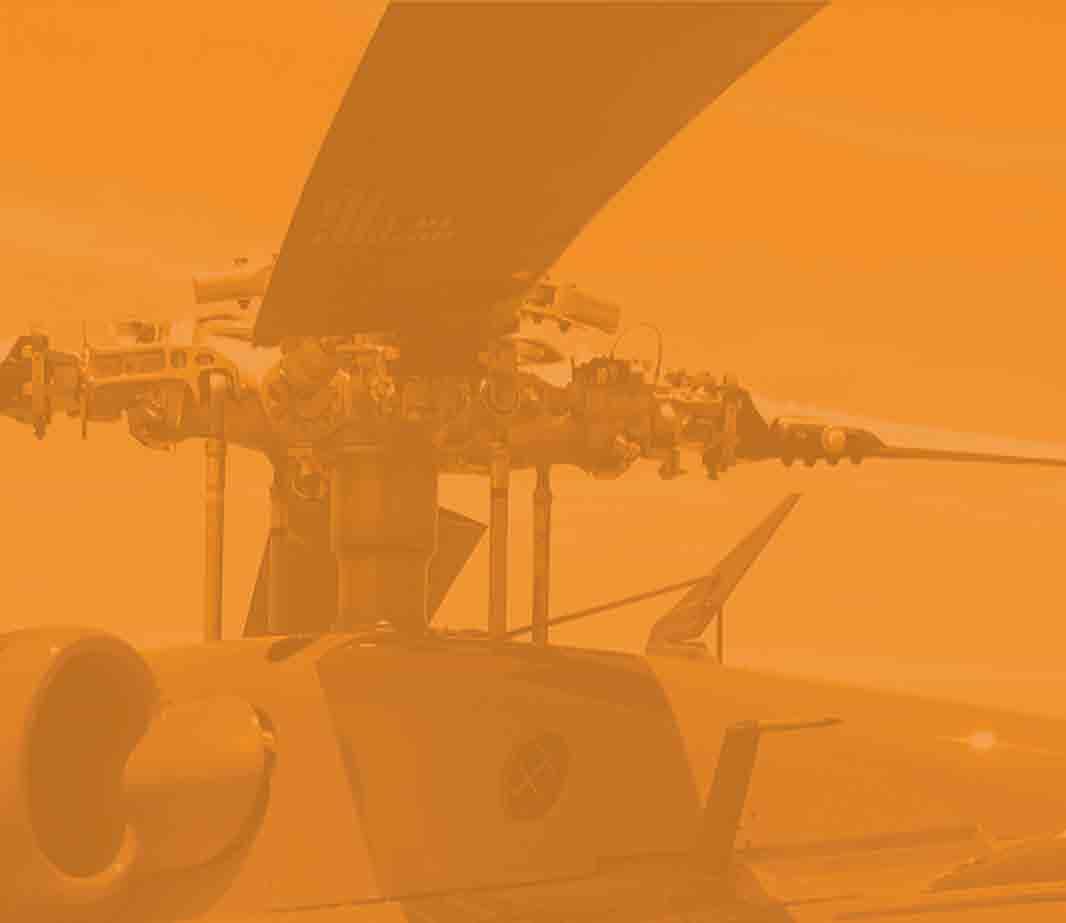


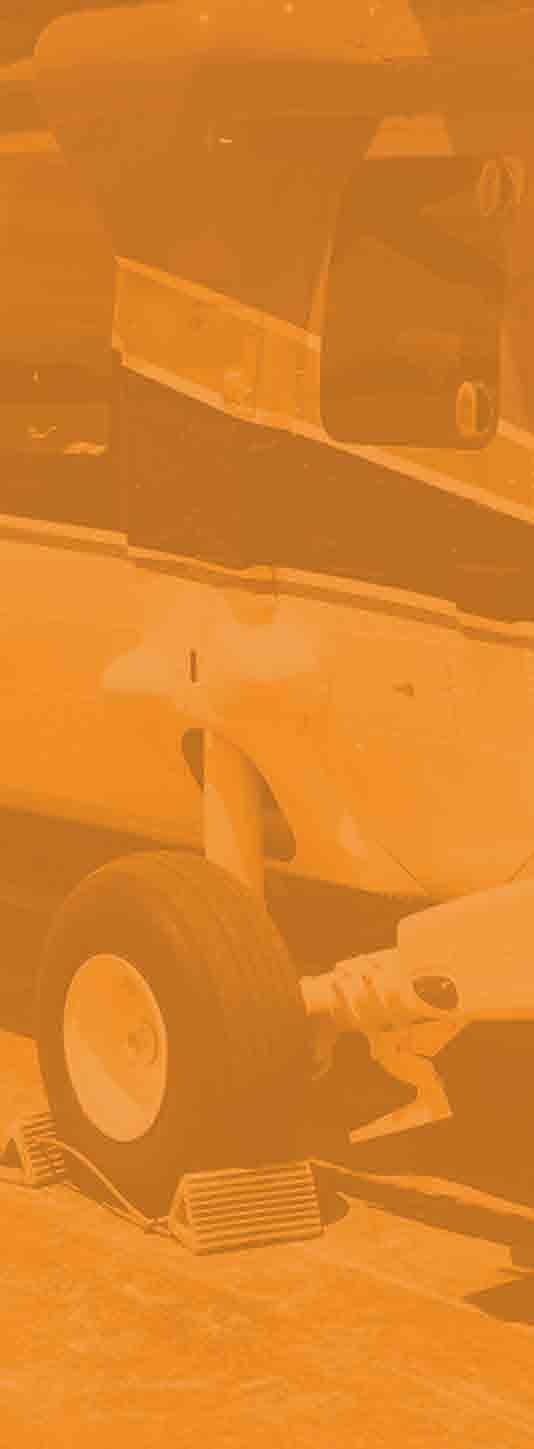











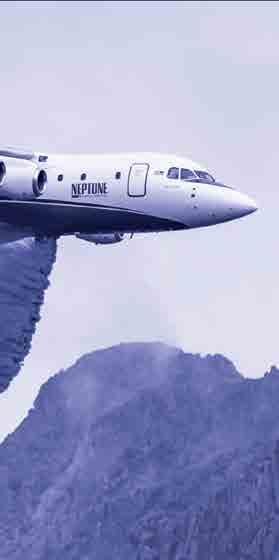



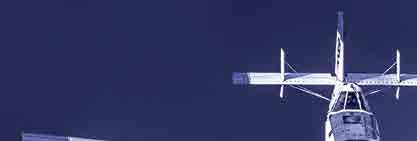







I recall a sales pitch for car polish that said, “Use this product and the only surprises you’ll get are pleasant ones.” That sounds good, but I prefer to have no surprises at all when flying.
This is particularly so during aerial application. A telephone wire suddenly appearing ‘out of nowhere.’ A particularly violent gust of wind on short final. A clogged pitot tube from a bug ingestion that renders your ASI useless. The question becomes how we can eliminate or at least minimize the effect of such ‘surprises’ that can make for a bad day at the office.
It’s often not what we know that gets us into trouble. It’s what we don’t know that can really get our attention. We all have blind spots in our knowledge base, regardless of experience level or familiarity with aerial applications. How can we effectively deal with these blind spots?
One route is reading and studying incident/accident reports readily available from aviation agencies and regulators. Put yourself in the cockpit and imagine what your response would be to the given scenario. Just as important, think of ways that you could adopt to avoid firsthand experience of a particular situation.
Along the same lines, I find that sharing stories and experiences with fellow pilots can be a great help in avoiding potentially dangerous situations. Through my years of flying, I have been very fortunate to have met several seasoned ag pilots who were more than happy to share their knowledge with me. In this spirit of sharing information, the following are a few scenarios I’ve personally experienced that hopefully will be of interest to pilots at all levels. An ounce of prevention is worth a pound of cure. ➤
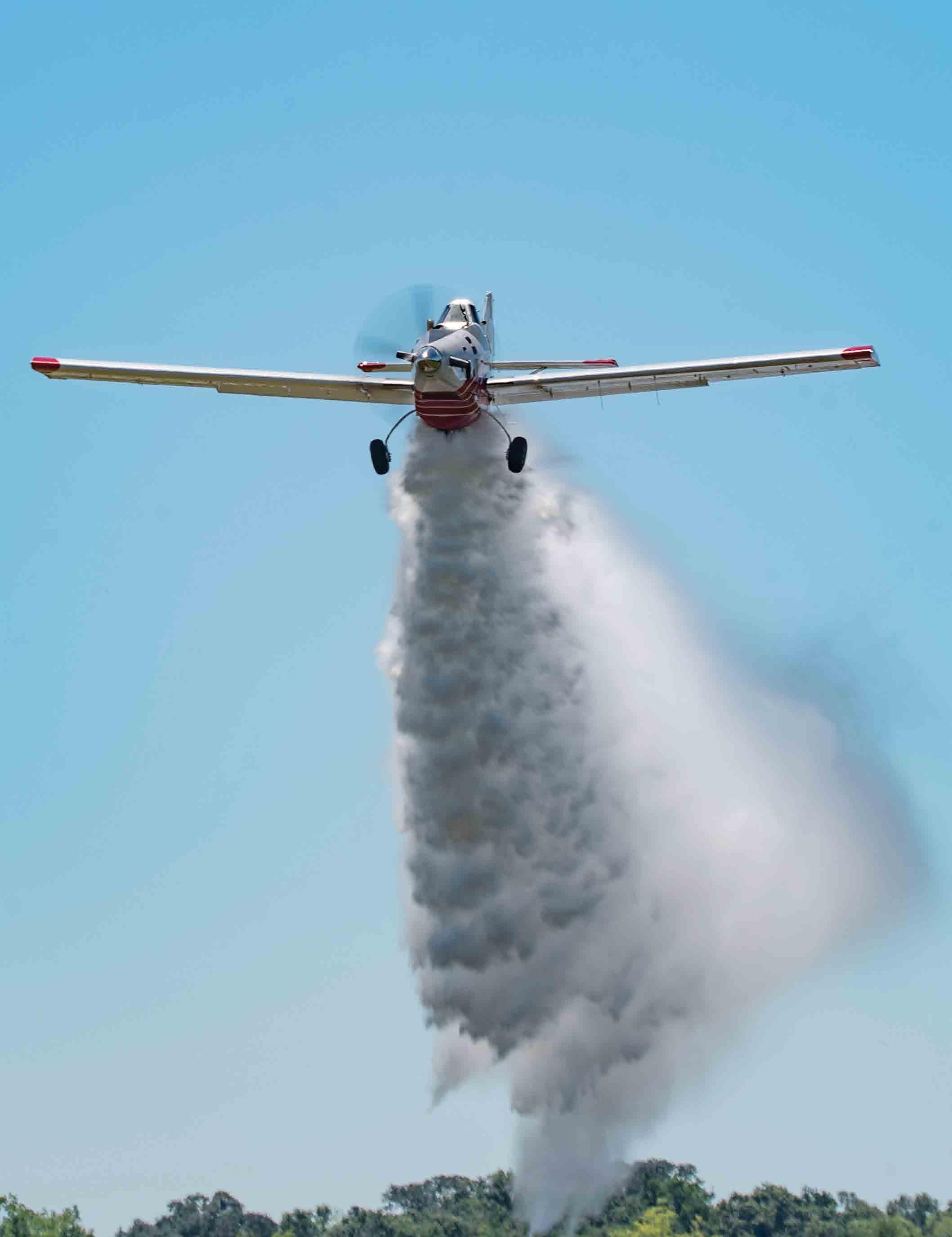
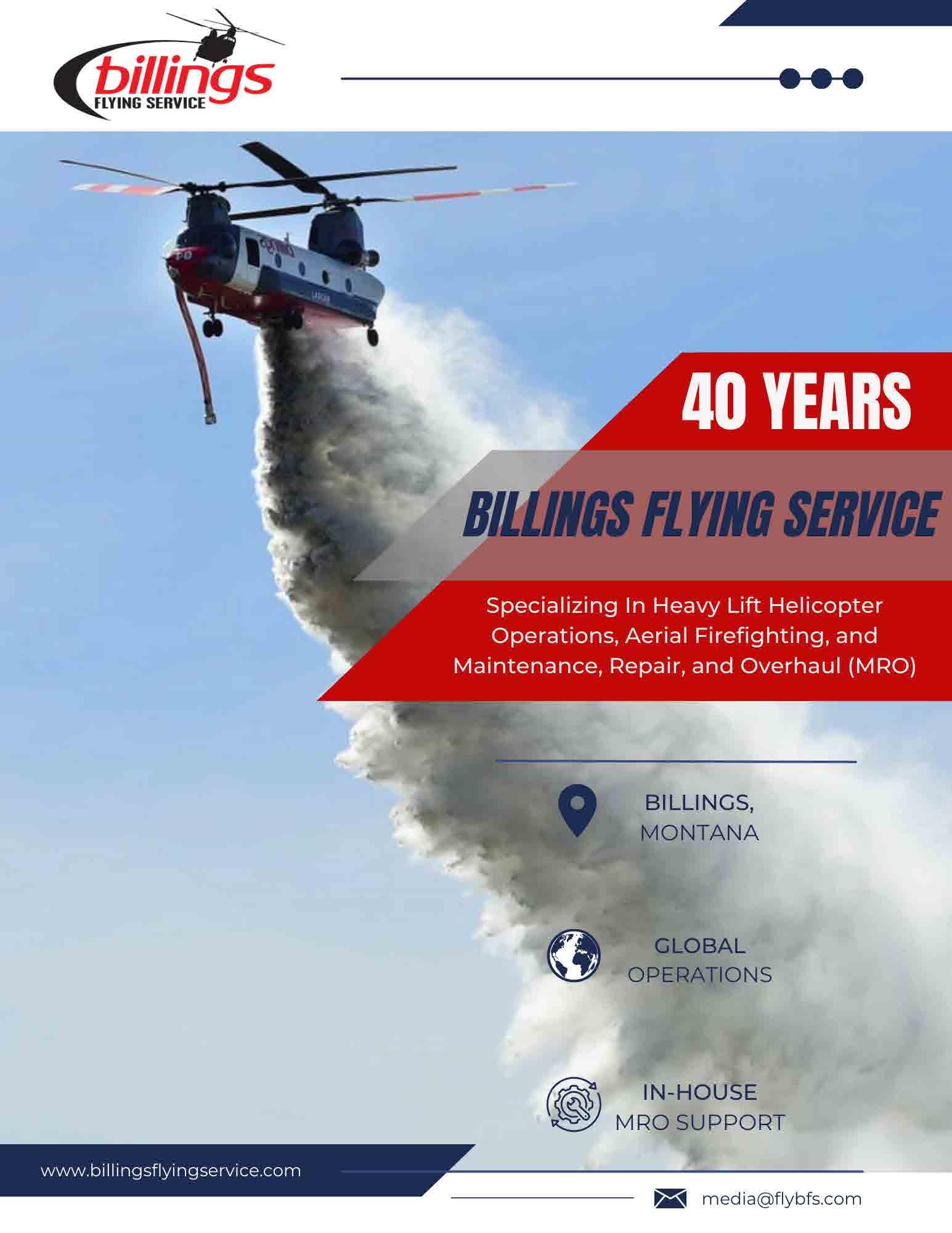
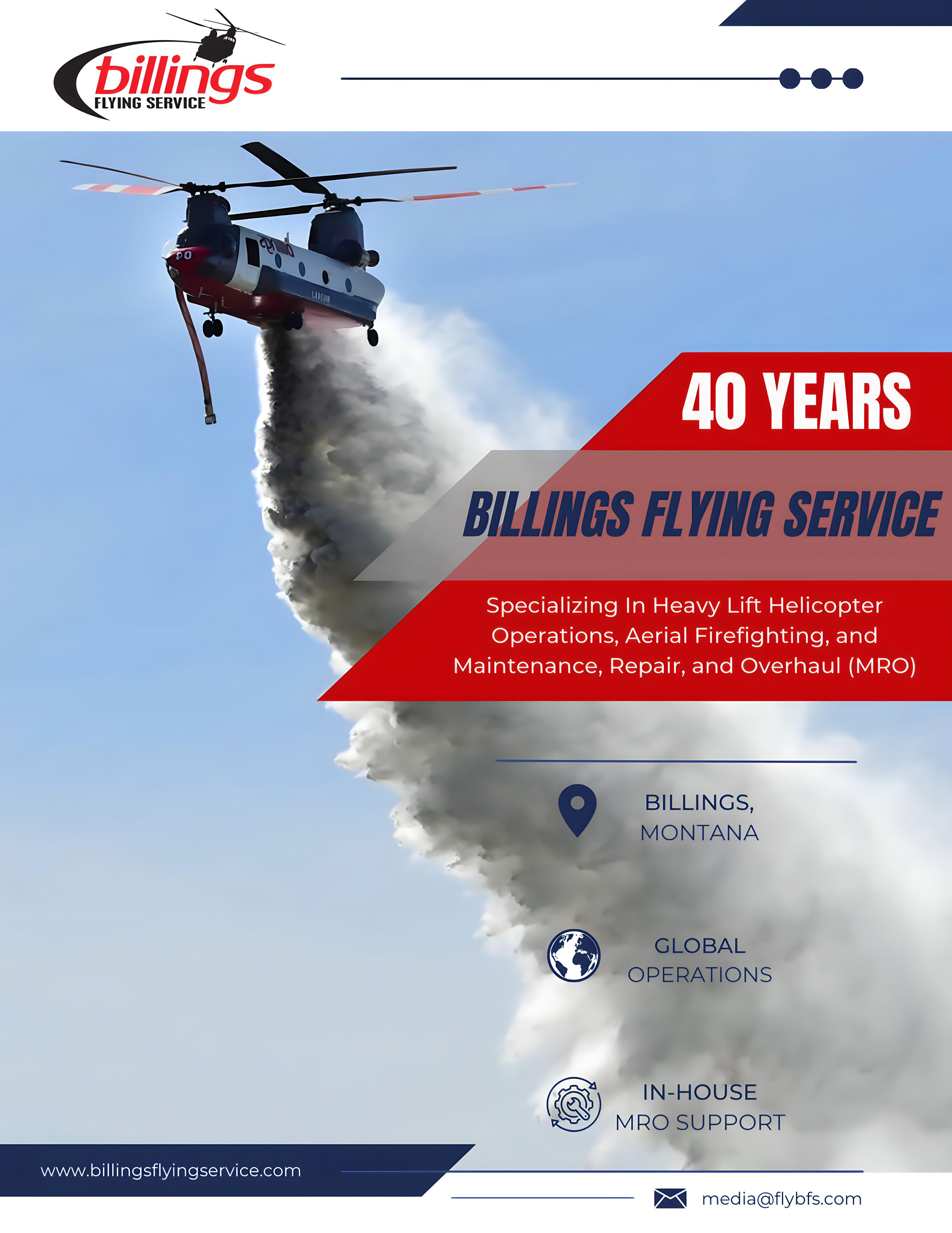
The sinister and dangerous specter of fatigue comes high on my list as a serious contender for first place in causative factors for accidents. One of my first dramatic experiences as an ag pilot was flying a Super Brave in coordination with two other aircraft and pilots during a hectic season. If it wasn’t weeds, it was bugs; if it wasn’t bugs, it was fungi. To boot, it seemed as if Mother Nature was tagging up with the gods of aviation by providing ideal application weather all day long. It set the stage for some very fatigued and tired pilots.
That’s when I got ‘the nods,’ a term very familiar to those who drive long distances. You momentarily fall asleep at the wheel, which is dangerous enough on the ground. In the air, it can be fatal. In my case, I had a very brief excursion into la-la land during the last spray pass on a wheat field. Halfway through the pass, the mains contacted the ground, and the aircraft responded with a decidedly violent bounce. Luckily the crop was short, and the only effect was to scare the daylights out of me. I reoriented myself, finished the final pass, headed home, shut the aircraft down, and took a good long nap.
Why did I let fatigue get the best of me? It was because we were faced with an onslaught of pests, and no one wanted to be the first to say “enough is enough,” instead depending on gallons of coffee to do the trick. Caffeine might help keep you awake, but alert and responsive is something else.

I discussed what had happened with the ground crew and the other two pilots, all of whom said they had thought of shutting down but didn’t want to be the ‘wimp.’ We all agreed to keep closer tabs on our collective ‘awakeness’ from then on and never ever feel uncomfortable saying “No!”.
As we learned in high school physics, specific gravity (SG) relates the weight of a liquid compared to the weight of water. Given that a gallon of water weighs around 8 lbs, a gallon of liquid fertilizer with an SG of 1.285 would weigh 1.285 x 8 lbs = 10.28 pounds.
It doesn’t sound like a big deal until you take a hopper full. The majority of pesticide tank mixes are roughly the same weight as water alone. If you are using 360 gallons as a standard load, it would weigh 360 x 8 = 2,880 lbs. The same volume of liquid fertilizer would weigh 360 x 8 x 1.285 = 3700 lbs., equivalent in weight to 462 gallons of water!
Think of the surprise you’d get trying to take off with that load. It certainly caught my attention as I was doing just that in a 600 HP Thrush S2R. I immediately knew something
was wrong due to the lethargic acceleration. Initially, I thought I had lost a cylinder and aborted the takeoff. Once back at the loading area, I had a good look at the label, and sure enough, there it was, a specific gravity of 1.285. Once I got my breath back, we unloaded the hopper to 280 gallons (reducing the weight to 2880 lbs) and used that as the standard load with the product we were using.
Anyone who has dealt with a low-level wind shear knows about this surprise in the sky. When flying downwind at application height and you pull up at the end of a run, your airspeed rapidly unwinds as you climb into an increasing tailwind. The controls feel mushy, you are too close to stall for comfort, and you’re a bit miffed the situation caught you by surprise.
One avoidance tactic is to make it a habit to note branch movement at the tops of trees en route to the field. If they are really active compared to a very light surface wind, give yourself plenty of leeway once you start spraying. Spread the word back at home base and take a moment to examine the situation critically. If it looks too hazardous, it’s time to hang up the spurs for the day.
Many such situations can really invite some surprise moments – the kind that you don’t like. Inversions. Tree rows making powerlines challenging to see. Low into sun visibility. Power loss at low level. There are many challenges, but by staying alert, strictly adhering to safe flight principles, and making it a habit to share ‘surprise’ moments with others, you’ll go a long way to ensure all operations are safe and effective.
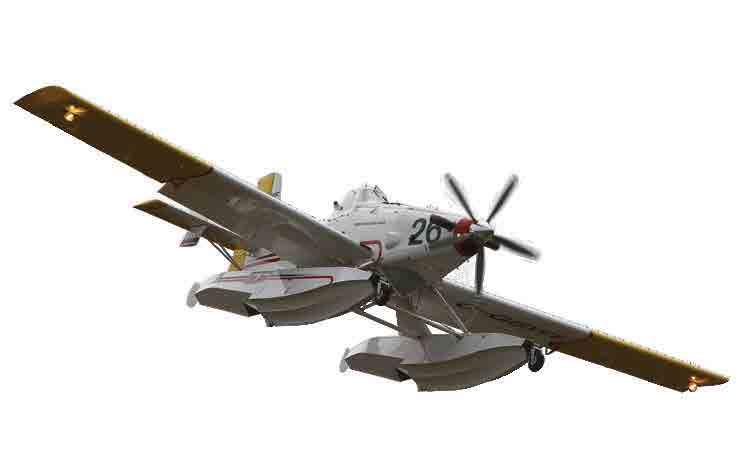

An Erickson Incorporated S-64F Air Crane® helicopter was certified by the Federal Aviation Administration (FAA) for night vision goggle (NVG) operation on April 6, 2023. The approval is a key component of Erickson’s integrated NVG program, which aims to offer customers increased flexibility and expanded operational capabilities. This added proficiency presents the opportunity for increased tactical planning and agility in aerial firefighting and a variety of civil protection operations.
Erickson partnered with Aviation Specialties Unlimited (ASU) to modify an S-64F to perform NVG operations. Concurrently, Erickson pilots received NVG training and certification through ASU. Aircraft modifications and pilot certifications were completed in March, with FAA aircraft certification in April.
A critical element of Erickson’s NVG program is ensuring that the NVG flight crew maintains currency in accordance with current FAA regulations, though it is the policy of the Erickson training department that pilots exceed the FAA’s minimum requirements to maintain a high level of proficiency. Erickson conducted NVG training in accordance with this policy at its annual spring training event in Oregon.
As part of the currency flights, prior to conducting operational training, flight crews completed Helicopter Night Vision Goggle Operations (HNVGOs), in accordance with the FAA regulations. Upon completion of those activities, the flight crews initiated their Night Fire Fighting training. During the training, they performed a variety of drops using multiple coverage level options. A variety of filling techniques performed in the S-64 included ground fill, Pond Snorkel hover release into an open water source, hover fill, as well as tank fill operations.
This was a multi-agency event, with the FAA and U.S. Forest Service on-site, observing the training. In addition, the Crook County Fire Department was also on-site, providing ground fill for the S-64 tank and simultaneously conducting required helicopter coordination training and signoffs.
Regarding Erickson’s NVG capabilities, ASU Director of Operation Tony Tsantles commented, “I had the pleasure of working with Erikson pilots personally; they are professional and prepared to conduct operations around the clock now. That is exciting, not just for themselves, but for their supported customers as well!”
Erickson’s approach to the NVG program development demonstrates the company’s “safety-first” mentality. Program participants were able to operate outside of a fixed timetable, which resulted in the removal of any perceived pressures and allowed for optimal coordination, planning, and risk mitigation.
Erickson’s Director of Operations, Ray Touzeau, commented on the development of the NVG program: “Safety is the first and foremost aspect of the NVG training program. Erickson’s goal is always to be the master of our craft, with safe and effective operations being the marker of success.” Touzeau also explained that risk mitigation strategies such as employing extensive training and following detailed Standard Operating Procedures (SOPs), regulatory protocols, and procedures will be paramount in achieving NVG safety and performance objectives.
Erickson’s recent dedication to developing a comprehensive NVG program is fueled by feedback from long-term customers, coupled with a commitment to remain at the forefront of aerial firefighting technology and current industry trajectories.

Touzeau commented, “Erickson’s historical strategy has been to ask customers what they want, and then work with them to make it happen. Our goal with the NVG program will be to continue implementing the program, while soliciting customer feedback to determine where potential for enhancement exists.”
Armed with customer feedback, Erickson plans to continue exploring additional strategies, integrations, and technologies to enhance competencies and optimize situational awareness in all operations, to include the NVG program.
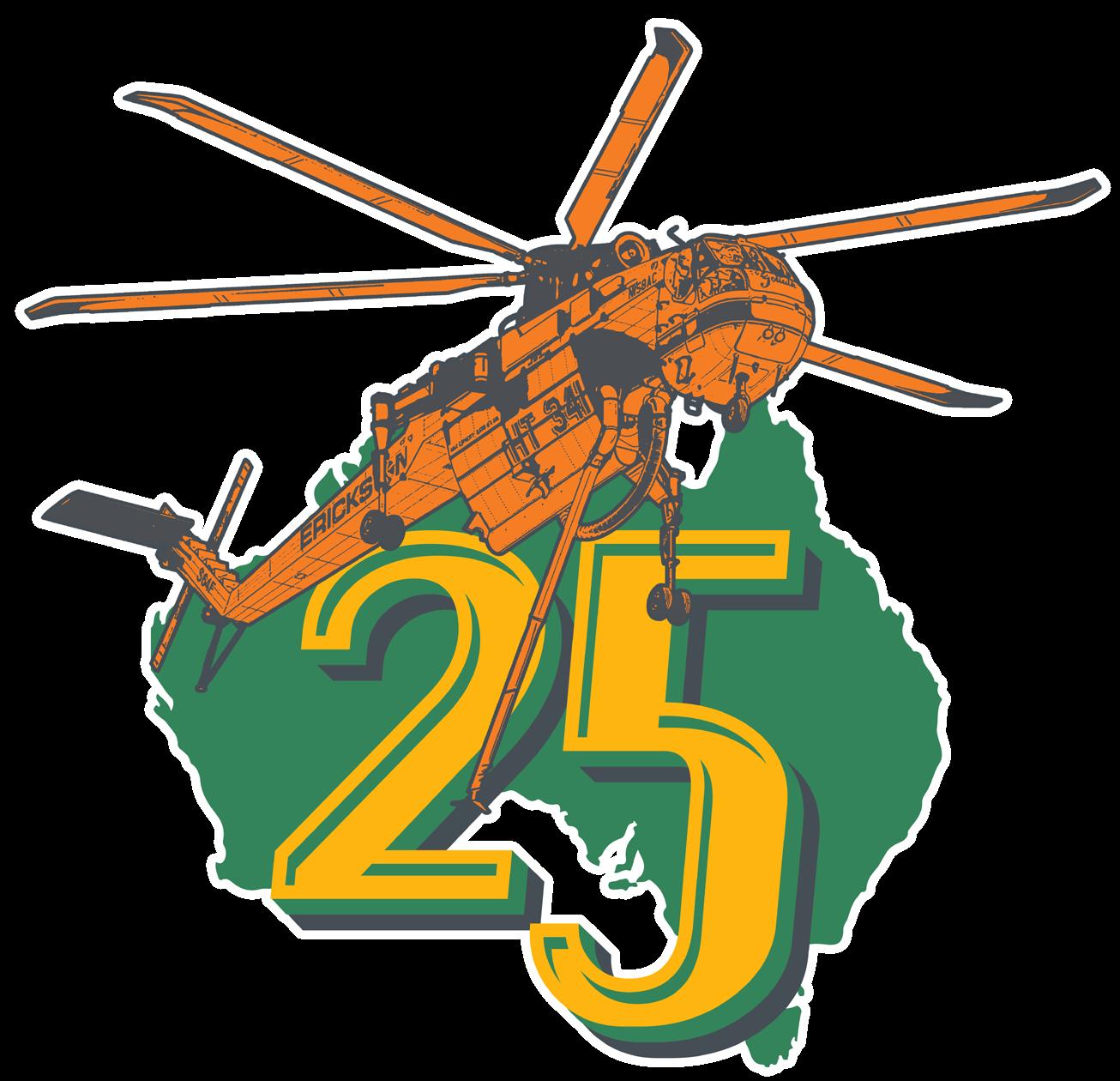
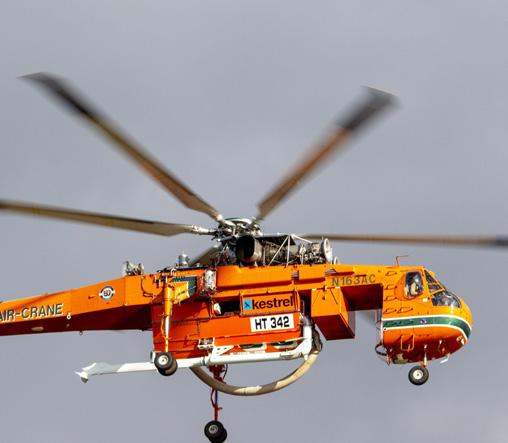


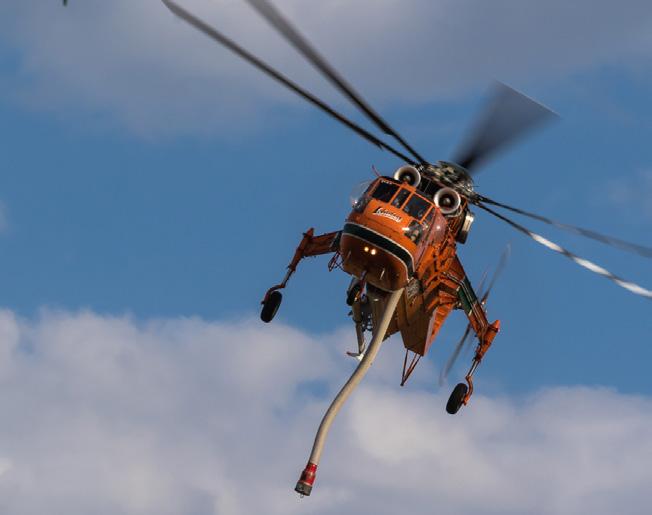
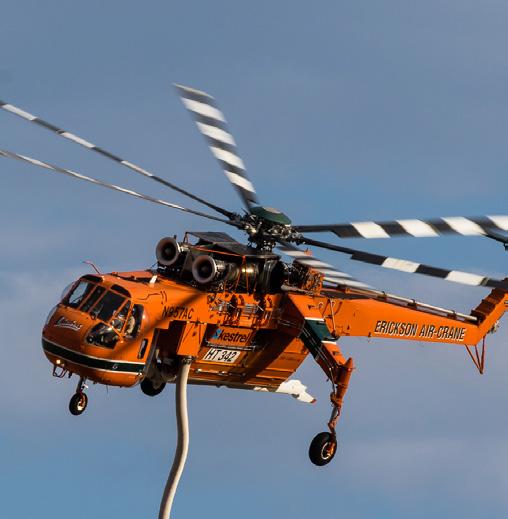

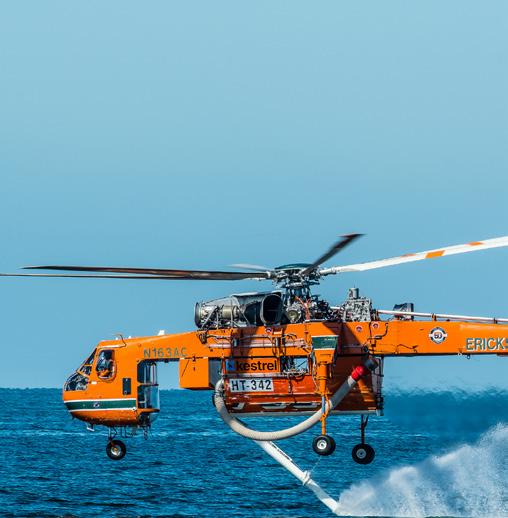

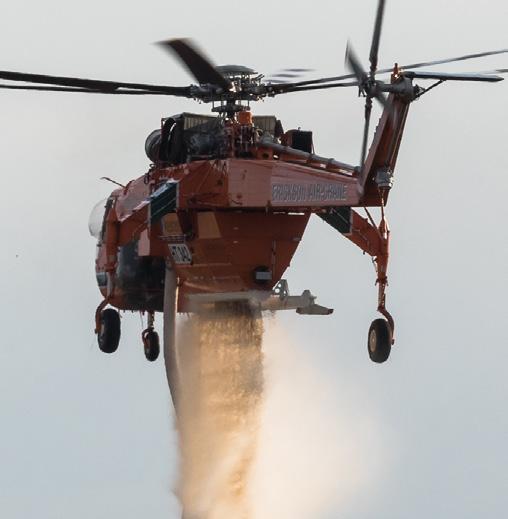
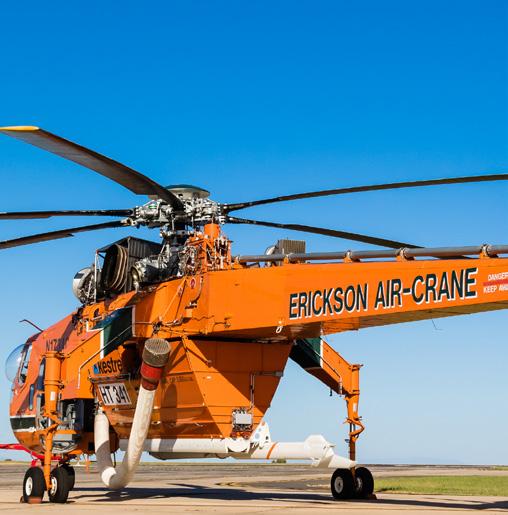
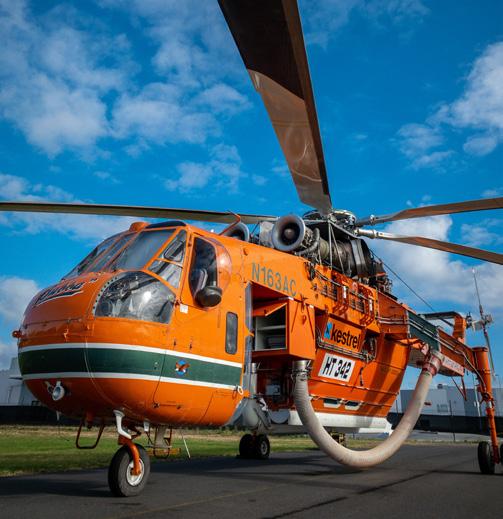
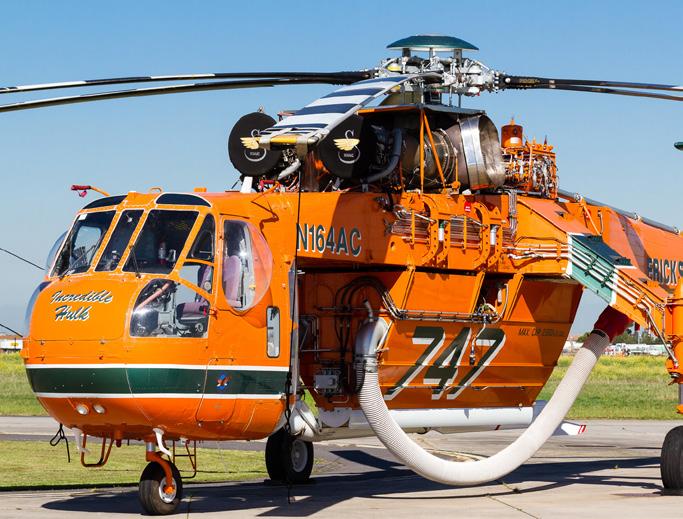
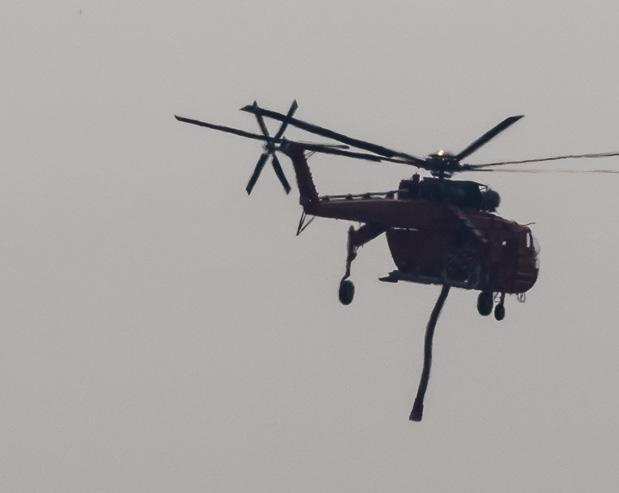




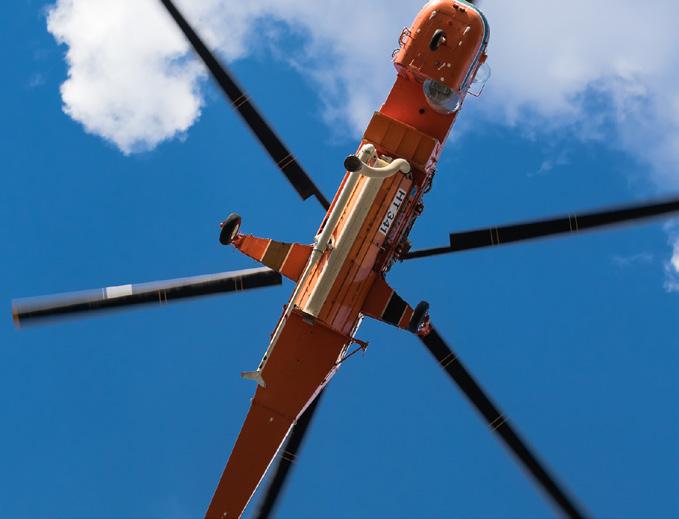
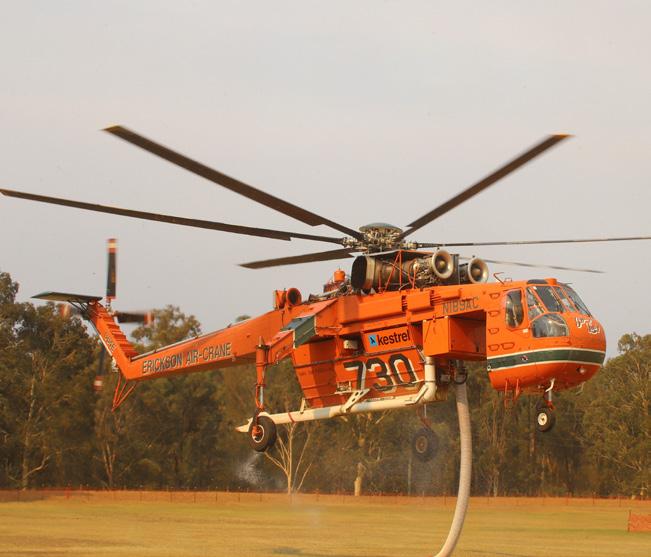
Dive into 25 years of partnership, collaboration, and dedication to the mission of saving lives and property throughout Australia.
To learn more and download the brochure, visit: pr.ericksoninc.com/aus25-aff

Coulson Aviation announced on February 22, 2023 that the company is providing aerial firefighting support services to Argentina via a CDN $6.8 million dollar governmentto-government (G2G) contract between the Canadian Commercial Corporation (CCC) and Argentina’s Ministry of Environment and Sustainable Development (MAyDS). Beginning in January 2023, one of Coulson’s CH-47 helitankers is on a contract for a four-month period to meet Argentina’s aerial fire needs, ensuring quick response to large-scale wildfires.
“The 10,000-liter capacity CH-47 is not only the largest payload commercially available helicopter, it’s also one of the fastest,” said Britton Coulson, President, and COO, of Coulson Aviation. “We have been operating this fleet type worldwide with excellent serviceability and look forward to demonstrating its capabilities to the Argentine Government.”
This G2G contract comes as a result of a Memorandum of Understanding (MOU) between CCC and MAyDS to bring Canadian firefighting expertise and technology to Argentina. It is financed by Argentina’s National Fire Management Program (Servicio Nacional del Manejo del Fuego – PNMF), which supports the monitoring, prevention, and management of the country's fire emergencies.
“As a country with almost 362 million hectares of forests, Canada understands the importance of protecting this
valuable natural resource and stands ready to share firefighting expertise and technology with Argentina,” said Reid Sirrs, Canadian Ambassador to Argentina.
CCC is Canada’s government-to-government contracting agency. Through CCC’s International Prime Contractor service, the Government of Canada brings qualified Canadian companies to meet the needs of government buyers around the world. Every G2G contract has the legal effect of being signed in the name of the Government of Canada and comes with an assurance of contract performance.
In September 2019, Coulson, in partnership with CCC, signed an agreement with the Bolivian government to supply its leading aerial firefighting support services by providing 18 crew members along with three helicopters, including two Sikorsky S-61 helicopters and a custom Chinook CH-47D. Coulson became the first Canadian company to send aircraft and their crews to combat fires in the Bolivian Amazon rainforest.
“For over 75 years, our government-to-government contracting approach has connected qualified Canadian companies to government buyers around the world,” Wilson Pearce, Senior Director, Global Business Development Operations Canadian Commercial Corporation (CCC). “We’re pleased to further this tradition by connecting Coulson Aviation and the government of Argentina through a G2G contract.?
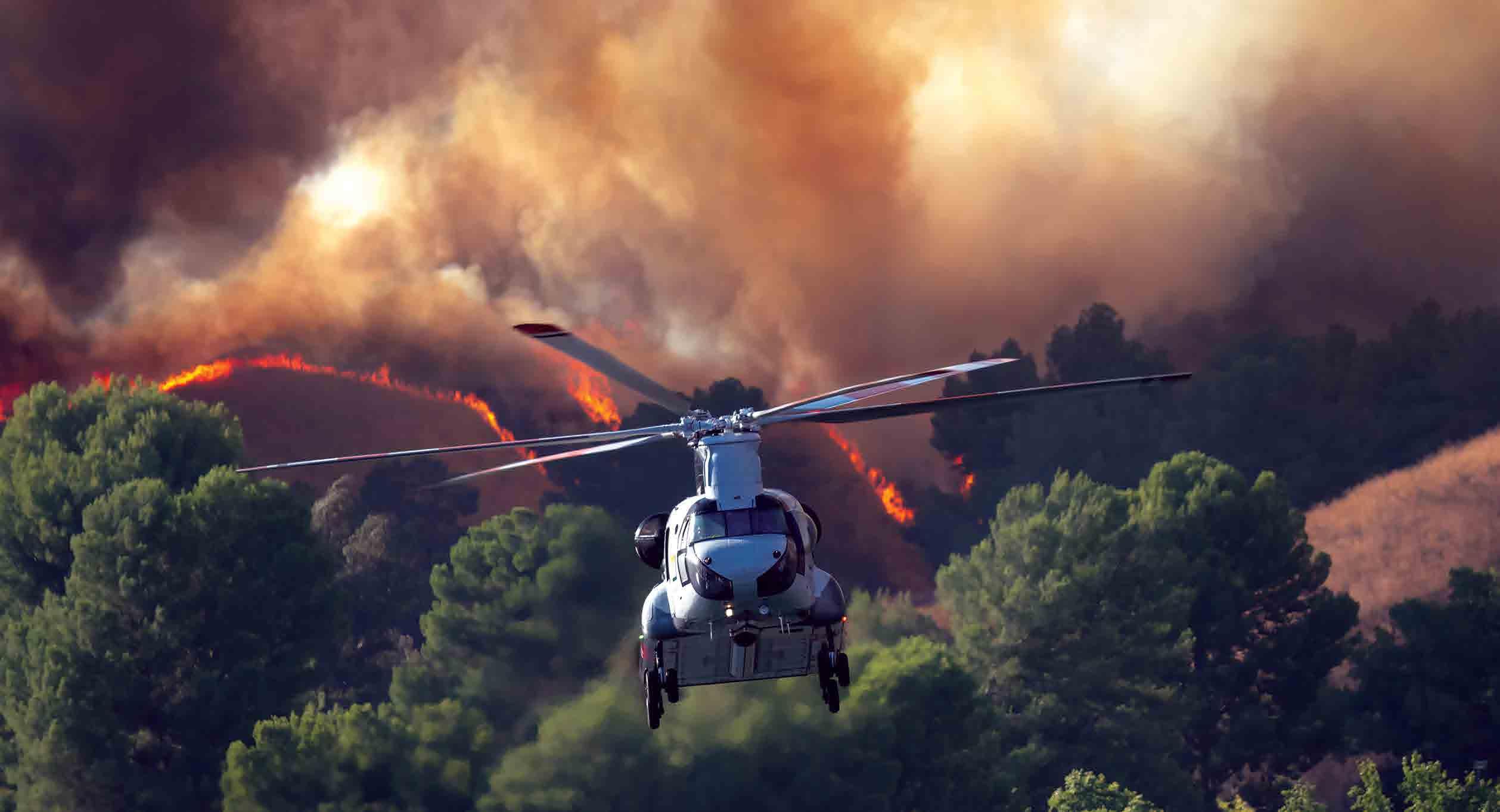
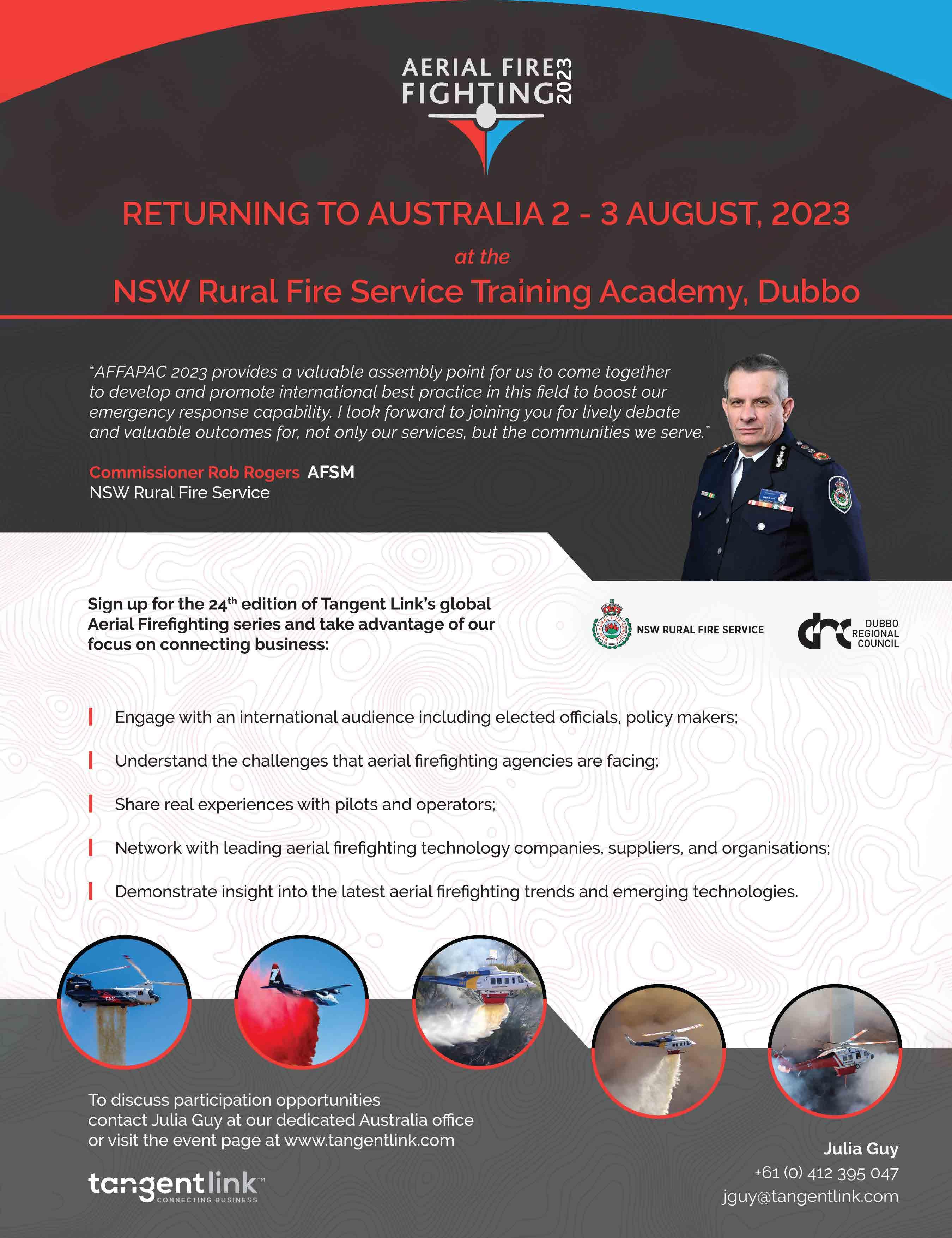


The United Aerial Firefighters Association announced April 3, 2023, two key appointments following the February 2023 launch of the association. Bureau of Land Management (BLM) veteran Paul Petersen was hired as the association’s first Executive Director and longtime US Forest Service (USFS)/US Department of Agriculture (USDA) Executive Tiffany Taylor joins the association as its Senior Policy Director.
Petersen will take over as Executive Director of UAFA on May 1, joining the association from the BLM in Reno, Nevada, where he currently serves as State Fire Management Officer. Petersen brings more than 30 years of industry experience to UAFA, starting his career as a seasonal wildland firefighter in 1992. He continued to rise through the ranks of the BLM, starting his current role in 2015. As Executive Director, Petersen will serve as the voice and face of UAFA and will be responsible for its overall management. He will collaborate with his team to build membership while continuing to cultivate his relationships with Congress, BLM, and the USFS.
“Protecting lives and property as a wildland firefighter and through my time at the BLM, I have seen firsthand the importance of aerial firefighting in protecting our communities and natural resources,” says Petersen. “UAFA will play a critical role in advancing the aerial firefighting industry and promoting the safety and well-being of our firefighters. I look forward to building our membership and developing relationships with key industry partners and policymakers to ensure our firefighters have the resources and support they need to keep us safe from the threat of wildfires. We will work together to elevate the standard of aerial firefighting and make a lasting impact on the future of our profession."
Taylor has started in her role as Senior Policy Director. She will develop and implement the association’s strategic policy objectives and will advocate for UAFA and its members with federal, state and local governments, partner industries and citizens. An almost 18-year veteran of the USFS and USDA, Taylor developed strong relationships to help address the needs of national agencies involved with wildfire and emergency management. She most recently served as Director for the Office of Contracting and Procurement for the USDA, and previously held the position in the USFS of Assistant Director, Business Management and Fire and Aviation. In that role, she was Chief of
the Contracting Office, supporting fire and aviation management and managed a staff of more than 40, providing acquisition support and analysis, while building relationships with key interagency partners and industry vendors.
“I am thrilled to join UAFA as its first Senior Policy Director. I will advocate for its members and develop and advance policies that make a real difference for aerial firefighters. The creation of UAFA is a crucial step in modernizing wildfire operations, as it introduces a united voice for the aerial firefighting industry. As climate change and other factors lead to longer, more intense wildfire seasons, the role of aerial firefighters will evolve and continue to become more important. It is critical that the interests of aerial firefighters are represented so that advancements in technology and safety can help to shape policy and operations moving forward. As Senior Policy Director, I will work with our members to make a meaningful impact on the future of aerial firefighting,” says Taylor.
John Gould, President of the UAFA Board of Directors and a founding member of the association, was part of the group that worked to bring Petersen and Taylor to the association.
"Adding two strong industry professionals like Paul and Tiffany to the UAFA team was a big win for the association,” says Gould. “Their combined expertise and leadership will be invaluable in advancing our mission and advocating for our members. With their help, we will continue to build strong relationships with key stakeholders and policymakers to ensure that aerial firefighters have the support and resources they need to keep our communities and natural resources safe. This is an exciting time for UAFA, and we look forward to continuing to build our team to support the future success of the aerial firefighting industry."

Aero-Flite Inc. announced May 2nd, 2023 that the U.S. Department of Transportation Federal Aviation Administration (FAA) has issued a Supplemental Type Certificate (STC) on the Dash 8-400AT airtanker. This approval clears the way for U.S. registered Dash 8-400ATs to fly aerial firefighting missions across all states, operated by Aero-Flite, a U.S. aviation operator with over 60 years of aerial firefighting experience based in Spokane, Washington.
Aero-Flite will be operating two Dash 8-400AT airtankers in the US in 2023, under a long-term, multi-year contract with the state of Washington. In addition, Dash 8-400 airtankers will be available for operation through all U.S. agencies, including the U.S. Forest Service, Bureau of Land Management, and individual state authorities. Aero-Flite crews have performed extensive training in anticipation of this certification, with seven pilots preparing to step into operations as soon as certification was granted. Training incorporates ground school, type training, simulator training, and a specialty on-wing training program.
“The Dash offers greater flexibility and responsiveness than larger airtankers, while still providing a comparable payload capacity. It can operate from shorter runways at higher elevations, positioned in smaller airtanker bases located closer to where wildfires occur, meaning a fast response to the fire and back. Plus, they burn significantly less fuel than a Type 1, larger airtanker, resulting in much lower operational costs while delivering a similar punch to the fire” shares Chris Niemann, General Manager at Aero-Flite. “We feel this airtanker type fills a growing need across the
country, providing a cost-effective option that can be shared between agencies and states, responding to wildfires in any jurisdiction, no matter the geography or tanker base infrastructure. It is agile, flexible, and powerful, providing advanced avionics, for safer operations, that older model airtankers don’t offer.”
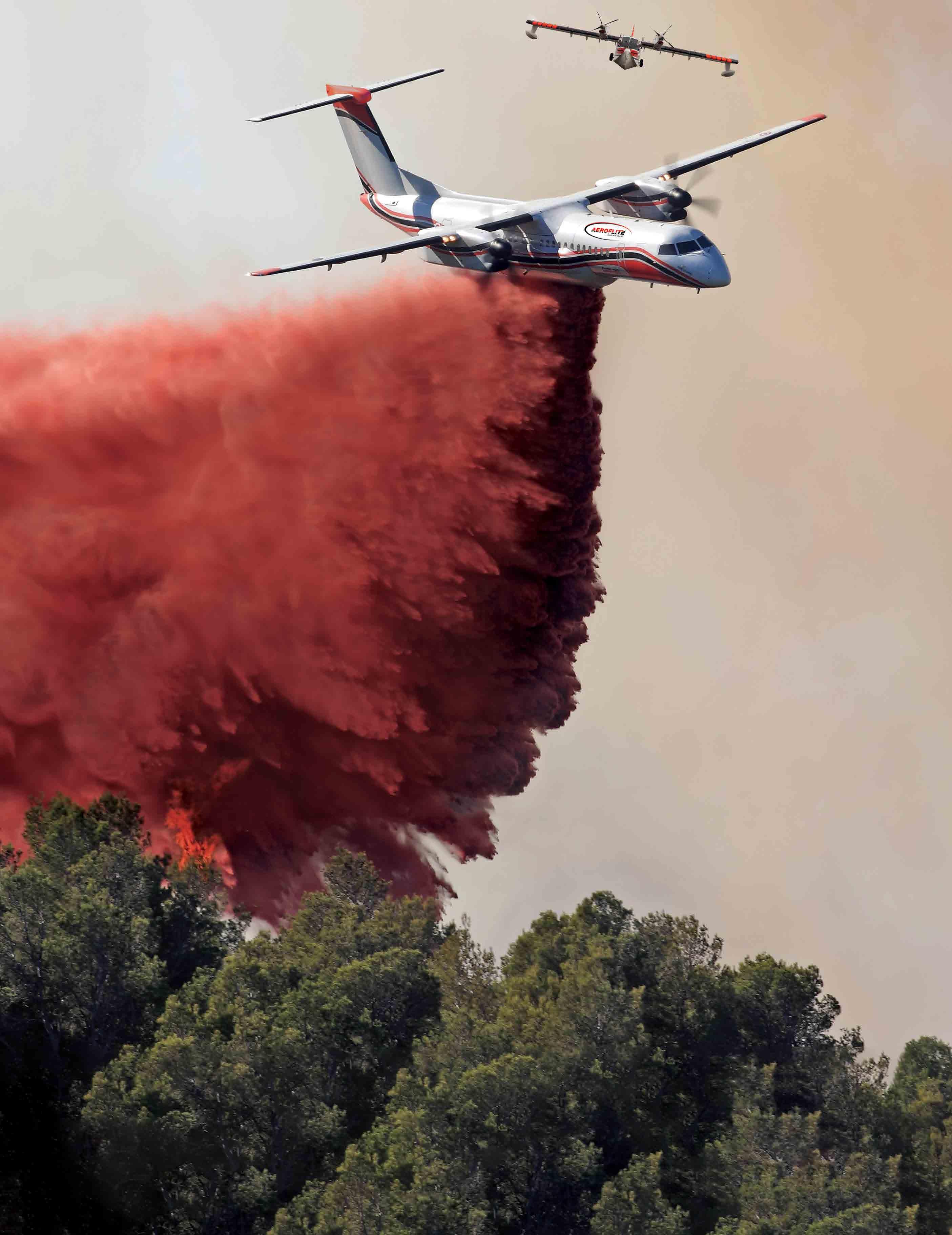
The Dash 8-400 airtanker has been operating since 2005, with seven currently in operation in France as multirole airtankers, plus nine airtanker-only aircraft in other countries ready to fight fires around the world in 2023. Conair Aerial Firefighting manufactures the aircraft into airtankers, dedicating more than a decade to research and development of this new airtanker type. “We evaluated 29 aircraft before selecting the Dash for modification into an aerial firefighting tool. The unanimous opinion of our flight operations experts was that the Dash exceeds all the Next Generation performance criteria within a maneuverable and stable platform.” says Jeff Berry, Vice President of Business Development at Conair. “An emerging challenge in the global aerial firefighting industry is the aging of airtankers and the long-term outlook of their airworthiness. The Dash addresses that challenge, offering a modern aircraft, with hundreds still in operation commercially today, providing parts and securing support from the Original Equipment Manufacturer (OEM) De Havilland Canada for decades to come, ensuring the ‘firetruck in the sky’ is ready to respond when the call comes.”
With this FAA approval, Aero-Flite plans to expand the fleet of Dash 8-400AT airtankers in order to respond to the need for additional air support to fight wildfires.
The fully compliant Digital P25 TDFM-136B series radios offer a critical piece of your fleet’s communication and coordination efforts. Call today to learn why Technisonic has more forest service certified airborne radios than any other manufacturer.
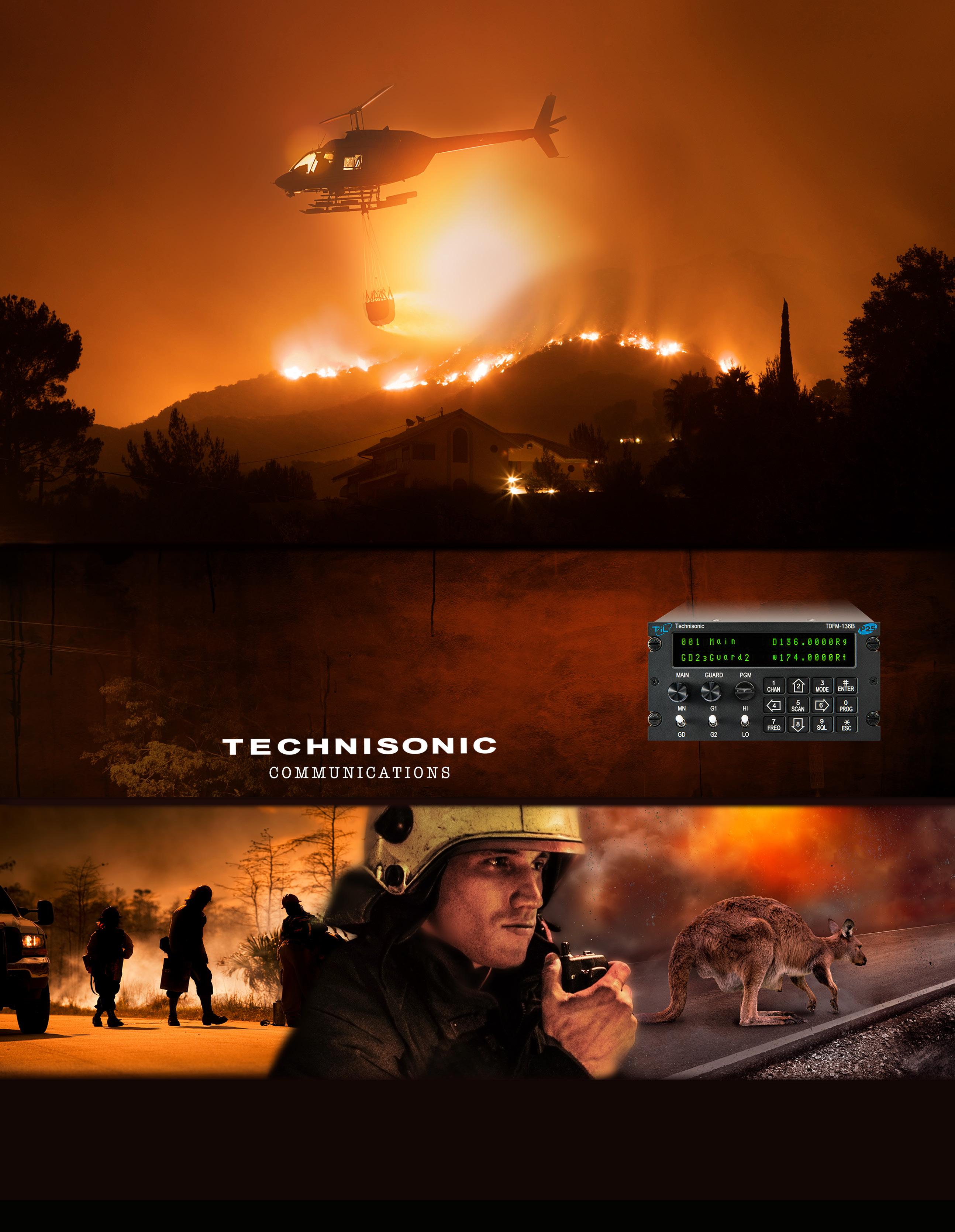
Slovenia this year, committed to building a dedicated aerial fire-fighting fleet that would begin operating in June 2023, using two brand-new 3,104-liter (800 Gallon) capacity Air Tractor AT-802 Fire Boss twin-seat, single-engine firefighting aircraft that would be supplemented next year with additional two single-seat AT-802A Fire Bosses. Slovenian defense minister Marjan Šarec said on June 17th, 2023, in Ljubljana during a ceremony celebrating the signing of an agreement for the acquisition of four Air Tractor planes from the Spanish, Viver-based company Air Tractor Europe (ATE).
The agreement on behalf of Slovenia was signed by Minister Šarec and Leon Behin, the Acting Director General of the Slovenian Ministry of Defence (MoD) under the Uprava Republike Slovenije za zašito in reševanje (URSZR, Administration of the Republic of Slovenia for protection and rescue). Rafael Selma, ATE's Chief Executive Officer (CEO) signed the agreement in the name of the Spanish company that represents in Europe, Africa, and the Middle East the U.S., Texas-based aircraft manufacturer Air Tractor Inc., the Original Equipment Manufacturer (OEM) of the AT-802.
This purchase marked a new era in the fight against natural disasters in Slovenia, Šarec said that the decision to buy the planes was Ljubljana's immediate response to the realization that the country needed to improve its aerial ability for fighting wildfires, something that became obvious in July 2022 when Slovenia faced the devastating Karst wildfire that required international aid and enormous efforts to be controlled.
The aircraft purchased by the MoD would operate under civilian (S5-) registration within a special aerial fire-fighting unit that would be established within URSZR. For the purpose of putting the unit into operational use, training of new pilots and related technical personnel will be organized by ATE, assisting Slovenia in putting its Air Tractors to use in the summer of 2023.
While various airports across Slovenia would be used for aerial firefighting, the unit's home base is yet to be decided, with options being Brnik international airport, near Ljubljana, or Cerklje ob Krki Air Base, located near Brežice close to the border with Croatia.
Slovenia's program for the establishment of aerial firefighting capabilities was approved at a government session held in Ljubljana on January 30th, 2023. A new dedicated national
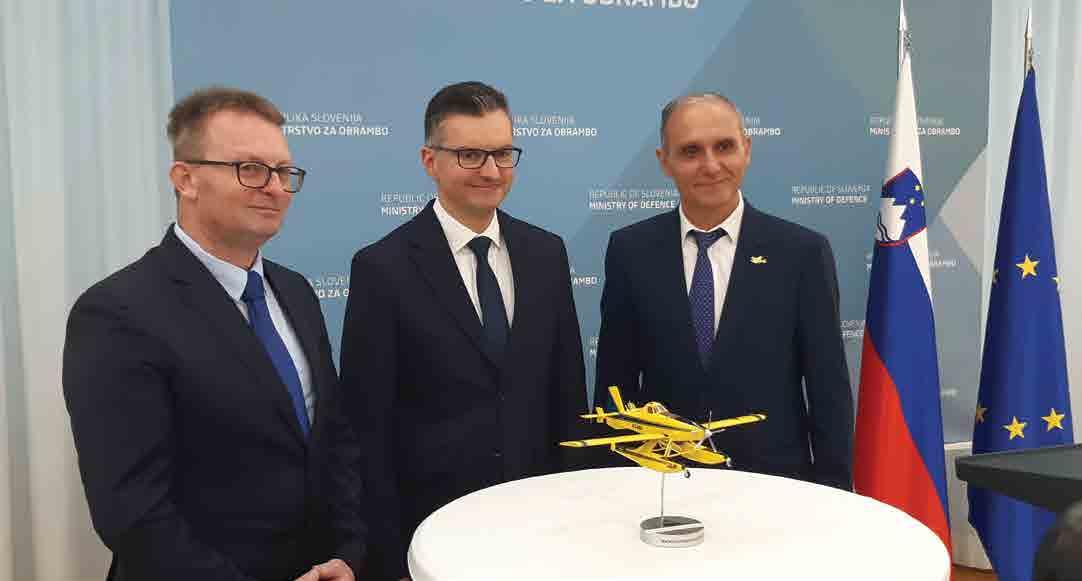
development project was launched for the construction of aerial firefighting capabilities in the period 2023-2026 with a maximum of six small fire-fighting planes, four firm orders, and two options.
Being co-financed (85%) by the European cohesion policy funds for the period 2021-2027, the Slovenian project now focuses on the initial acquisition of four planes and establishing an OEM-backed training and logistical system that would allow URSZR planes to become part of the common aerial fire-fighting fleet of the EU Civil Protection Mechanism (rescEU) that in addition to protecting Slovenia will also assist in fighting wildfires within the EU as well as in other nations in need.
In case the option for the acquisition of additional two planes is implemented, Slovenia would further increase its Air Tractor fleet during or after 2025.
Over 1,000 Air Tractor AT-802 planes have been built since 1992 with the AT-802 aircraft now a fire-fighting standard for many wildfire-prone countries. The Air Tractor AT-802 is already in use by government entities and private operators in the United States, Canada, Australia, South Africa, Chile, Argentina, Brazil, Spain, Portugal, France, Italy, Sweden, Israel, Cyprus, Croatia, Montenegro, Macedonia, Greece, Turkey, and Saudi Arabia.
According to ATE, serious interest in purchasing the AT-802 plane has so far also been demonstrated by Bosnia and Herzegovina. Aside from selling planes, ATE is also active in leasing AT-802s and providing aerial fire-fighting services to various governments in Europe and beyond with record 50 ATE AT-802 planes expected to operate this year in Spain, Portugal, Turkey, Greece, Cyprus, and Saudi Arabia.
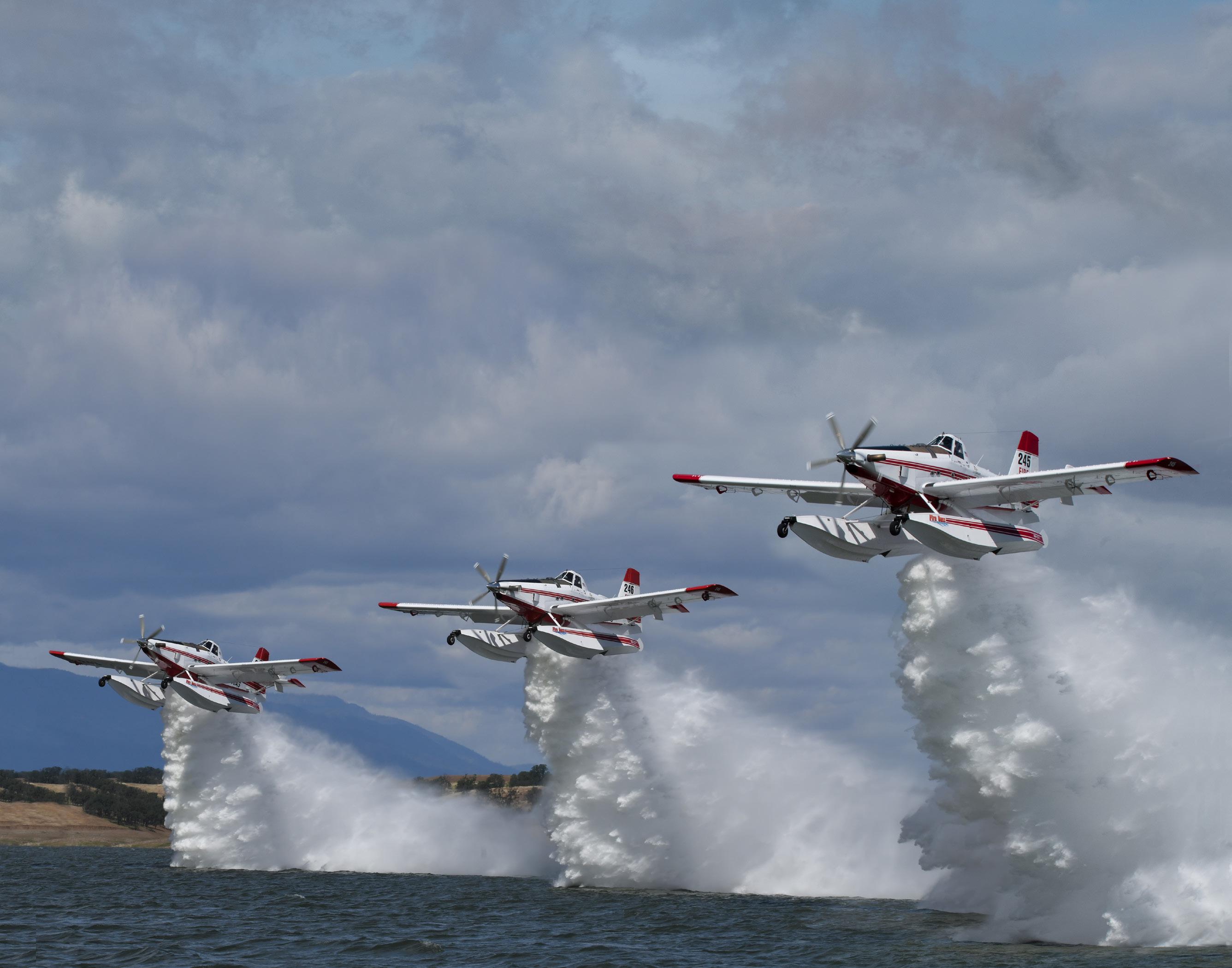
Perimeter Solutions announced in April that the company has entered into an agreement with Shur-Sales & Marketing Inc, making Shur-Sales a manufacturer’s representative for Perimeter Solutions' comprehensive line of firefighting solutions with special emphasis on Class A Foam and Ground Applied Retardant.
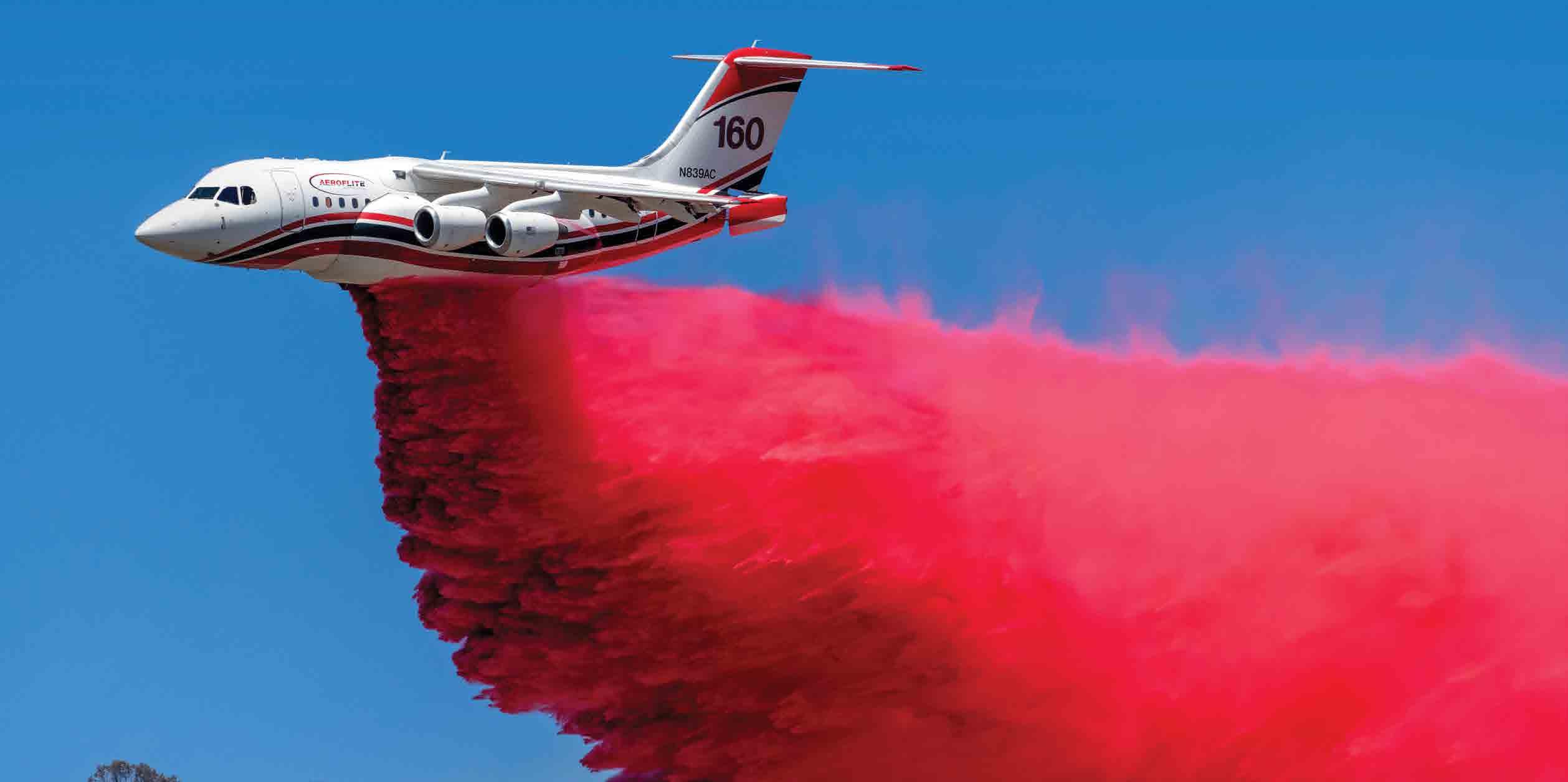
Perimeter Solutions produces PHOS-CHEK® ground-based fire retardant to help communities improve their resilience and rapid response to wildfire. The company also offers PHOSCHEK and SOLBERG® Class A Foam. Class A foam solution is used for wildland firefighting and is also used by municipal fire departments to extinguish structural Class A fires.
Shur-Sales is a multidivisional independent manufacturer’s representative firm that manages sales forces in the Industrial Safety Equipment and Firefighting Equipment marketplaces. Each division has a dedicated sales force, focusing on their specific markets. The Fire Service Team will represent Perimeter Solutions in the following states: Colorado, Montana, Wyoming, Idaho, Utah, Arizona, New
Mexico, Nevada, Washington, Oregon, California, Texas (El Paso County), Hawaii, and Alaska.
The Shur-Sales team has added staff to its Fire Service Team led by Product Manager Kevin Shea, and they will collaborate with Perimeter Solutions sales and distribution, led by Todd Wayshville, Perimeter Solutions’ Sales Director for the Americas. This gives Perimeter additional outside personnel with training and technical expertise who will work to get the company’s products and services in front of decision makers within fire departments and other fire safety and management organizations.
“Shur-Sales and Perimeter Solutions share a passion for firefighter safety, and this partnership will expand on our mission to protect property and save lives,” says Jeff Emery, President of Global Fire Safety for Perimeter Solutions. “With Shur-Sales' expertise and dedicated sales force, we are confident that we can better serve our customers and increase their awareness of our range of firefighting solutions available to protect their communities."
Image by Marty Wolin• USDA Forest Service certified
Working with global fire safety agencies and alongside frontline firefighters we’re always looking to make our aerial fire retardants better. More effective. Safer. Easier deployment. Higher visibility. Hassle-free mixing and storage.
In the critical area of environmental performance, our PHOS-CHEK LCE20-Fx fire retardant represents a next generation technology –featuring lower aquatic toxicity, low impact on vegetation and high efficiency in use. Beyond taking care of our natural environment, that makes PHOS-CHEK LCE20-Fx safer to use, easier to handle and reduces disposal costs.


Let us know how we can help you with better products and services. We’re listening.
• 100% premium-grade phosphate product
• Superior aerial visibility
• Low environmental footprint


• Improved aquatic toxicity
• Improved product stability
• Easier handling
• Reduced maintenance costs
• Enhanced product safety
Wisconsin Army National Guard UH-60 Black Hawk aircrew members with the Madison, Wisconsin-based 1st Battalion, 147th Aviation Regiment trained to drop water on wildfires on April 10, 2023, using a Bambi bucket at Fort McCoy while the Fort McCoy prescribed burn team completed a prescribed burn.
The post-prescribed burn team includes personnel with the Fort McCoy Directorate of Emergency Services Fire Department; Directorate of Public Works (DPW) Environmental Division Natural Resources Branch (NRB); Directorate of Plans, Training, Mobilization, and Security; and the Colorado State University Center for Environmental Management of Military Lands who work in partnership with the post’s DPW team.
Personnel with the Fort McCoy prescribed burn team helped coordinate with the Black Hawk helicopter and crew to complete water drops on specific areas during a prescribed burn at Training Area B-18 near Badger Drop Zone on South Post.
Fort McCoy Forester Charles Mentzel with the Forestry Office of the DPW’s NRB said the training with the Wisconsin National Guard crews went well.
“It went very well,” Mentzel said. “Our feedback from them was that it went great, too. There were six drops that were accomplished by them. They told us they got two or three pilots trained. And the prescribed burn accomplished our goal of setting back that area to an oak savannah.”

Mentzel also said the prescribed burn helped to reduce fire hazards in the area.
For the April 10 training, Big Sandy Lake on South Post was used as a water source for the Black Hawk crew to draw their water from. From there it was only a few miles to the drop area where a prescribed burn was taking place.
According to the Wisconsin National Guard, bucket training allows Black Hawk flight crews to sharpen their skills. Understanding how to use the bucket can be used to potentially assist people in a fire emergency, such as a wildfire response.
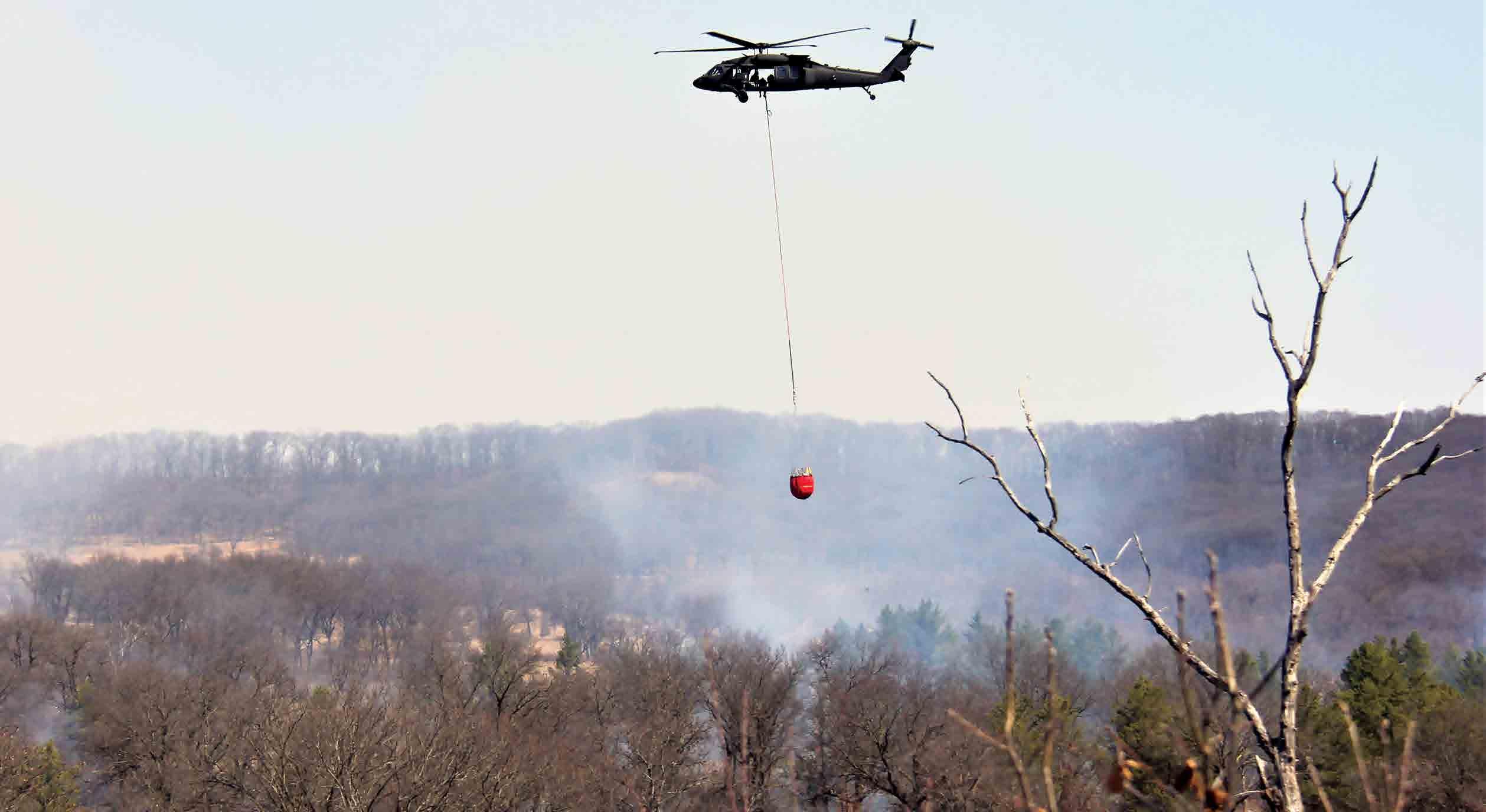
In previous articles about this same kind of training, Mentzel described how Fort McCoy is an ideal place for training. He said every time they complete the training it builds on a continuing relationship between the Fort McCoy prescribed burn team and the Wisconsin National Guard.
“We are a military training base, have the facilities to support the helicopters, and the land base to do the training,” Mentzel said in a past article. “The water sources also are on the installation, so helicopters don’t have to cross any public roadways while carrying water to the fire.”
More prescribed burns will likely take place across Fort McCoy during spring 2023 and later in the year as conditions permit.
Fort McCoy’s motto is to be the “Total Force Training Center.” Located in the heart of the upper Midwest, Fort McCoy is the only U.S. Army installation in Wisconsin.
The installation has provided support and facilities for the field and classroom training of more than 100,000 military personnel from all services nearly every year since 1984.

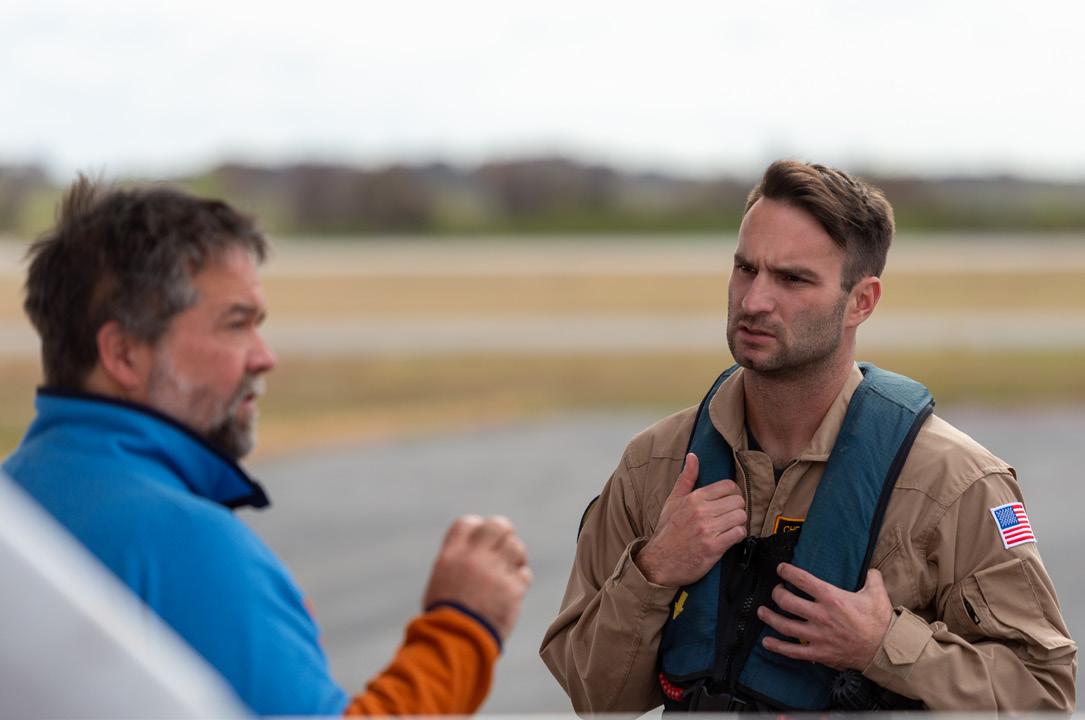

A fleet of 70 aerial firefighting aircraft has deployed for the fire season from British Columbia (BC) based Conair, a mix of fixed-wing aircraft including Bird Dog lead planes, amphibious waterbombers, and airtankers. Included in this group is the Dash 8-400AT, the newest airtanker available in the world today, converted by Conair. Four of these new large airtankers worked the month of May in Alberta, a first for the province, responding to a challenging and early fire season, supporting firefighter partners. The Dash 8-400 airtanker, while new to Canada, has been operating since 2005.
The multi-role version of this aircraft is owned and operated by the Government of France, a fleet of eight built by Conair, with each aircraft offering a variety of emergency response roles, including medevac, passenger, cargo, combi, plus airtanker capability. Conair adapted this aircraft into an air tanker-only version, the Dash 8-400AT, and introduced it to Australia in 2020, Alaska in 2021, and BC in 2022.
The fleet has grown steadily over the last several years as new airtankers are certified by Transport Canada, the only regulating authority in the world recognizing aerial firefighting as its own air operation classification, with stringent guidelines in place to ensure airtankers operating in Canada do so safely. This year in Canada, BC welcomes three Dash 8-400ATs, with one positioned in Fort St. John and two based in Penticton, taking the place of the nowretired Convair CV580 fleet.
“Retiring our legacy fleet of Electra L188 and Convair CV580 aircraft was necessary as the supply of parts was dwindling globally. We reached a point where we could not guarantee the serviceability needed for an emergency response aircraft so we proactively replaced our fleet with a modern airtanker,” shares Jeff Berry, Vice President of Business Development with Conair. “The Dash is fully supported by De Havilland Canada, the Original Equipment Manufacturer,
ensuring an abundant supply of parts is readily available to keep the airtanker flying for decades.
This provides the level of reliability we require.” And Conair’s fleet of Dash 8-400AT is expanding, with two more currently in production this year, with more on the horizon as demand grows. But Canada isn’t limited to just these three Dash 8-400 airtankers for wildfire response. Through long-standing interagency agreements, aerial firefighting airtankers on contract with Canadian jurisdictions and US states can be shared if the need arises. An example, utilizing the Northwest Wildland Fire Protection Agreement, Alaska has on loan to Alberta two of its contracted Dash 8-400AT airtankers. If provinces or territories across Canada need additional airtanker support, Transport Canada certified tankers are ready to assist through established compacts. Two Dash 8-400AT airtankers, for instance, are currently on contract through Washington state, ready to support Canada if conditions permit and the need arises.
The Dash 8-400AT fits the bill for all regions across Canada, filling a growing niche in the aerial firefighting industry. It offers a large airtanker payload capacity, capable of dropping up to 10,000 liters (2640 Gallons) of retardant, foam, or water, while still being able to operate out of smaller airtanker bases with 5,000’ runways at higher elevations, positioned closer to where wildfires occur. “As an aerial firefighting pilot operating in mountainous terrain, I have greater confidence in the Dash over other airtankers I have flown. The sheer power and efficiency of the PW150A engines is a wonderful thing. It takes off fast and gets to the fire as fast as a jet,” shares Captain Chris Bingham. “The tanker also burns far less fuel than other large airtankers. In some instances, the tanker can drop more than double the payload for fuel burned. This means we can continue more reloads and returns to the fire before requiring a refueling stop. That’s 10,000 liters per drop, drop after drop.”


The Future of Aerial Firefighting: The Dash 8-400AT

Fast, fuel efficient and tactically flexible. A modern airtanker with a 10,000 litre / 2,642 US gallon capacity to drop water, retardant, or gel over diverse geography. Setting the standard for Next Generation aircraft with OEM support to keep the firefighter flying for decades.
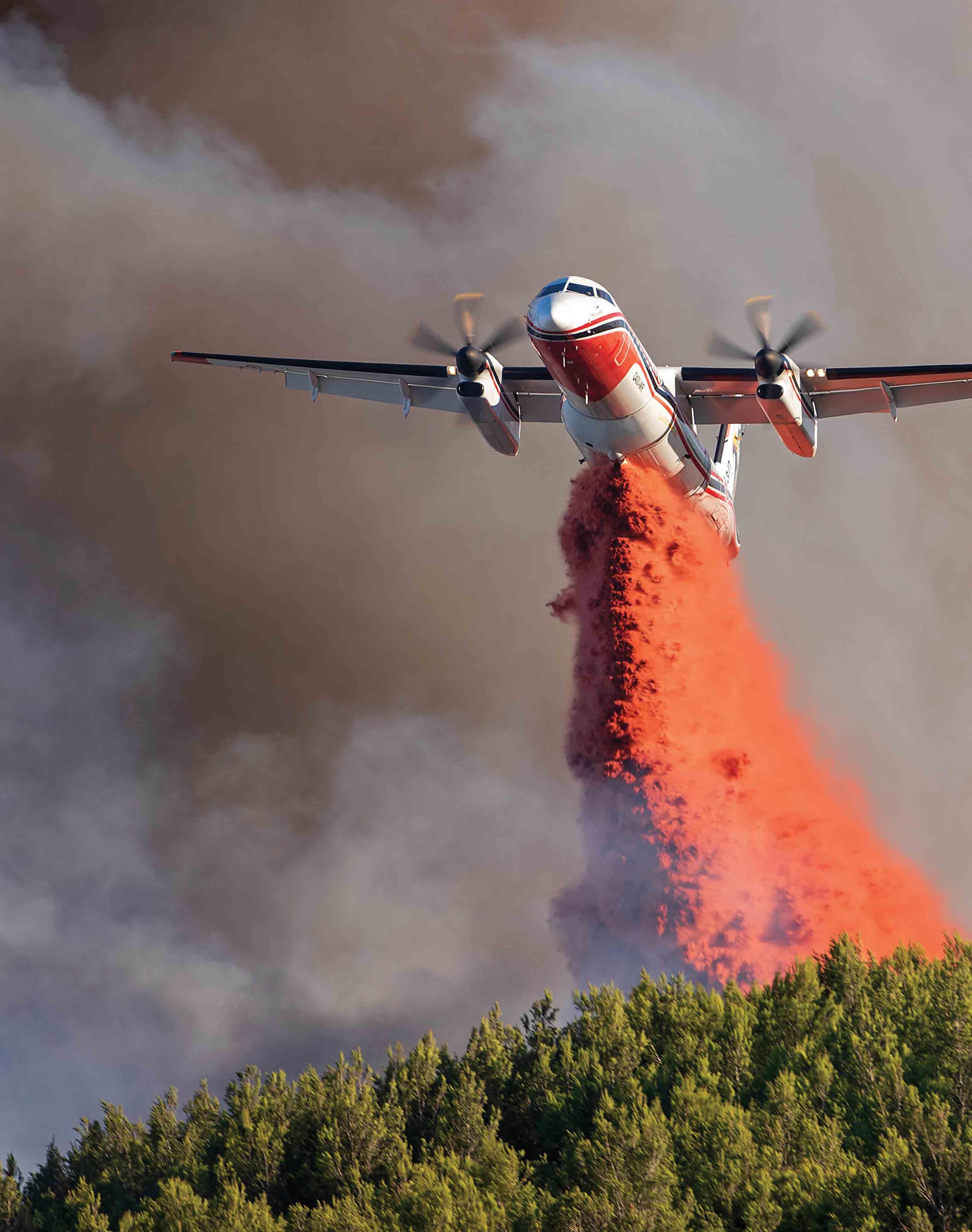
The Republic of Slovenia received its first Air Tractor AT-802 single-engine fire-fighting plane on May 9th, 2023, the nation's Ministry of Defence confirmed. The twin-seat aircraft in a landbased configuration (with classical, tricycle-type landing gear) landed at Ljubljana/Brnik "Jože Pu?nik" international airport after a flight that began on the same morning at Viver airport in Spain and proceeded towards Slovenia with a single stop at Calvi/Sainte-Catherine airport on Corsica, France.
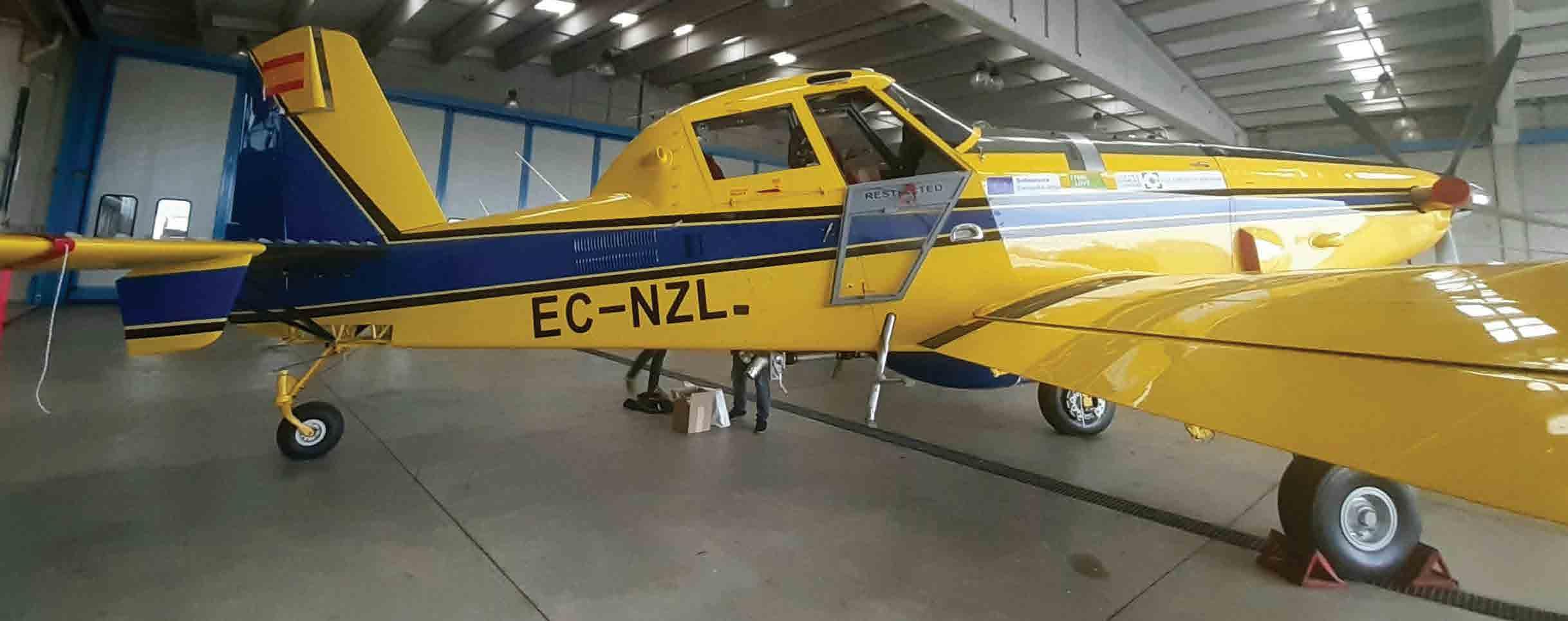
The aircraft arrived in Slovenia with Spanish temporary registration EC-NZL (ex N85152, c/n 802-0990) that will be replaced by the Slovenian civil registration S5-BZR.
Another plane in an identical configuration (twin-seat AT802 with classical tricycle-type landing gear) is scheduled for delivery to Slovenia by June 15th this year. The 4-strong fleet will be complete in March 2024 when two amphibianconfigured single-seat AT-802A Fire Boss planes will arrive in Slovenia. Meanwhile, the twin-seat planes will return to Spain, where they will get floats installed before the end of October 2023, resulting in the change of their designation from AT-802 to an AT-802 Fire Boss.
Following the devastating Karst wildfire in July of 2022, Slovenia committed to promptly build a dedicated aerial firefighting fleet that would rely on four brand-new 3,104-liter capacity Air Tractor AT-802 Fire Boss planes, Slovenian defense minister Marjan Šarec said on 17 April in Ljubljana during the ceremony for signing the Agreement for the acquisition of 4 Air Tractor planes from the Spanish, Viverbased company Air Tractor Europe (ATE).
Informing that the purchase marks a new era in the fight against natural disasters in Slovenia, Šarec said that the decision to buy the planes was Ljubljana's immediate response to the awareness that the nation did not possess the proper aerial means for fighting wildfires.
The Agreement on behalf of Slovenia was signed by Minister Šarec and Leon Behin, the Acting Director General of the Slovenian Ministry of Defence (MoD) subordinated Uprava Republike Slovenije za zaš?ito in reševanje (URSZR, Administration of the Republic of Slovenia for protection and rescue). Rafael Selma, ATE's Chief Executive Officer (CEO), signed the Agreement in the name of the Spanish company that represents in Europe, Africa, and the Middle East the U.S., Texas-based aircraft manufacturer Air Tractor Inc. is the Original Equipment Manufacturer (OEM) of the AT-802 plane.
The aircraft purchased by the MoD would operate under civilian (S5-) registration within a special aerial fire-fighting unit that would be established within URSZR. For the purpose of putting the unit in operational use, training of Slovenian pilots and related technical personnel would be organized by ATE that would help Slovenia to put its Air Tractors in use in the summer of 2023. While various airports across Slovenia would be used for the purpose, the unit's home base is yet to be decided.
Slovenia's program for the establishment of aerial firefighting capabilities was approved at a government session held in Ljubljana on January 30th, 2023. A new dedicated national development project was launched then for the construction of aerial firefighting capabilities in the period 2023-2026 with a maximum of 6 small fire-fighting planes, 4 firm orders, and two options.
Being co-financed (85%) by the European cohesion policy funds for the period 2021-2027, the Slovenian project now focuses on the initial acquisition of 4 planes and establishing an OEM-backed training and logistical system that would allow URSZR planes to become part of the common aerial fire-fighting fleet of the EU Civil Protection Mechanism (rescEU) that are part of protecting Slovenia will also help extinguishing wildfires within the EU as well as in other nations in need.
In case the option for the acquisition of additional two planes is implemented, Slovenia would further increase its Air Tractor fleet during or after 2025.

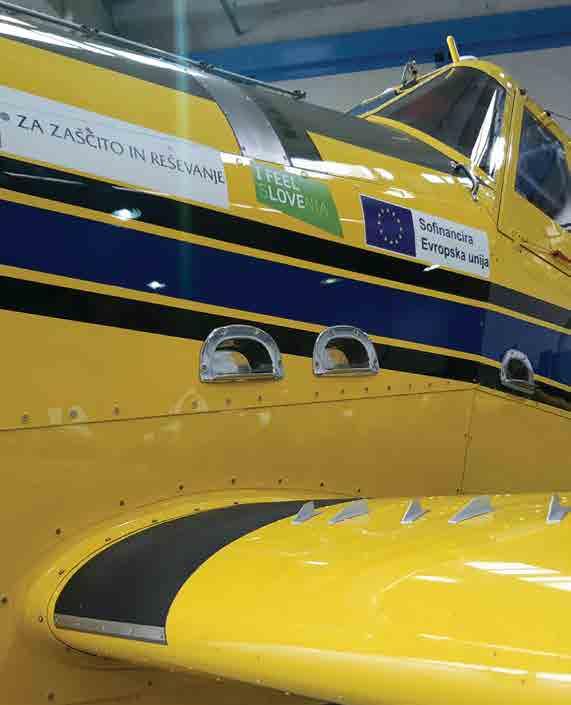
Over 1,000 Air Tractor AT802 planes have been built since 1992, and this aircraft is now a fire-fighting standard for most wildfires-prone countries. It has already seen service with governments and private operators in the United States, Canada, Australia, South Africa, Chile, Argentina, Brazil, Spain, Portugal, France, Italy, Sweden, Israel, Cyprus, Croatia, Montenegro, Macedonia, Greece, Turkey, and Saudi Arabia.
According to ATE, serious interest in purchasing the AT-802 plane has so far also been demonstrated by Albania and Bosnia-Herzegovina. Aside from selling planes, ATE is also very active in leasing AT-802s and providing aerial fire-fighting services to various governments in Europe and beyond, with a record 50 ATE-owned/ controlled AT-802 planes expected to operate this year in Spain, Portugal, Turkey, Greece, Germany, France, Cyprus and Saudi Arabia.
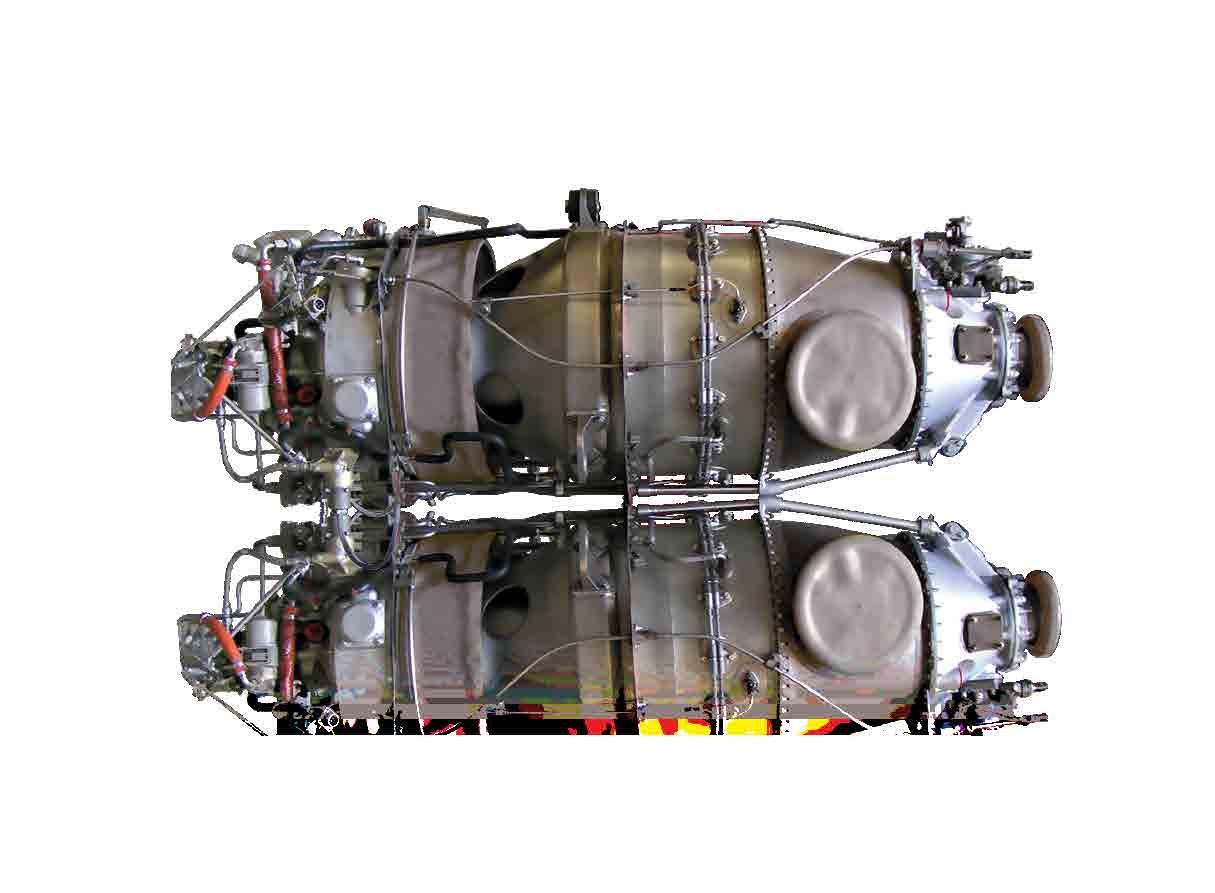
On May 26th, 2023, the U.S. District Court for the District of Montana issued a ruling in a case brought by Forest Service Employees for Environmental Ethics (FSEEE) against the U.S. Forest Service (USFS) seeking to enjoin the USFS’ use of aerial fire retardants during firefighting activities. The Court ruled that USFS may continue using aerial fire retardants while pursuing a Clean Water Act (CWA) permit. This ruling came after a broad coalition of communities and landholders affected by wildfires filed an amicus brief and participated in oral arguments supporting USFS’ ability to use aerial fire retardants.
“Today’s decision is a victory for communities and industry stakeholders whose livelihoods depend on the Forest Service’s ability to successfully fight catastrophic wildfires. Fire retardant is one of the most important tools we have in our toolbox, and the Court’s decision to safeguard this tool was ultimately a decision to prioritize lives, land, businesses, and forested environments. I am grateful to the Court for considering how truly important this decision was to California forests and the American West as a whole.”
– Matt Dias, President and CEO of the California Forestry Association“Montana and states across the West need access to every tool available to suppress wildfires to protect lives, property, and natural resources. The Court’s decision allowing the Forest Service to continue the use of aerial fire retardants will lead to safer firefighting conditions for firefighters on the ground and more effective suppression. We applaud the decision and can move forward confidently into the peak of our fire year knowing we can continue to prioritize the protection of human lives and property.” – Amanda
Kaster, Director, Montana Department of Natural Resources & Conservation“The health, vitality, and stability of the communities within which our AFRC members work are reliant on prompt and effective fire suppression efforts by the Forest Service and other federal agencies. AFRC’s members depend on the health and productivity of public forests, and many of our members own private forestlands that are directly adjacent to public forests managed by federal agencies. We are pleased with the outcome of this case, because the ability to deploy aerial fire retardant until a CWA permit is issued will help protect local communities, national forests, and private
forestlands.” – Travis Joseph, President and CEO of the American Forest Resource Council“Catastrophic wildfires can endanger fish and wildlife species, compromise air quality, and threaten the safety of Washington’s communities. The greatest threat of catastrophic wildfire today is in U.S. National Forests, and because fire ignores ownership boundaries, private forest landowners rely on U.S. Forest Service to deploy aerial fire retardants to suppress these wildfires. This decision will protect healthy, sustainable forests across Washington State, benefiting our air and water quality as well as the flourishing wildlife habitats in and around our forests.” – Jason
Spadaro, Executive Director of the Washington Forest Protection Association“Today’s court decision will literally save lives. The aerial application of fire retardant is a critical part of the U.S. Forest Service’s firefighting strategy, and it unquestionably reduces a fire’s rate of spread, intensity, and danger to firefighters and the public. Taking this tool away would undermine the health and safety of our communities and cause significant economic harm to businesses navigating the constant threat of wildfire. Because the court rightfully chose to prioritize public safety, Americans across the West can breathe a sigh of relief.” – Ken Pimlott,
Former Director of CAL FIRE“Fire retardant has no substitute — not water, fuel breaks or ground crews. Prohibiting its use would harm forest conservation, threaten endangered species and impede our ability to save lives. I am glad the court recognized and acted upon the importance and urgency of this matter.” – Brian Fennessy, Fire Chief of the Orange County Fire Authority
Over the last several months, the California Forestry Association joined the Town of Paradise, California, which was devastated in the 2018 Camp Fire; Butte and Plumas counties, California; Rural County Representatives of California; American Forest Resource Council; National Alliance of Forest Owners; Federal Forest Resource Coalition; Montana Wood Products Association; Oregon Forest Industry Council; Washington Forest Protection Association; California Farm Bureau Federation; National Wildfire Suppression Association; and California Women for Agriculture in petitioning the U.S. District Court for the District of Montana to join the case brought in October 2022 by Forest Service Employees for Environmental Ethics.
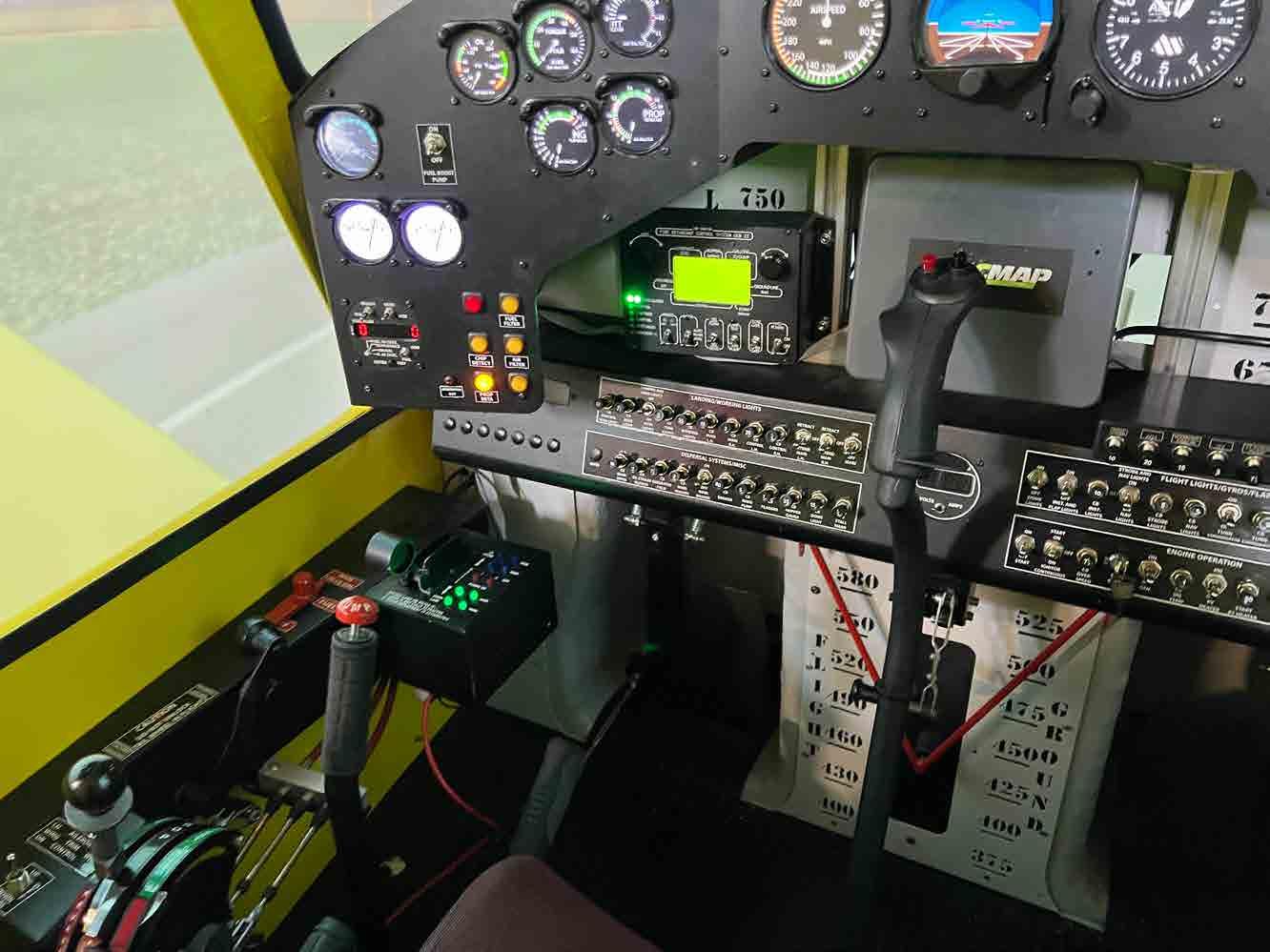
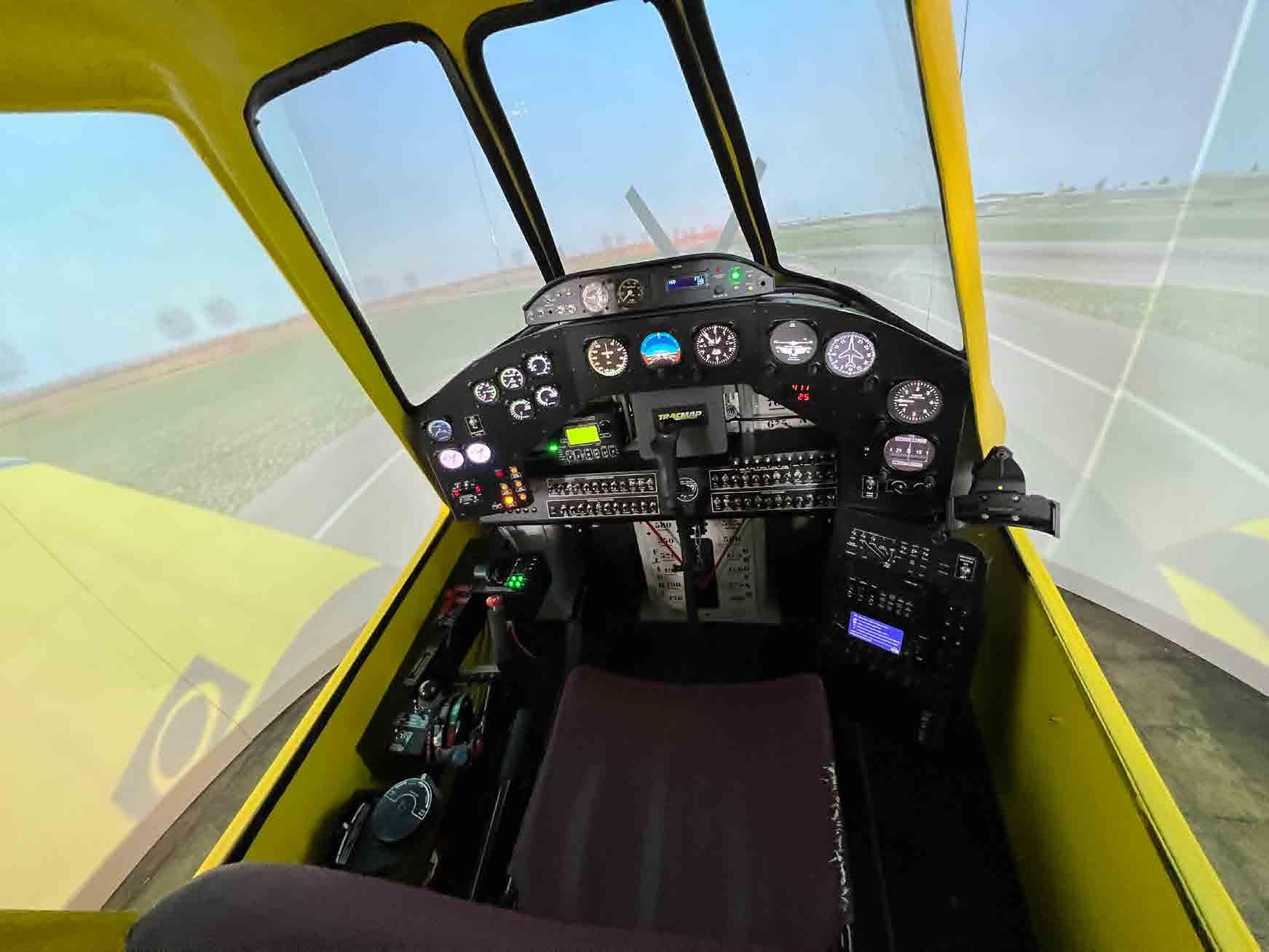
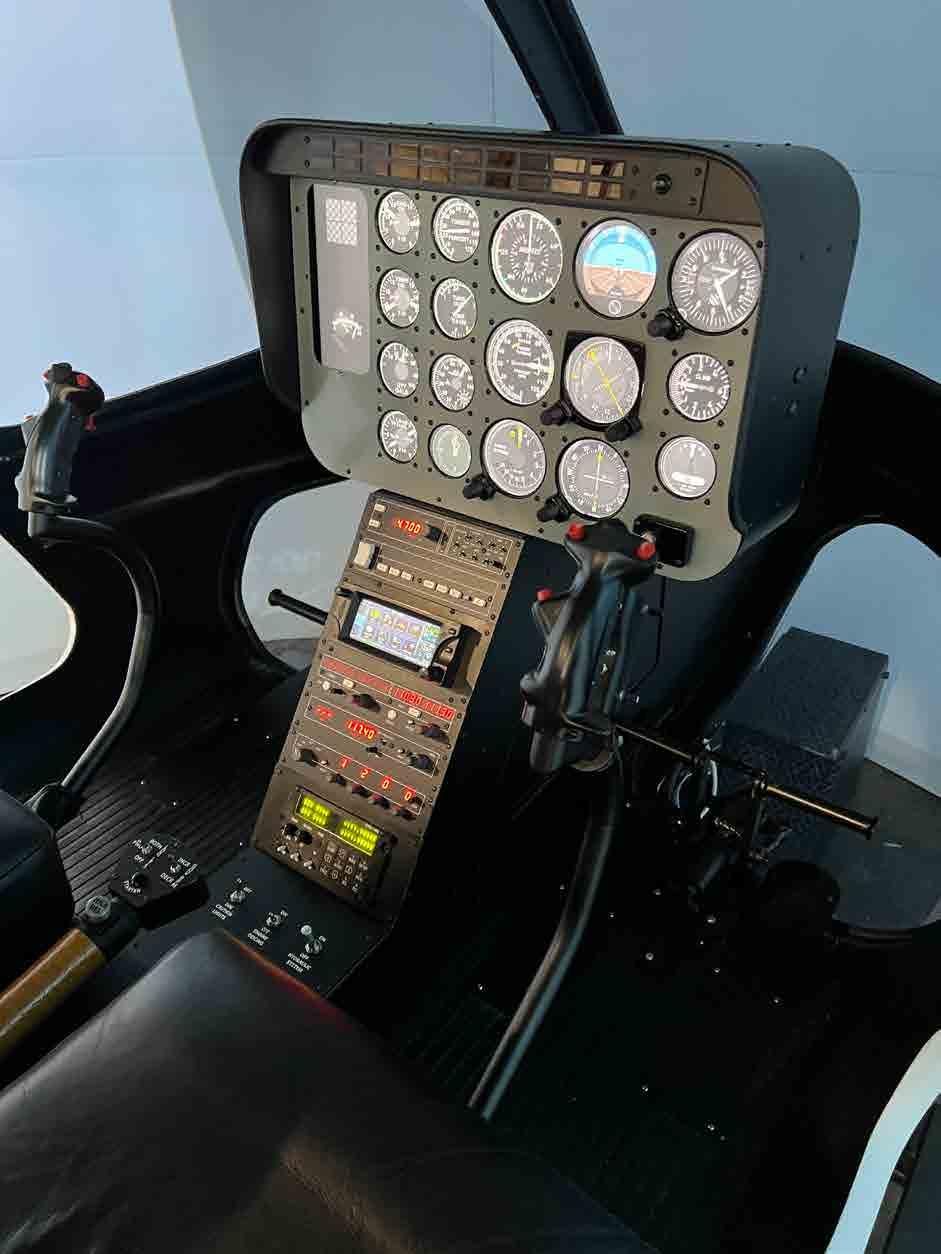


For the last four years, Portuguese operator Heliportugal has been leasing three Kamov 32A11BC heavy helicopters from the Ukraine for use in Portugal during the country’s fire season, a contract valued at 5.5 million euros per year. The KA-32 helicopters have been operated by English-speaking Ukrainian and Moldavian pilots, honoring the contract annually, even while the war in Ukraine continues.
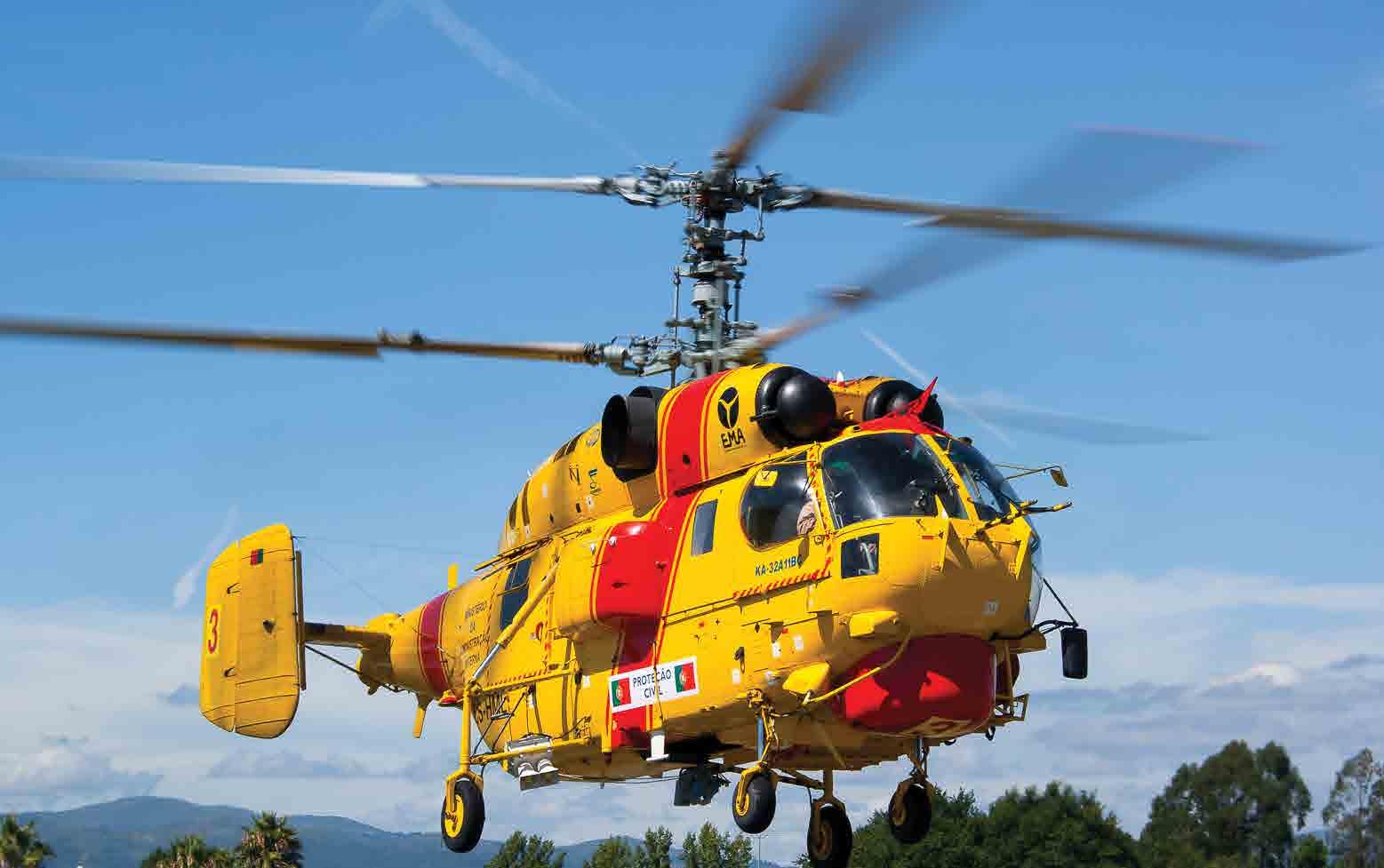
Portugal's Proteção Civil (Civilian Protection) agency considers the Kamovs to be so effective for Portuguese firefighting efforts that it has been considering adding two more Kamovs to the contract. However, just two weeks before the start of the Portuguese fire season, Portugal’s ANAC (Autoridade Nacional de Aviação Civil - Civilian Aviation National Authority) has changed the contract requirements to require that the Ukrainian pilots pass a level 4 Portuguese language proficiency test, “for safety reasons”, just weeks out from the contract commencement that is effective on June 1st, 2023. ANAC officials say that the
ability to speak Portuguese will result in better coordination between the Kamov aircraft being operated for firefighting and the ground firefighters, creating a safer operation.
Portuguese is a difficult language that can not be learned in the few days before the new rule comes into force, let alone to a level 4 proficiency. Portugal has had a dry winter, and the 2023 fire season is expected to be very busy.
Confronted with this, Portugal’s ANAC has relented, allowing the English-speaking Ukrainian pilots to operate provided there is a second, Portuguese-speaking pilot aboard to handle communications. However, as Heliportugal claims, “this is a high-risk operation that requires technical proficiency, not language proficiency”, and has asked for a complete suspension of the new rule for at least one year.
The Kamovs are the only heavy helicopters being used for firefighting in Portugal, and there is a serious risk that they won’t be available this year due to this new requirement.
Air Tractor, Inc. announced on April 25th, 2023, that the company has joined the United Aerial Firefighting Association (UAFA).

“Wildfire seasons have become more complex with increasing demands for aerial firefighting assets. It has become clear that the aerial firefighting industry must unite its voices to achieve better outcomes for the people and property threatened by these fires,” said Air Tractor President Jim Hirsch. “As the leading builder of firefighting SEAT aircraft, it only made sense that Air Tractor added its voice to this organization.”
Air Tractor joined the organization as an Affiliate Member, which categorizes companies that support the aerial firefighting industry, including original equipment manufacturers (OEMs),
insurance companies, and other associated for-profit entities.
UAFA was founded not to compete with other aerial firefighting organizations but as an association to represent all aerial firefighting stakeholders and platform types through a professionally run lobbying entity.
As an advocacy group, UAFA also brings together the most experienced industry experts to provide a strong and coordinated voice for the entire aerial firefighting community with the goal of informing policymakers and legislators about important issues concerning the increasingly critical and complex nature of aerial wildland firefighting.
“No matter if you run SEATs such as the AT-802F or Fire Boss, helicopters or LATs, we are all dealing with the
same challenges that need to be addressed at the federal and state level,” Hirsch said.
The group also hopes to improve the contracting process through collaboration with customers prior to the RFP being formed, identify and provide authoritative experts for the industry, and respond to industry issues swiftly as they develop.
UAFA advocates for solutions that include a combination of investment in prevention, suppression, and community hardening that produce better outcomes for tax-paying citizens in the line of fire. By driving standards for improved safety, competency, and response times across the entire aerial firefighting complex, UAFA believes it can help the citizens and agencies it serves, and help create opportunities for better results.
● APPROVED AROUND THE WORLD!
● PILOT IS ALWAYS IN CONTROL
● REDUCED PITCH - UP
● SIMPLE, USER FRIENDLY & RELIABLE


● SHAPE, SIZE AND DENSITY OF THE DROP PRODUCED TO MAXIMIZE FIRE CONTROL
● FULL SALVO DROP IN LESS THAN 2 SECONDS
● 4 LEVEL DUMP CONTROL
● APPROVED ALL MODEL OF AIR TRACTOR & THRUSH 660/710
● 20 YEARS PROVEN TRACK RECORD OF RELIABILITY & SAFETY

Black Widow Helicopters announced June 19th, 2023, the successful delivery of a Sikorsky UH-60A+ Black Hawk helicopter to Trans Aero Ltd.
“We are very pleased with the quality of work produced and the professionalism shown by Black Widow Helicopters on such a significant modernization project”, said Kevin Shields, President of Trans Aero Ltd. “Adding a second Black Hawk to our fleet is a significant event for us.”
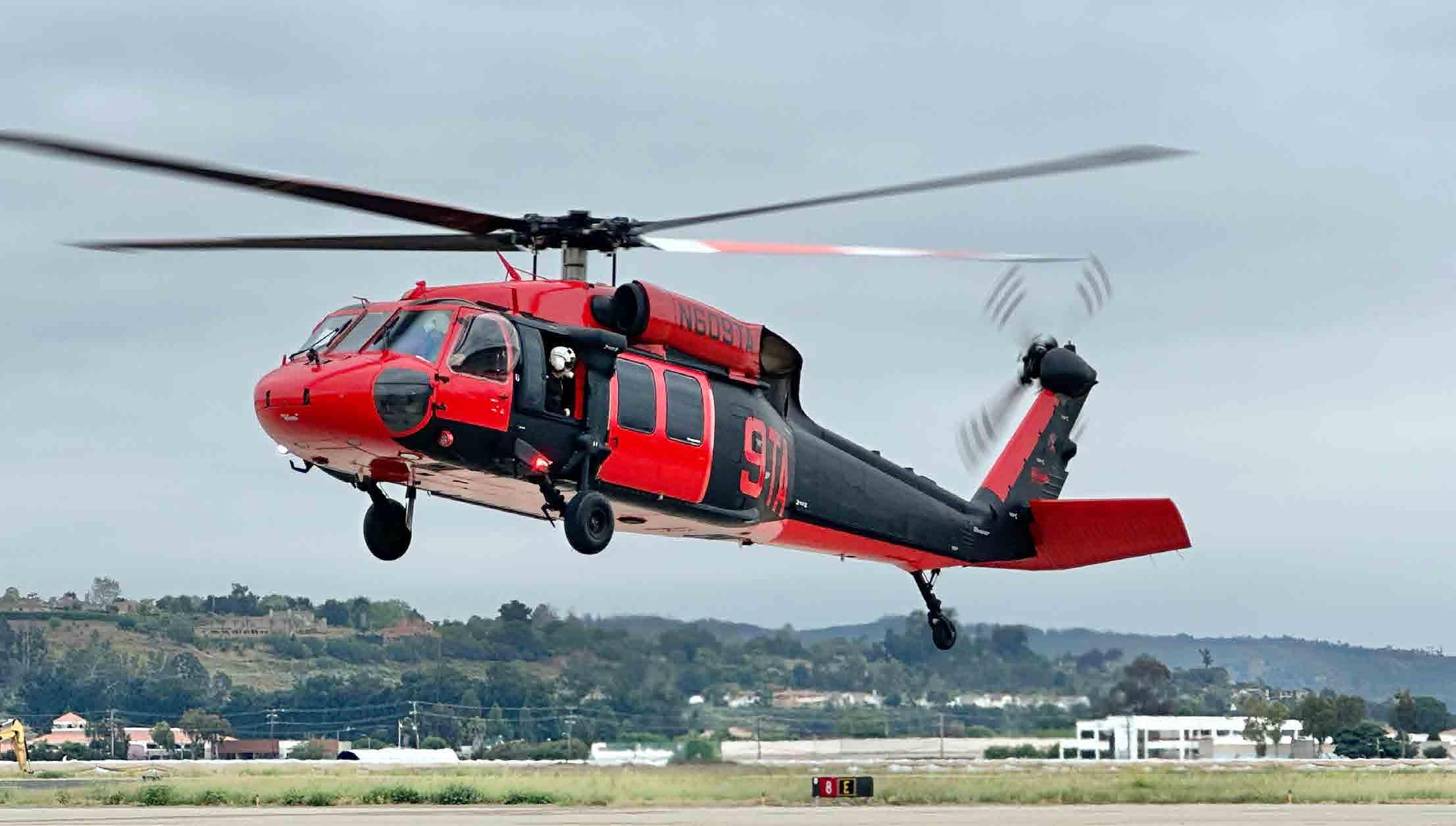
The success of the UH-60 Black Hawk helicopter to attack and suppress wildfires in their initial stage has spurred operators globally to evaluate this unique asset, both as a firefighting tool and a multi-mission aircraft for year-round utility and firefighting missions.
“We are very pleased we could deliver this UH-60A+ Black Hawk to a legacy operator such as Trans Aero. Our ability to modernize U.S. Army BEST Program UH-60 Black Hawk aircraft to local and international customers is an excellent way for clients to quickly acquire a helicopter platform renowned for its reliability, high performance and multi-role
versatility,” said Alex Freidin, Vice President for the UH-60 Black Hawk Program at Black Widow Helicopters.
“The delivery to Trans Aero of this exceptional and unique UH-60 Black Hawk product highlights the fact that we are witnessing the growth of a new generation of state-of-the-art modernized Black Hawk legacy helicopters ready to serve world markets”, Friedin continued.
The aircraft will be the second UH-60 Black Hawk in Trans Aero’s fleet which will support firefighting and utility operations.
“The UH-60 is proving to be a tremendous all-in-one aerial firefighting weapon, and this capability brings unmatched multi-mission capability to our fleet and to ultimately protect lives and property”, Shields continued.
In business for over 60 years, Trans Aero Ltd. is a Coloradobased helicopter operator. Its main focuses are in the fields of aeromedical, wildland firefighting, government contracts, and utility operations.
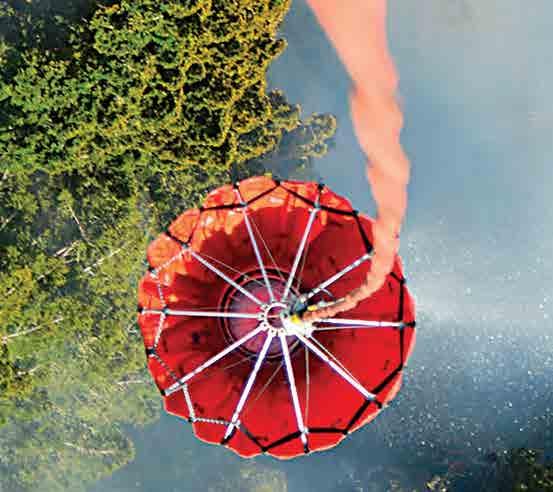
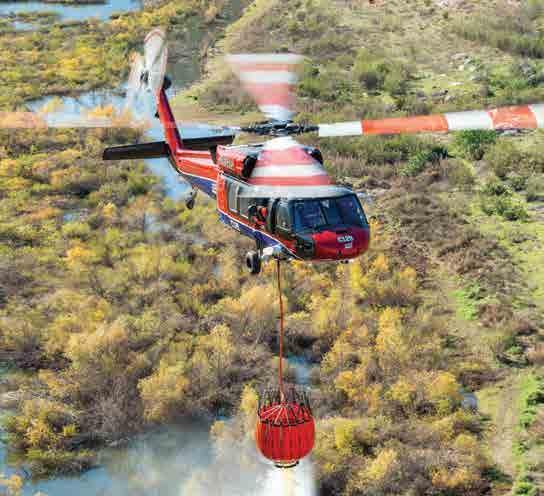

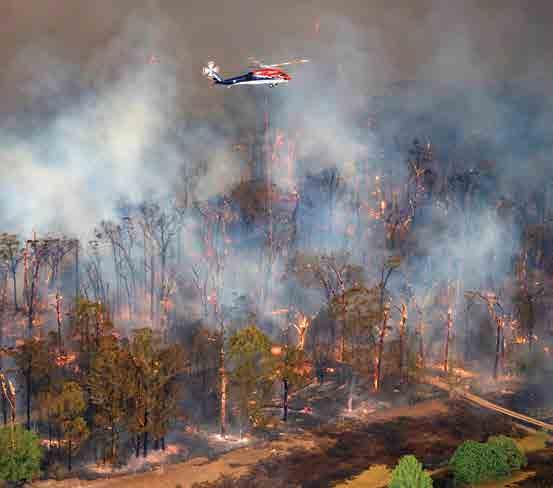
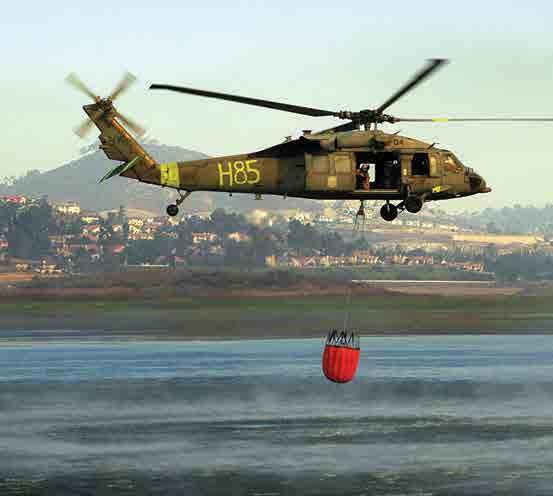
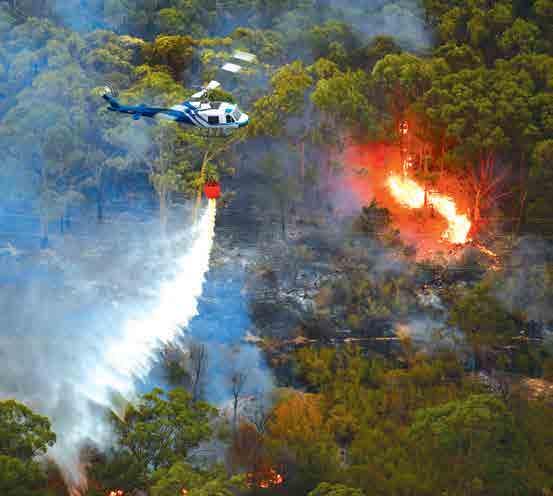
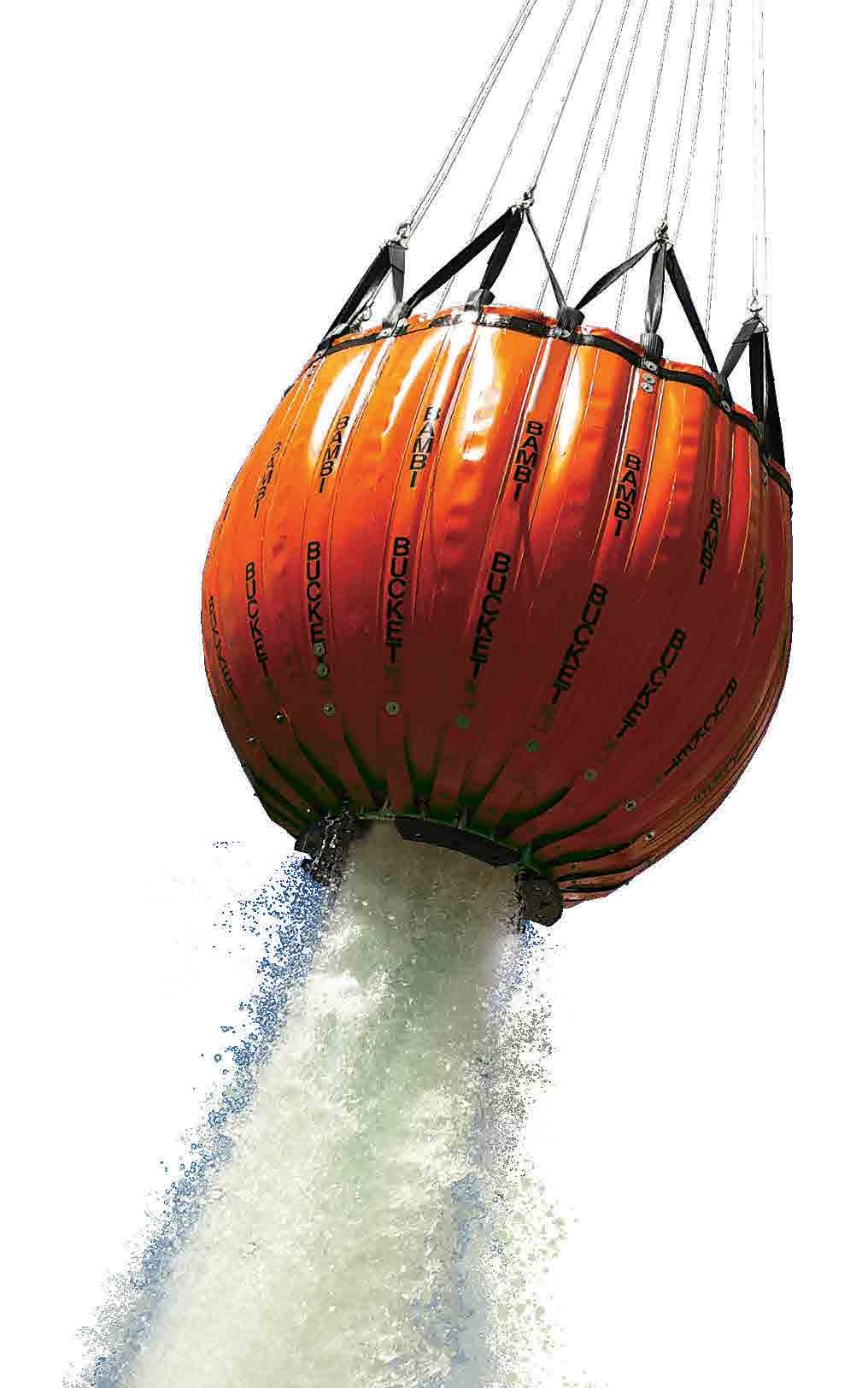
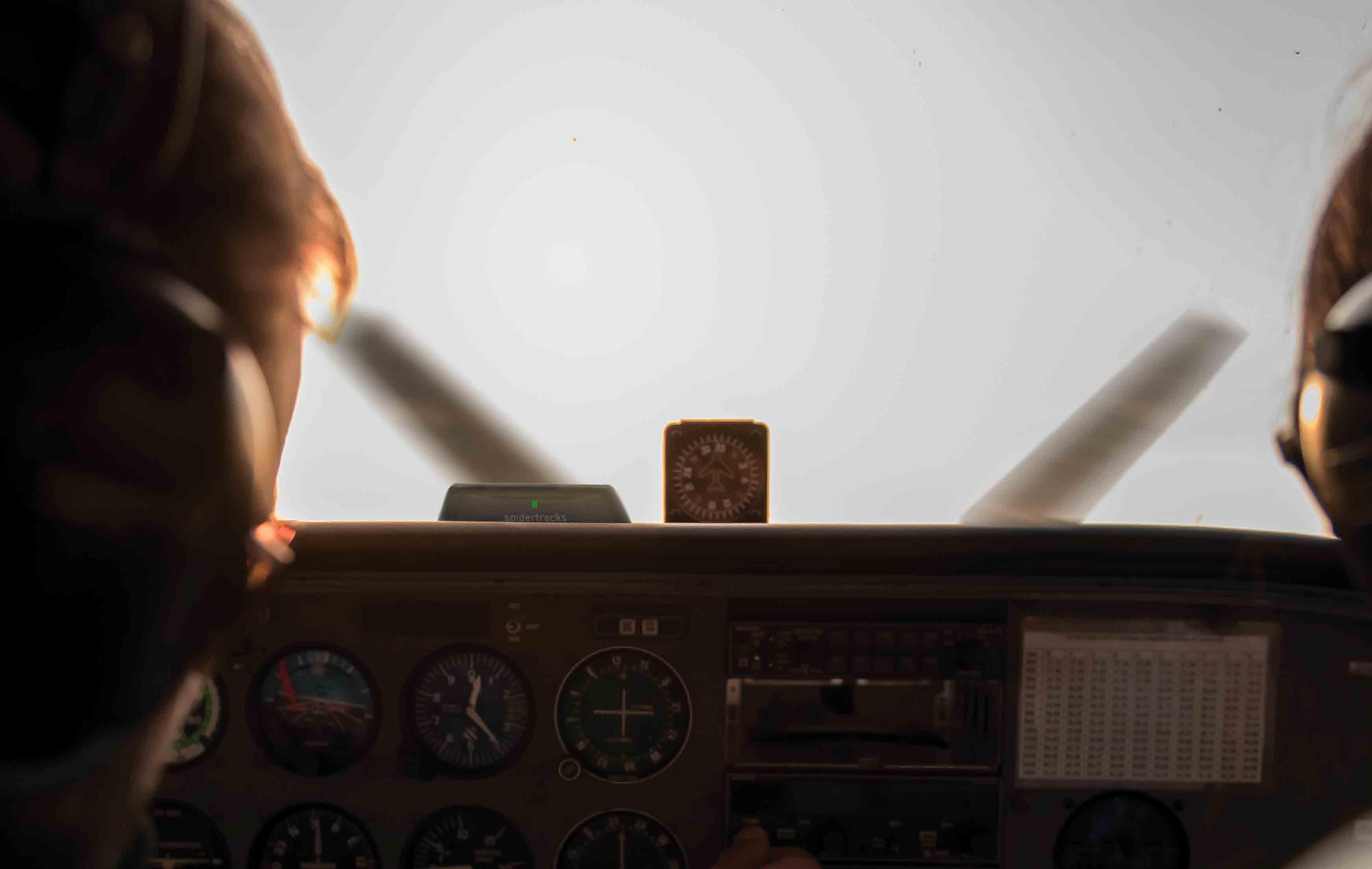
In an effort to meet historic demand, Air Tractor airplanes will be produced with a modified paint scheme, offering customers standardized color options, reports Air Tractor President Jim Hirsch.
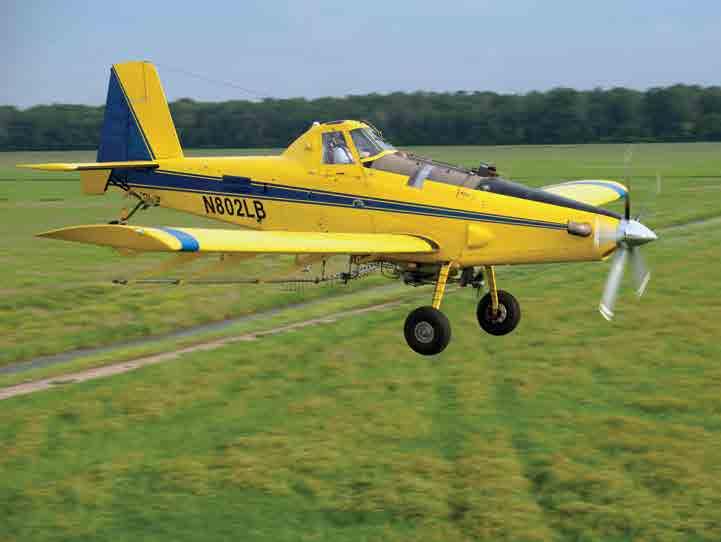
Despite the supply chain debacle, Air Tractor had a record year for deliveries in 2022. Production for 2023 and 2024 is projected to be even stronger. With demand outpacing supply, Air Tractor reflected on its mission statement pledging to “provide aircraft to help feed and protect the world.” In support of that mission, Air Tractor recognized that to meet this historic demand, a change is necessary to provide capacity in the paint department.
“Our airplanes will always look and fly like an Air Tractor,” says Hirsch. “Air Tractor is introducing a modified paint scheme for its agricultural airplanes. A yellow base color with blue stripes is the standard color scheme. Customers may choose white as the base color, with no upcharge, if specified at the time of order. Color choices for the main stripe and pin stripe scheme, which will be the same color, are blue, black, red, and green. Our firefighting scheme will
remain unchanged. These standardized choices will help the factory respond to high demand by reducing bottlenecks due to paint in the production process.” Hirsch says he anticipates the new paint scheme will begin appearing on airplanes late in the third quarter or early in the fourth quarter of the 2023 production schedule.
Overall, Hirsch reports the updated stripe scheme streamlines the painting process and improves Air Tractor's overall airplane production efficiency as the aircraft manufacturer aims to produce a record-setting number of planes this year.
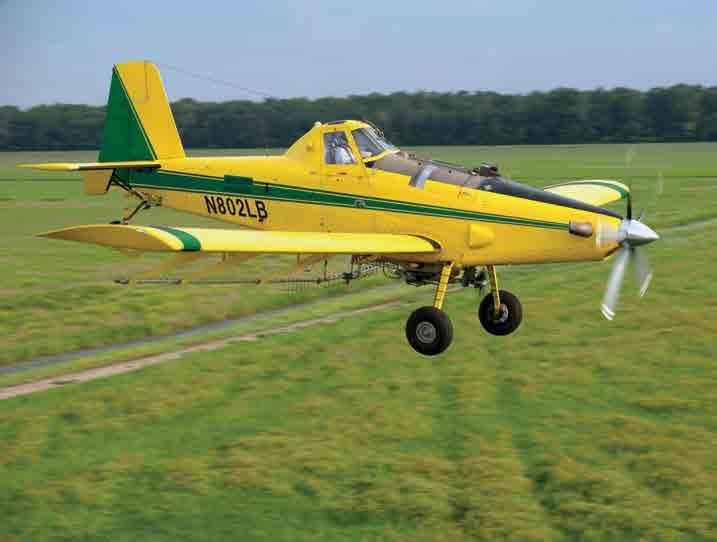

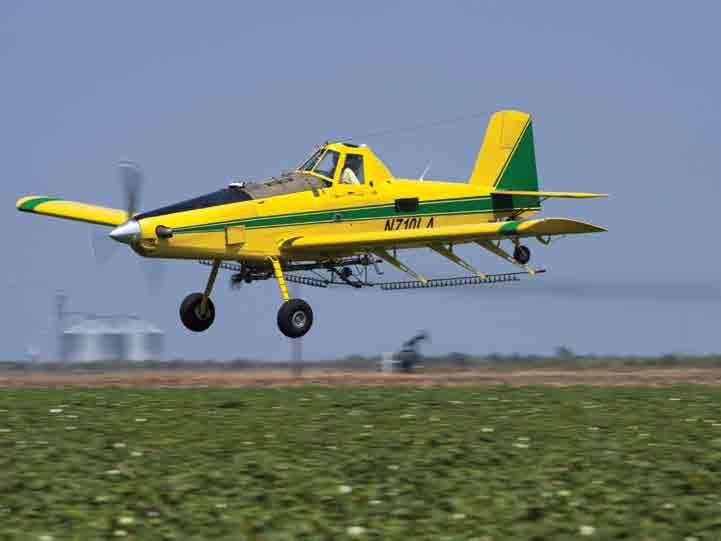
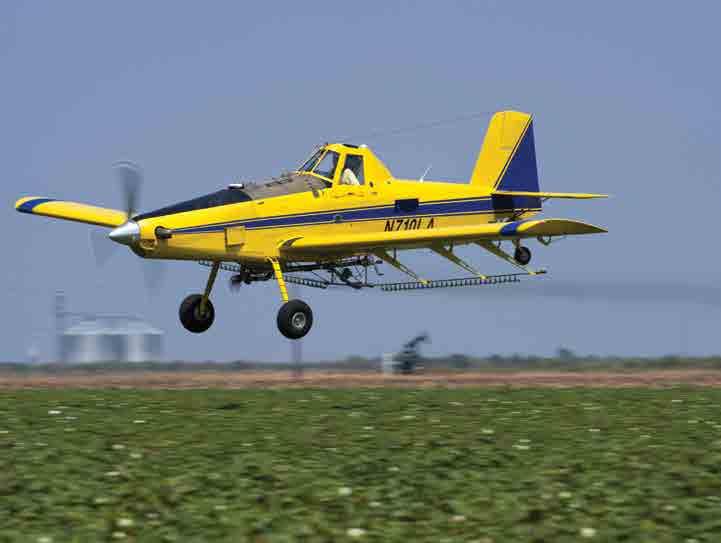
“Air Tractor is growing and evolving to deliver more of what our customers want. Leland Snow always pushed for continuous improvement and was driven to help our customers get their job done. Unlike the supply chain, this is within our control and supports our mission of helping feed and protect the world. We do that by getting more airplanes to the market. Our products will evolve over time without losing the spirit of what it means to be Air Tractor,” Hirsch added.
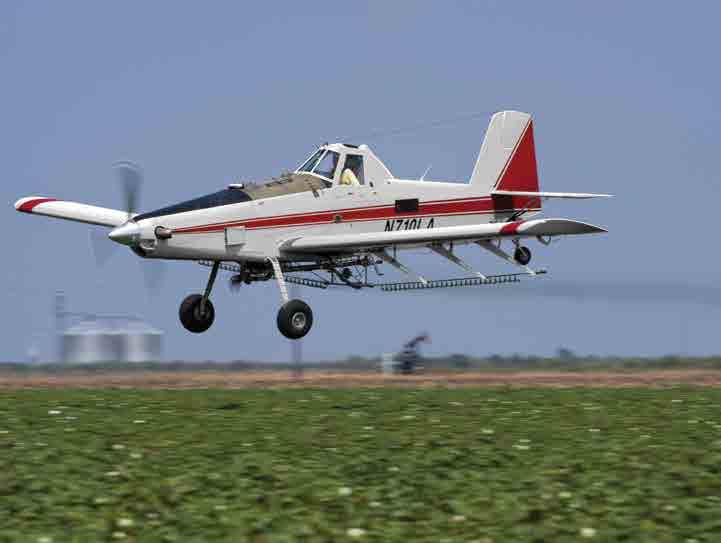
NOSE TO TAIL. WE PROTECT YOUR LIVELIHOOD.
We’re your authorized Air Tractor® service center. Need replacement parts, pronto? Rapid repairs? Masterful maintenance? It’s all here for you.
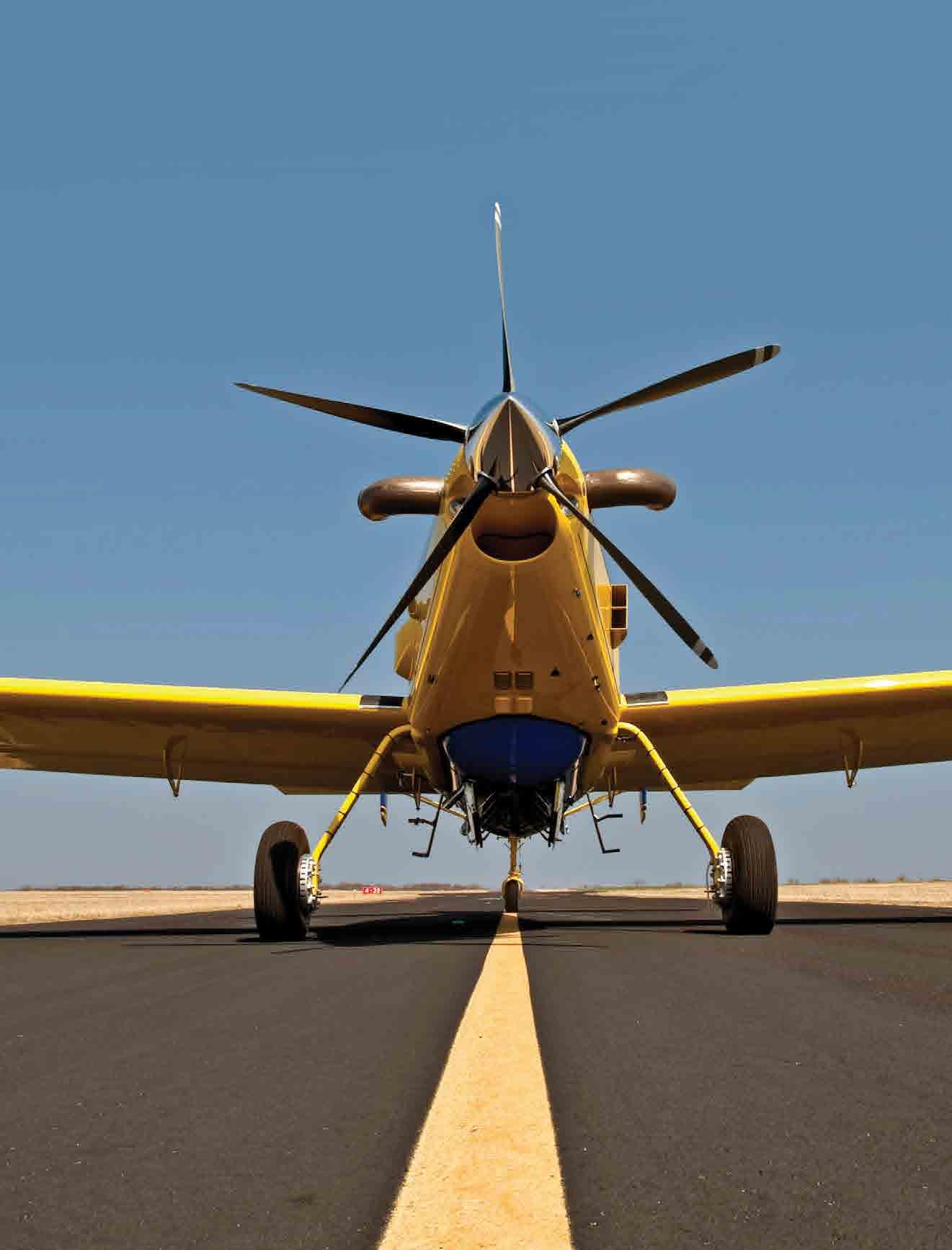
TheValleyAircrafts.com 559-686-7401


I often hear comments or am asked about my opinion regarding how much better one aircraft type or size is over another. The answer is not simple for the fire service that is steeped in tradition but needs to be based on the reality of the situation at the time. This is where the desired outcome may be dictated by politics, planning, funding, experience, or preference, and where at times all these factors can collide. Having been an air operations branch director (AOBD) on many fires and complexes, I’ll be the first to advocate for all types of aircraft, as they are all conducive to specific mission sets that may be needed on a wildland fire incident.
Every aircraft has a time and place where it may be the most desirable platform for the missions, which are diverse; ranging from cargo (internal and external), suppression, medivac, aerial supervision, reconnaissance, mapping,
and surveillance to name a few. Funding is most often the largest factor dictating what will be used and is also where short-sightedness can cost taxpayers and the environment immensely. Just because a platform may be the cheapest to operate and contract for, does not necessarily mean it will be the most effective; it may be all an agency or company can afford due to infrastructure or financial limitations.
As it relates to suppression, once a fire gets established beyond the initial attack, size does matter. Ask any aerial supervisor responsible for ensuring the aviation program is successful. If he or she is honest, the more fluid on target at one time, the more successful the chance of shutting down or slowing a fire. Does this mean bigger is better? Absolutely not, or no agency would be able to afford the diverse fleet needed to support all the needed mission sets. ➤

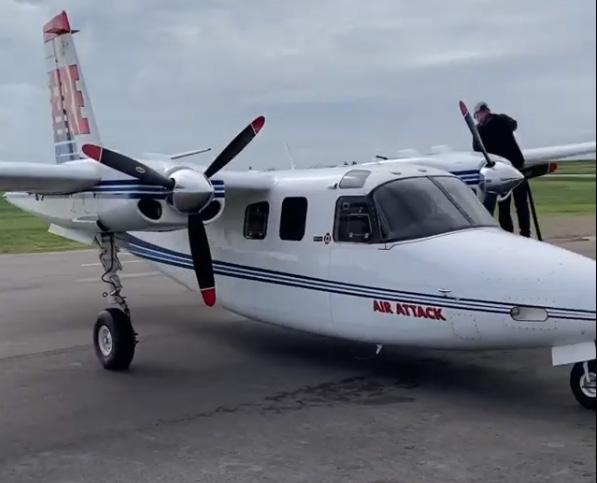







Aircraft chosen for mission sets can be regionally driven due to infrastructure, politics, topography, and land mass makeup. For instance, the utilization of scoopers would not be conducive to working in an arid climate where appropriate water masses are absent. CAL FIRE chose the S2-T for its ability to fly from short runways in the front country. Regions with a lot of agriculture tend to use single-engine air tankers (SEATS) due to the plethora of them available. The USDA through the USFS is the Federal government’s clearing house for Large Air Tankers (LATS), Very Large Air Tankers (VLATS), and Helitankers to support the whole of federally managed lands throughout the United States.
This is a large expanse of land where a lot of ground needs to be covered and where large loads due to long reload times make sense. For those of us who have coordinated these types of aircraft, we know how effective they can be when large loads are needed especially when the firefighters on the ground are being significantly outpaced by the fire. Regions where water masses are readily available, like Europe and the Mediterranean countries utilize and appreciate the use of scoopers for water bombing, and often haven’t experienced the effect LATS and VLATS may have.
When someone asks me if I like helicopters or airtankers better, or if I think SEATS or LATS are more effective, I know they have been misinformed, most likely have a bias, and do not comprehend the roles each is better suited for. Once again, the answer is predicated on the circumstances. As an AOBD I typically requested every size helicopter in the fleet that would be engaged in specific mission sets, where size, cost, and efficiency are considered. Would I use a Bell Huey engaged as a stand-alone helicopter coordination platform? No, I’d use something smaller that would be more cost-effective to use for the mission and use the Huey for a suppression or cargo roll, where its size would make it more efficient.
The same can be said for SEATS, LATS, and VLATS, although availability often figures into the equation due to the number of these assets available.
I’ve come across papers and documents used to substantiate one type of an asset over another, where bias has played into the equation. For instance, when water delivery is used as a measurement of success compared between fixed-wing and rotor-wing aircraft, the point and
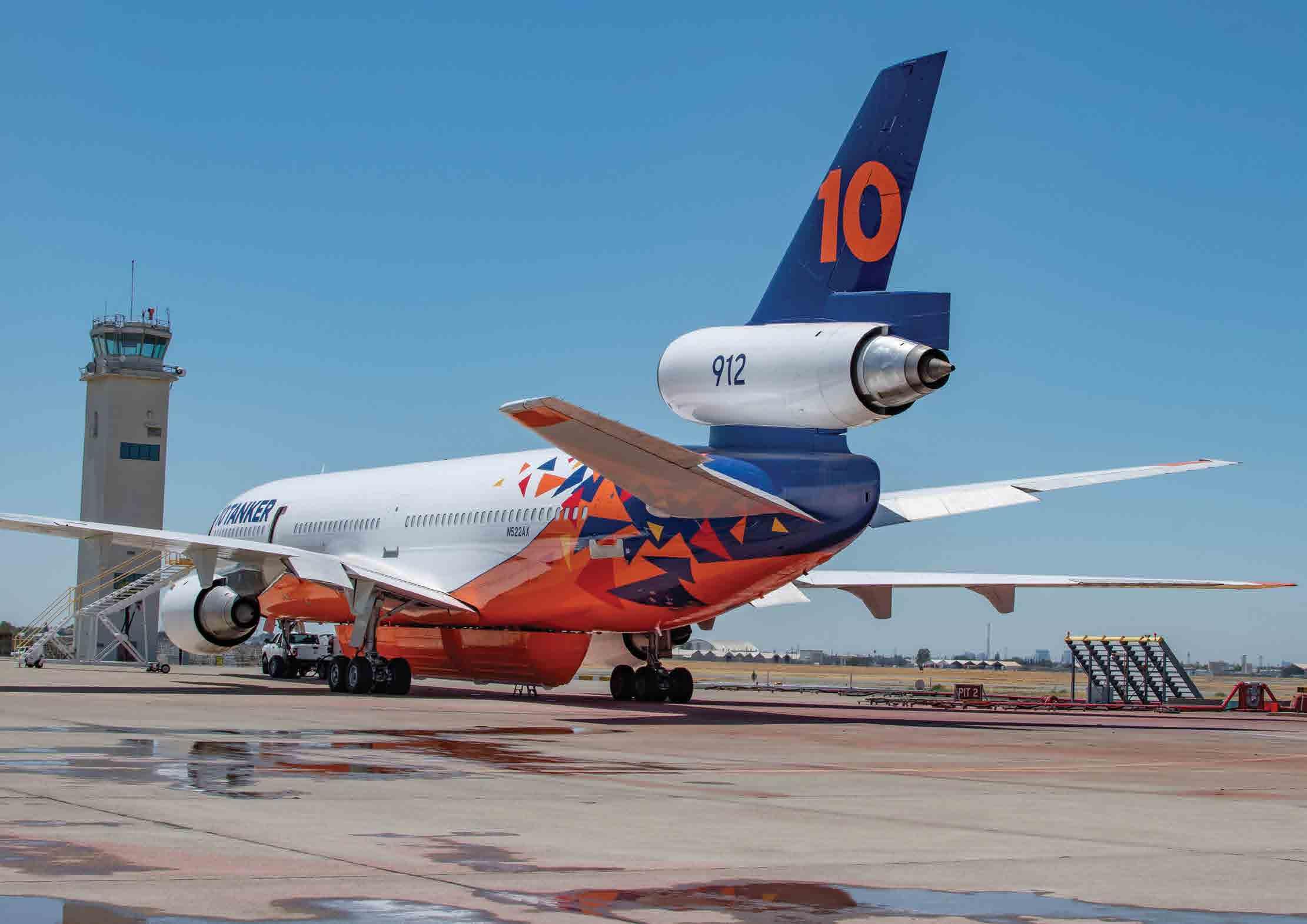
mission roll have been missed. Helicopters are needed and can be used on almost every fire. Once a helicopter is committed, it will typically remain assigned to the fire until containment is reached, and most often until the fire is called out or controlled.


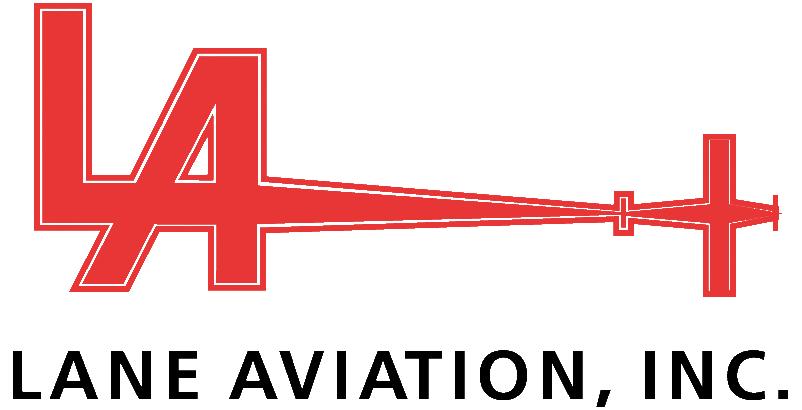
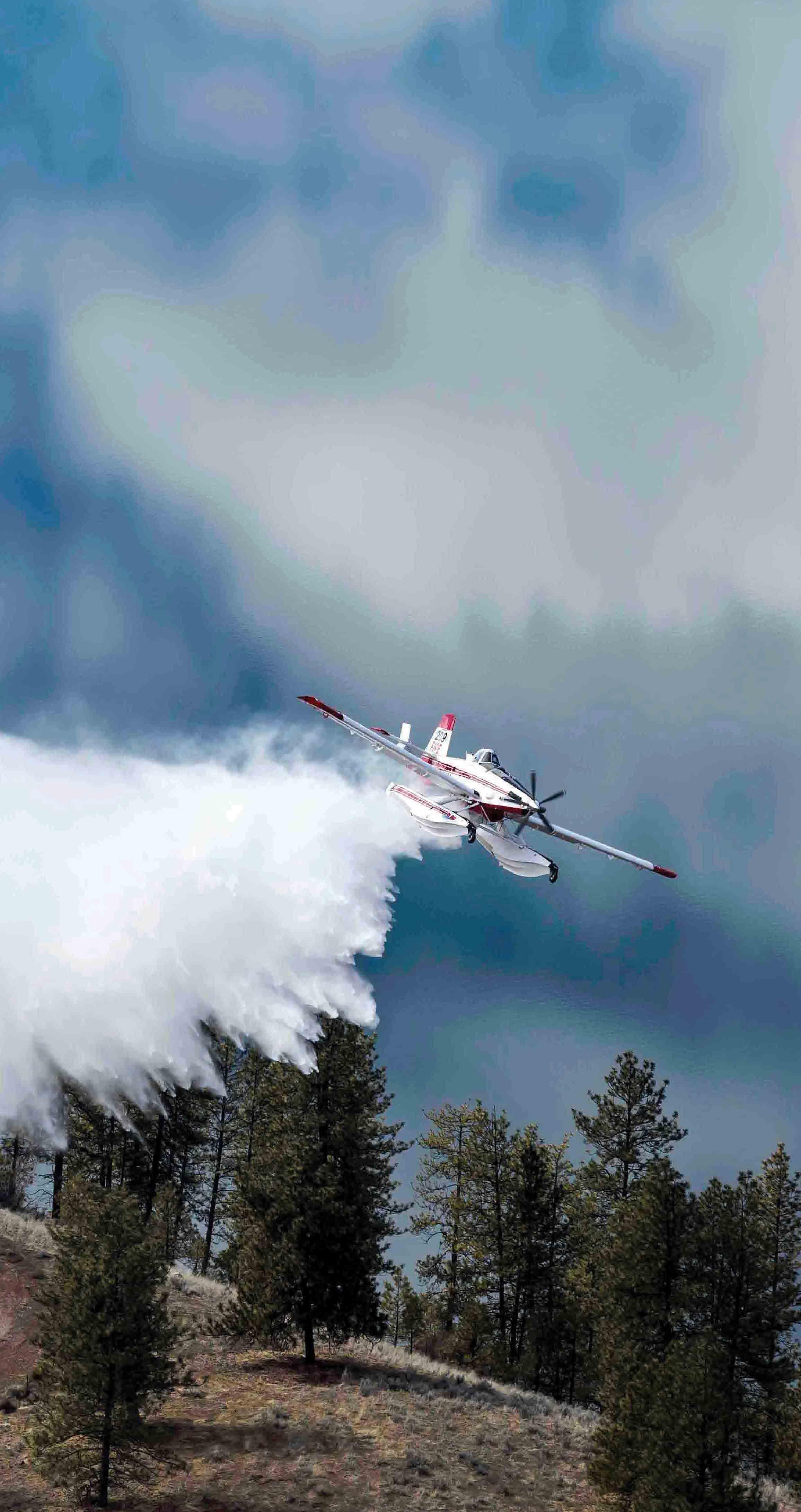


Helicopters can be used in close air support for almost every mission, making them a good all-around platform, however, they lack speed, aren’t easily relocated, and most often work alongside the firefighter on the ground. The suppression role of a helicopter is to deliver water quickly in direct support of those on the ground, pending turn-around times. Conversely, airtankers are typically only used for containment and are then either off to the next fire, or are repositioned for the initial attack of another fire.
Airtankers are nimble and easily relocated, having a huge role in working out in front of fire line personnel who are being outpaced by the fire. Most often air tankers drop retardant, which can either work as a direct suppressant or can work once dried as a retarding agent, buying firefighters time on the ground. It is due to the speed and range of LATS and VLATS that Federal agencies in the US only use retardant in these platforms, which can quickly be diverted to be engaged in any fire regardless of its burning phase or operational tactics.

Wildfires are changing, and the way we manage them is struggling to keep up.
Aerial firefighting has been at the forefront of firefighting innovation since the 1940s when the first smokejumpers jumped into a wildfire from an airplane in the Nez Perce National Forest. Soon after, the first ever fixed wing air tanker drop happened on the Mendocino National Forest in 1955. Quickly afterwards was the first rotor wing aircraft fire reconnaissance flight and bucket drop. In 1961, the “Hotshot” program was born. At the heart of each of these innovations was a willingness to adapt new approaches, apply new technology, and collaborate across firefighting agencies.
Today, we have larger airplanes and helicopters, more crews and fire engines, and we have introduced remote sensing data for weather forecasting and fire behavior calculations, but on the ground, not much has changed. Our traditional approaches are not keeping up with the changing state of wildfire.
Climate change has made wildfires both more frequent and more intense. There are wildfires in places where it never was, and some would argue never should be; the Arctic and the Amazon are burning at a rate and intensity that will soon be irreversible. The global incidence of extreme wildfires is projected to surge 50 percent by 2100, according to a new report from the U.N.
In fact, these Extreme Wildfire Events (EWEs), which make up 3% of all wildfires and are nearly impossible to suppress, are growing in severity. EWEs account for over 80% of firerelated damages, cost $350 billion annually in the US alone, and are responsible for 340,000 deaths globally every year. They also reduce biodiversity, devastate communities with financial, social and environmental damage, and can cause and worsen respiratory health and aggravate pre-existing conditions like cardiovascular problems.
Fire has been and always will be an important part of healthy ecosystems. Remote “good fire” is an essential part of tree lifecycles and encourages new growth. But our everevolving landscape, the expanding of the Wildland Urban Interface (WUI), human impact and climate change are altering this balance and increasing the risk of destructive wildfires for communities worldwide.
With 400+ fires across Canada and smoke producing the worst air quality New York has ever experienced, it’s clear that our current approaches aren’t keeping up. We need to spur innovation for new technology as quickly as possible.
To help accelerate innovation, XPRIZE, the world’s leader in designing and operating large-scale incentive competitions to solve humanity’s grand challenges, recently launched XPRIZE Wildfire, a 4-year global competition that will award $11 million prize funding to teams able to develop and
demonstrate fully-autonomous capabilities to detect and extinguish wildfires.
XPRIZE Wildfire incentivizes teams from around the world to innovate across a wide range of technologies in two complementary tracks designed to transform how fires are detected, managed, and fought.
In the Space-Based Wildfire Detection & Intelligence track, teams will have one minute to accurately detect all fires across a landscape larger than entire states or countries, and 10 minutes to precisely characterize and report data with the least false positives to fire managers on the ground.
In the Autonomous Wildfire Response track, teams will need to monitor at least 1,000 km2, and autonomously suppress a wildfire within 10 minutes of detection.
The $1M Lockheed Martin Accurate Detection Intelligence Bonus Prize will be awarded for innovations in accurate and precise detection of wildfires.
As technical lead for XPRIZE Wildfire, I have the opportunity to collaborate with global leaders in fire management to ensure the technologies developed over the course of this competition can make an effective, lasting impact.

Engaging collaboration from government, private industry, nonprofits and communities is our only hope for change and XPRIZE allows for a level of collaboration I have not witnessed before. XPRIZE offers a safe space to host non-political and unbiased discussions with all of these stakeholders working towards a common goal of ending destructive wildfires. The diversity and support of our prize co-title sponsors; Gordon and Betty Moore Foundation and PG&E, our competition presenting sponsor the Minderoo Foundation and the bonus prize sponsor, Lockhead Martin demonstrates a level of collaboration rarely seen. Additionally, prize sponsor, the Conrad N. Hilton Foundation and benefactors, Nichola Elivits and Michael Antonov provide an example of engagement that will ultimately help us solve this complex issue.
Additionally, XPRIZE is currently partnering with nonprofits like the Aspen Institute and The Forest Stewardship Council, public safety agencies like CAL-FIRE and New South Wales-Rural Fire Service, and private corporations like Onshape in support of the competition. By collaborating with these regulatory, public safety, private industry and non-profit organizations we have developed a unified voice for influencing and supporting innovation in technology for change in fire management.
We know that the technology developed through this prize can and will transform the way destructive wildfires are detected, managed, and battled; it will also help firefighters be more proactive rather than reactive. New technology that reduces risk of life will also hopefully help protect the mental health of these brave individuals, saving lives in the line of action and beyond. And we’ll need to collaborate globally to ensure that this life-saving technology can be effective and accessible to make destructive wildfires a thing of the past.
About the Author:
Jay Stalnacker, Technical Leader, XPRIZE Wildfire
Jay Stalnacker has 25 years of experience providing government and private industry health, safety, disaster, and emergency management services. Mr. Stalnacker previously served in non-military government special operations and a member of the elite Federal Smokejumper Program and has served as a commissioned SWAT police officer.
Mr. Stalnacker has served as incident commander and operations chief on numerous emergency and disaster incidents across the nation including 2014 Boulder, Colorado 1,000 year-flood disaster, 2017 State of Oregon Eclipse Emergency Response Event and more recently the 2018 Hurricane Michael natural disaster. Mr. Stalnacker has received two Silver Star medals, one Bronze Star medal and one Medal of Commendation for life saving actions and has been recognized for distinguished service by the Federal Bureau of Investigation, United States Secret Service, Federal Emergency Management Agency, United States Department of Agriculture, the State of Colorado and State of Oregon Emergency Management Offices.
Mr. Stalnacker holds a bachelor’s degree in organizational leadership from Colorado State University. He is a certified health and safety trainer in numerous professional disciplines and considered a subject matter expert for disaster incident management and investigation.

The state of New South Wales (NSW), on Australia’s east coast, was the hardest hit by the 2019/2020 fire season. Easily one of Australia’s most devastating fire seasons, it earned the title “Black Summer.”
An independent inquiry commissioned into the fires resulted in numerous recommendations for change, providing NSW with the impetus to improve its aerial firefighting, moving forward with many state-of-the-art aircraft, technology upgrades and overall changes in the way the responsible agency, the NSW Rural Fire Service (RFS), approaches aerial firefighting operations.
During a visit to Australia in 2022, AerialFire visited multiple facilities owned or leased by the RFS, including
its Headquarters at Sydney Olympic Park, which houses an ultra-modern communications and operations centre, and the leading training academy in the regional township of Dubbo, which will soon feature the new Aviation Centre of Excellence.
The evolution of the RFS aviation capabilities started with a Squirrel helicopter it purchased second hand from the NSW Forestry Corporation, which then led to the purchase of two BK-117 helicopters before the service opted for the Bell 412 helicopters which gives the agency greater capacity and flexibility.
Like fire services in other Australian states, the RFS initially relied on an almost entirely contractor-supplied aerial firefighting response to bush fires across the state, which spans 809,444 square kilometers (312,528 square miles). The devastation of the Black Summer fires, which burned a record 12,000,000 acres - including 1.5 million acres in the Gospers Mountain Megafire Complex alone - has led the agency to re-evaluate how it fights fires over such a large land mass.
As a result of this wide-ranging examination, the RFS now owns largest aerial fire-fighting fleet in Australia. The Service is recognised as a leader in this field, both nationally and internationally, regularly deploying aircraft and personnel to support partner agencies. ➤
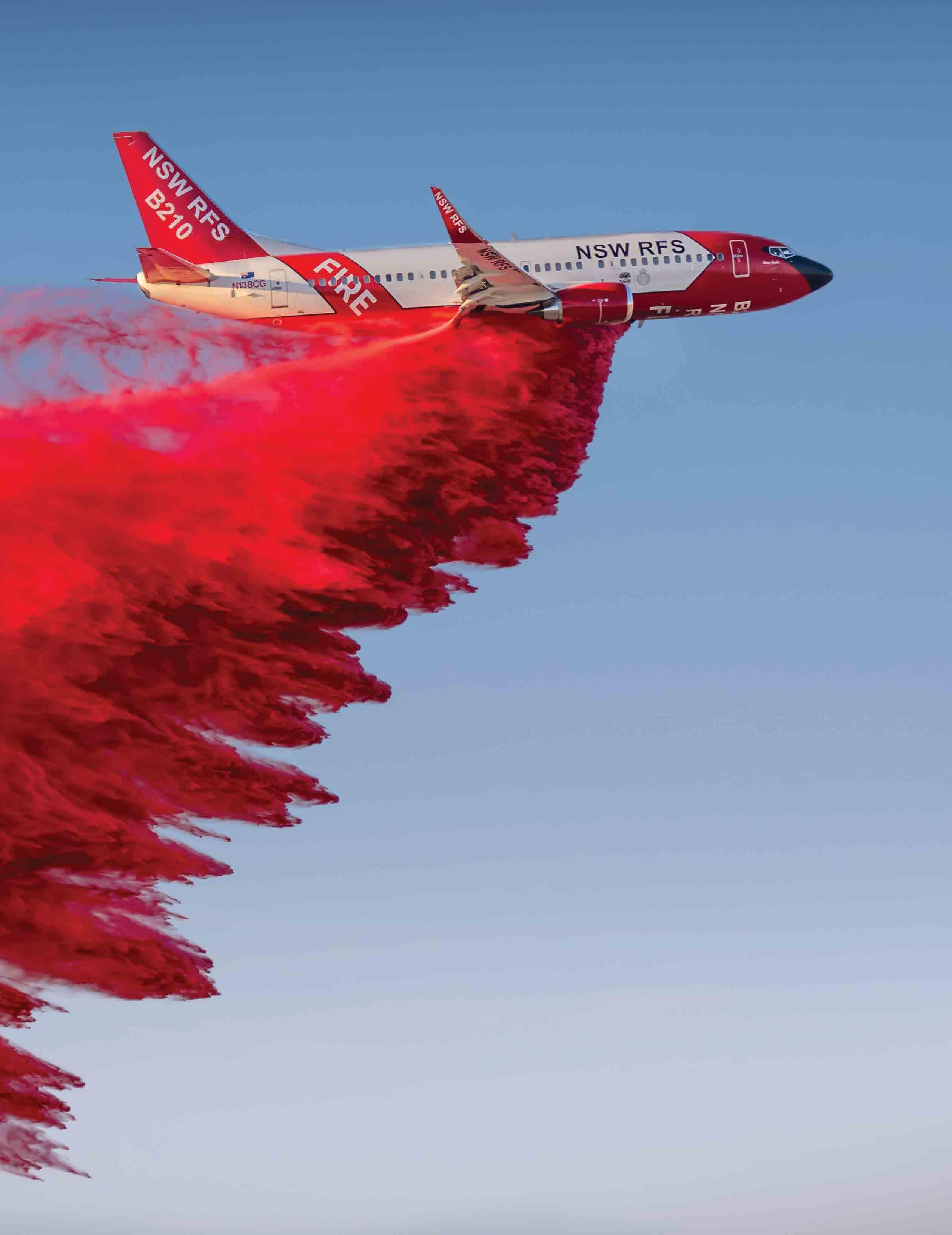 Story by Ryan Mason
Images by Marty Wolin, Aaron Maurer and Ben Millington
Story by Ryan Mason
Images by Marty Wolin, Aaron Maurer and Ben Millington
The RFS engages aircraft in three ways:
• RFS owned aircraft – a Large Air Tanker, three fixing wing aircraft and seven helicopters (including a CH-47 which is expected to arrive in July 2023).
• Seasonal Contracted aircraft – through the National Aerial Firefighting Centre (NAFC). Additional NAFC aircraft may also be engaged on a shorter-term contract by fire season, dependent on need and seasonal outlooks.
• NSW State-based Call When Needed (CWN) – aircraft and aviation fuel services available through CWN arrangements.
Just prior to the Black Summer fires in 2019/20, the Service was fortunate to have acquired a state-owned Large Air Tanker (LAT) with Canadian-based operator Coulson Aviation supplying a Boeing 737 Fireliner. This aircraft, named “Marie Bashir” after the former Governor of NSW, remains based at the Royal Australian Air Force base in Richmond, from where it can deploy and be on scene anywhere in the State within one hour. During the 2019/2 season, the ‘Marie Bashir’ was an integral part of the firefighting effort.
This was followed by the addition two Cessna Citations equipped with advanced line scanning and IR capabilities to provide fire mapping and monitoring and the purchase of six Bell 412 aircraft, three of which are now stationed around the State for regional fire and other emergency operations, including search & rescue. NSW immediately became the most capable in the country with eight full-time operational aircraft that have been deployed in response to fire emergencies and other natural disasters, such as the widespread flooding that affected areas of regional NSW in 2022.
These floods triggered a statewide emergency response, in which the state’s fleet of helicopters played a key role in assisting the NSW State Emergency Service with emergency evacuations from flooded properties, reconnaissance, flood mapping and resupply of emergency provisions to properties cut off by floodwaters. The Cessna Citation aircraft, in addition to firefighting duties, continue to be used to scan and map flood affected areas for the NSW State Emergency Service and transport emergency responders around the State.
The RFS’s approach to contract versus owning is based on market availability value to money, and the specialisation and risk factor of the role being undertaken. The RFS’s ownership of large firefighting aircraft LAT and CH-47 is
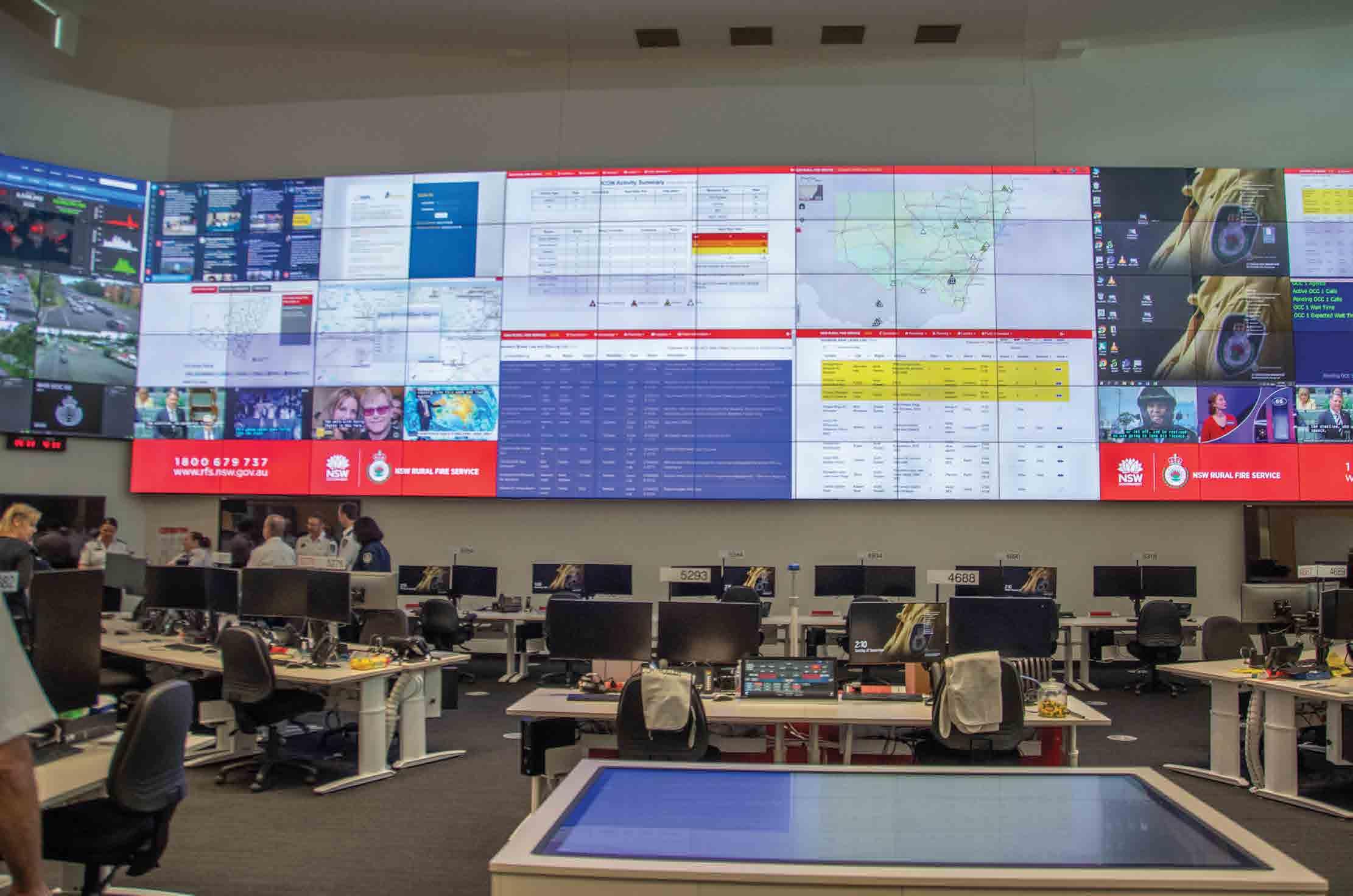
in response to the increasing costs and difficulty obtaining those resources from the Northern Hemisphere.
The other deliberate strategy taken by the RFS is to wherever possible multi-role and multi-hazard aviation assets. This has both a cost advantage but also clear service advantage. This is evident on the Bell 412’s which can do SAR in both fire and flood, camera work mapping fires as well as firefighter transport and insertion. Another example of this is the citation jets doing lead plane work as well as fire mapping.
The RFS State Operations Centre is staffed by NSW RFS personnel however accommodates liaison officers from all emergency services and other key Government agencies with a role in an emergency response scenario. This includes (but not limited to) NSW Police Force, Fire Rescue NSW, National Parks and Wildlife Service, Forestry Corporation, NSW Ambulance, NSW State Emergency Service, Transport, Energy & Utilities, Telco Authority and the Australian Defence Force.
All agencies work together for the common goal, with representatives managing each component of the response as it relates to their agencies. The RFS has multiple officers who work within the centre that houses more than 100 work
stations, flanked by a 14-foot wall of screens that feeds relevant data to each service, including agency-specific data, fire and flood mapping, weather radar, news media coverage and any other pertinent data needed for the specific scenario at hand.

The RFS and other fires agencies in Australia use a purpose designed & built system by the National Aerial Fire Fighting Centre (NAFC) named ARENA to source and task aircraft to fires and other emergencies. This is a national software system to manage, source and task aircraft to fires and other emergencies in a timely and cost effective manner.
Combined with the New Zealand-based company TracPlus’s system, the RFS tracking capabilities of both state-owned aircraft and contractors allow for in-depth tracking of water and retardant drops on fires.
This provides the additional advantage of being able to monitor contract compliance on times taken to reach a fire, amount of retardant or water drops made on fire to not only track the effectiveness of aircraft combatting a fire but also to use for comparisons when needed to evaluate the effectiveness of aerial fire-fighting operations, that ultimately assists the agency in planning resource requirements for future fire seasons. ➤
During fire operations, the RFS State Air Desk is responsible for aircraft dispatch, working with a cadre of dispatchers who also help handle the load of deploying aircraft that could be airborne during fires like those throughout Black Summer fires where over 130 aircraft were actively tasked on a single day.
RFS has over 150 personnel trained to perform aviation roles in local Incident Management Teams such as Air Attack Supervisors, Air Operations Managers, Aircraft Officers and Air Base Managers.
RFS Director State Operations, Assistant Commissioner Ben Millington, said one of the key advantages to the operations centre was the ability to have all the relevant services in one place during an emergency response scenario, preventing double tasking of services on the same call or assigning the wrong resource to an event based on specific needs.
Part of the operational deployment of all agencies in the operations centre during an emergency response is that every person in the room has the power to make decisions for their
agency, speeding up response from the respective agency when there is a need for aircraft or personnel to be assigned to assist in a specific scenario.

Although there is still much debate about the use of artificial intelligence in various spaces, the RFS has employed a version of AI to assist with fire prediction. The ATHENA system combines fire scan GIS data, mapping, ignition points and wind into a useable data source that the RFS can funnel into what’s called a ‘fire prediction model’ to assist command staff in planning the fire response needed in specific areas for both ground and aerial asset deployment.


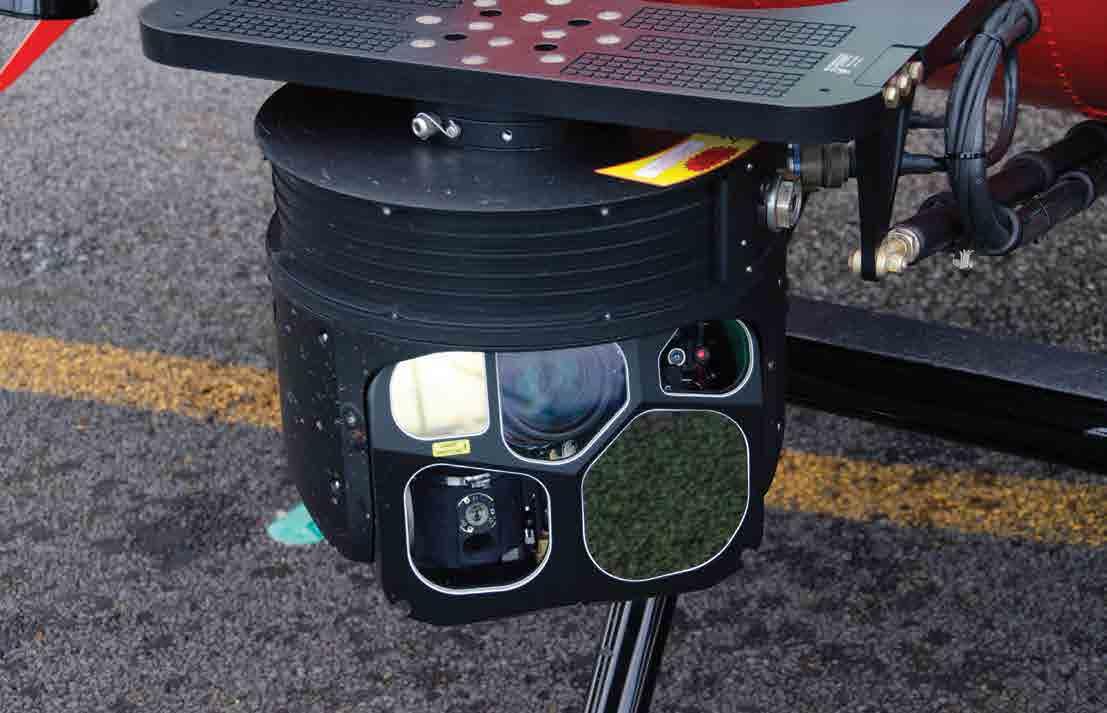
ATHENA will run 10,000 probabilities of potential fire tracks in two minutes, factoring in all relevant information on the fire and giving multiple different layers of information that can assist not just the firefight but other service responses where needed.
Overlayed with homes vulnerable facilities and critical infrastructure, ATHENA is a very powerful tool for enhancing situational awareness and decision making.
During a fire, the RFS Cessna Citation aircraft use advanced hardware and software in the aircraft operated by a GIS operator stationed in the rear of the aircraft to generate scans between 12,000 and 20,000 feet, producing scans at 2.5cm pixels and KML shapefile generation for immediate use.
The information gathered by the aircraft then allows staff on the air desk to use software to draw a map of the area required to be scanned. Flight planning approval is also done within the software and transmitted directly to the aircraft. The onboard hardware and software interfaces allow the aircraft to automatically send the scanned data back to the operations centre for interpretation and planning to coordinate further airborne firefighting operations.
This system is installed in the Cessna Citation and the Bell 412 aircraft, equipped with high-resolution FLIR 380HDc cameras capable of mapping. While the Citation aircraft are used more for mapping out a response in a long-term plan, the Bell 412’s capability allows the aircraft to map the area of existing fires or pop-up fires such as those generated by lightning strikes, enabling the operations centre to more
accurately pinpoint fire lines and direct ground and aerial assets to fight the fire as well as communicate to the public the need to evacuate or take other actions.
One of the most significant purchases in terms of capability and immediate return on investment for the RFS has been the fleet of six Bell 412s which are based in metropolitan and regional parts of the State. The aircraft are maintained and operated by Coulson Aviation and CareFlight through unique contractual arrangements.

The Bell 412 helicopter has proven to be a formidable asset, performing hundreds of flood rescues with trained crew members during recent flood emergencies across the State. Work is also underway to enable these aircraft to operate at night for intelligence, transportation and search & rescue purposes.
The multi-role functionality of these aircraft has become an immediate asset to the agency, providing the ability to be used as a search and rescue platform, aerial mapping aircraft and rapid response deployment aircraft for repelling fire crews, in addition water bombing using a belly tank or Bambi bucket.
New South Wales is the only state that has taken action after the devastating 2019/2020 fire season to establish a sovereign fleet of aircraft for the state.
The RFS also plans to use the aircraft’s high maximum gross weight capability to potentially long line machinery in to fires when needed and has trialled a custom-built piece of equipment called a ‘green climber’. Essentially a remotecontrolled posi-track machine with a mulching head, this will allow the aircraft in certain circumstances to mulch away brush in the line of the fire, starving small start-up fires of the fuel they need to expand.
The RFS State Training Academy, located five hours west of Sydney in the regional city of Dubbo, serves as the hub for new operational staff recruits and volunteers undertaking advanced training and as a regional training hub for the Service on a stateof-the-art campus within walking distance of Dubbo airport.
The campus features full-time accommodation on campus for more than 100 students, a spacious classroom setting with modern equipment including a full virtual reality aviation simulator that allows students to see a fire traffic area in 3D, allowing instruction on many different aspects of aerial firefighting.
The Academy grounds are also the site of the new Aviation Centre of Excellence, due to open later this year. The centre
is costing AUD 8.0 million (5.44m USD) and will house advanced training facilities including several different simulators for aerial supervision & tactical training. The centre will not only provide training opportunities for RFS aviation specialists but also those from other fire services around Australia.
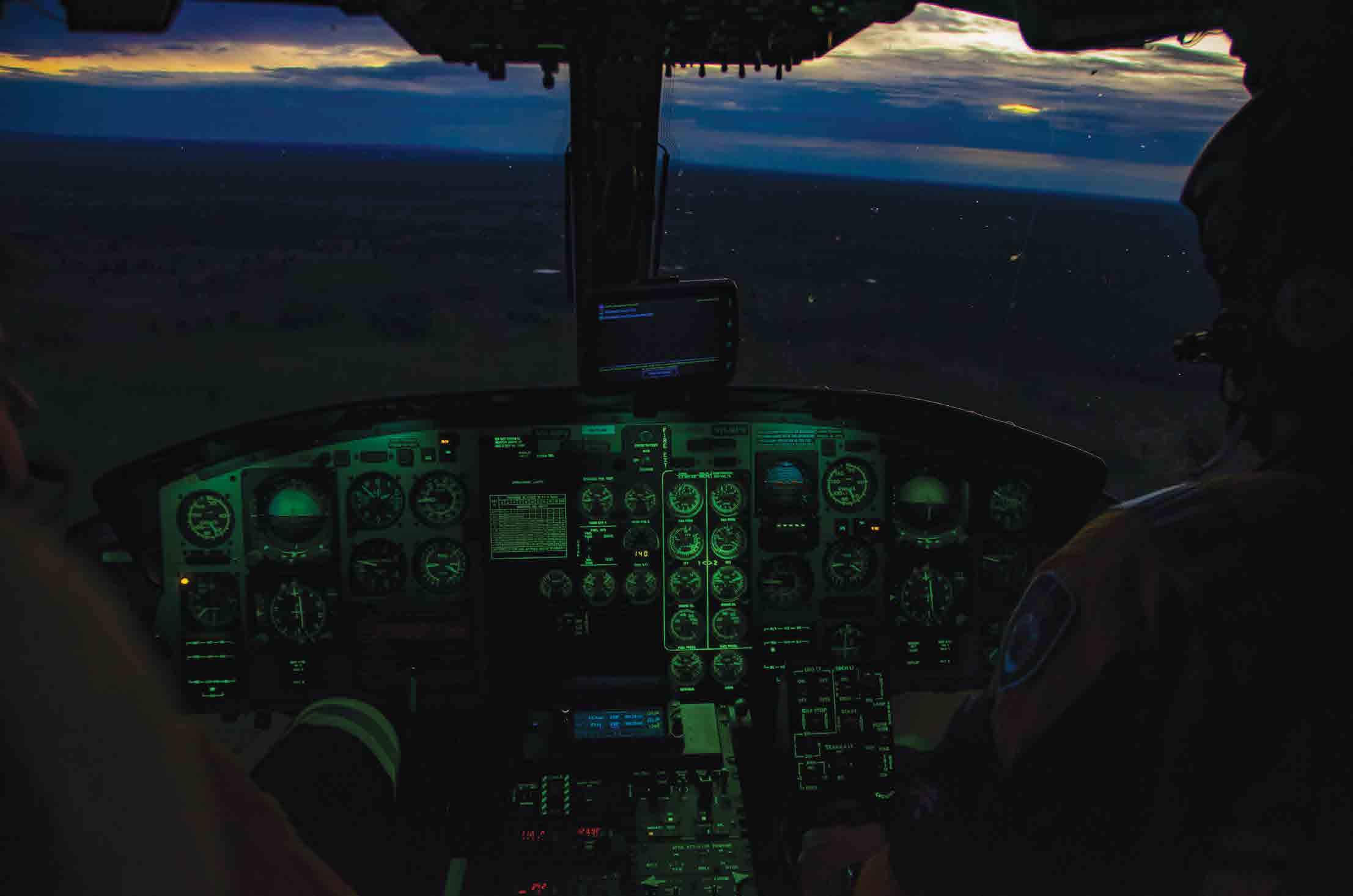
The RFS will host the international Aerial Firefighting and Search and Rescue APAC 2023 (‘Tangentlink’) Conference at the Academy in August 2023.
Commissioner Rob Rogers said the Service looked forward to welcoming delegates to the conference, would be a valuable showcase of the Service’s aerial firefighting capabilities and training facilities.
“Aerial firefighting, in support of ground crews on the fire ground, is a vital tool to help stop or slow a fire’s run and protect lives and assets in its path,” he said.
“The Tangentlink Conference will provide an opportunity for specialists in this field to learn more about the continuing technological advances for fixed wing and rotatory aircraft and potentially drones and the benefits this can provide in fire planning and decision making.”
One of the most significant recommendations of the Royal Commission into the 2019/20 fire season was the need for states to develop ‘sovereign capability’. At the date of this article, NSW remains the only State in Australia to develop, in a relatively short amount of time, a respectable cadre of aircraft that is also capable of multi-mission dispatch and deployment to assist other States in times of need.
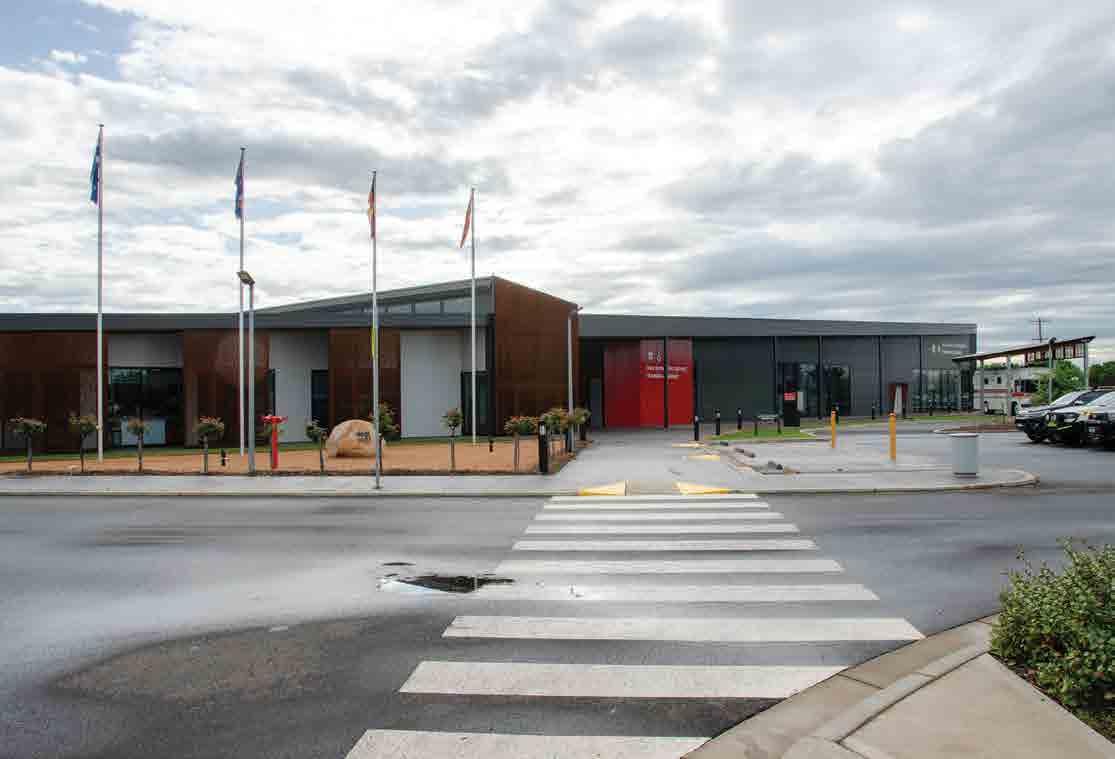
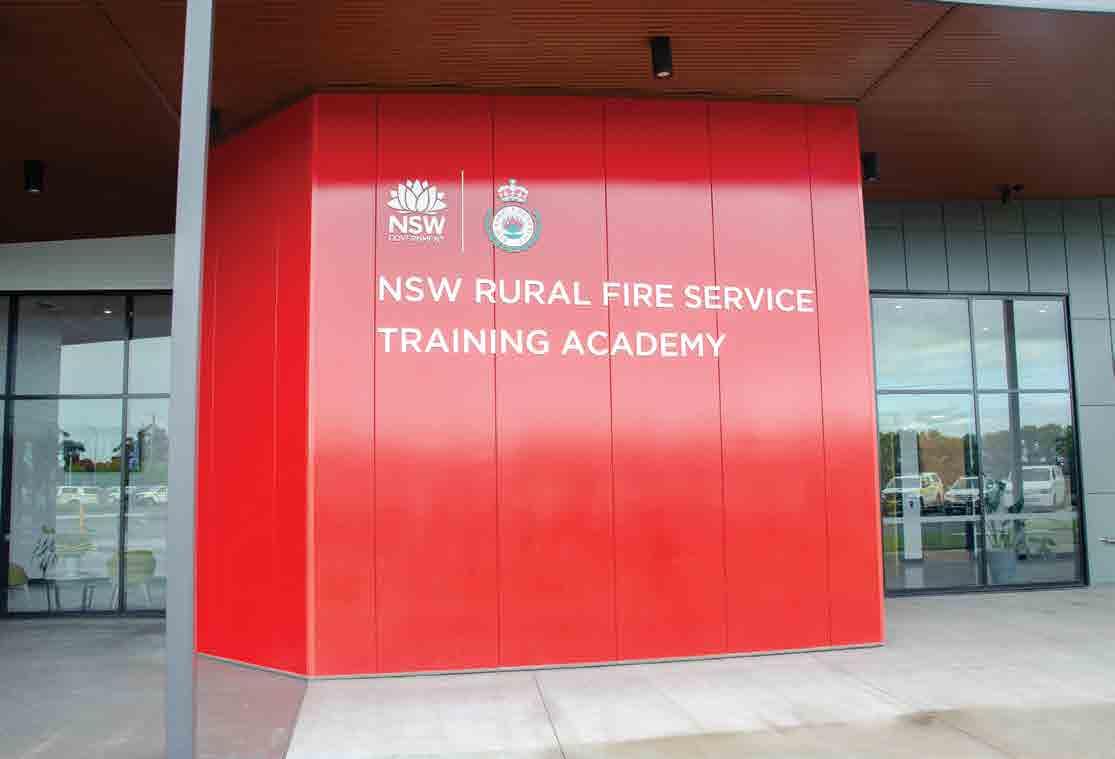
RFS Deputy Commissioner Peter McKechnie said the RFS fleet was important for several reasons.
“Although contract aircraft will remain foundation to aerial fire-fighting operations in NSW, there remains a need to develop a sovereign fleet due to supply & demand issues. We have definitely seen an increasing need for fire-fighting aircraft in Europe, Asia and South America,” he said.
“Common agency owned aircraft has also enhance familiarity and in turn safety of our air crew who perform specialist
tasks such as winching. It also ensures aircraft can be positioned where we want them and where we want them – on a 24/7 basis. This ultimately gives us surety of service and maximizing tax payer monies.”
Deputy Commissioner McKechnie said “We have also ensured all of our aircraft can be used for a variety of roles across various hazards – whether that be fire-fighting, flood operations or search & rescue.”
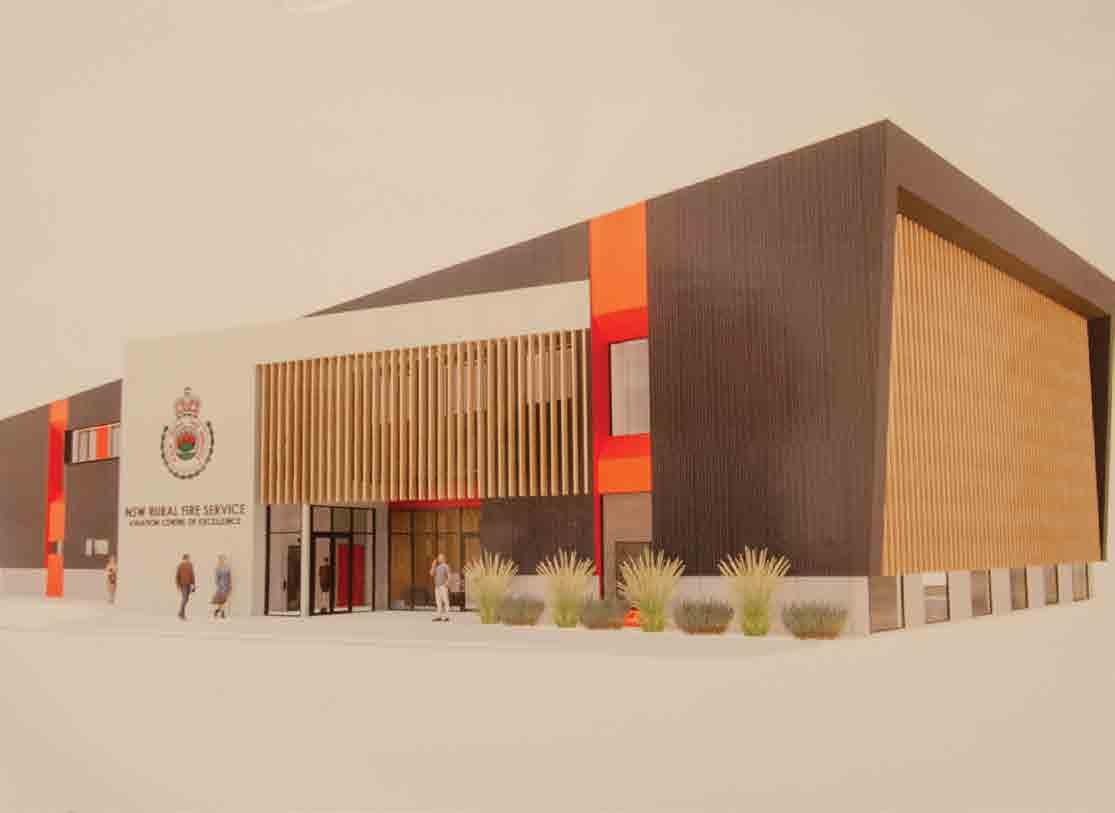
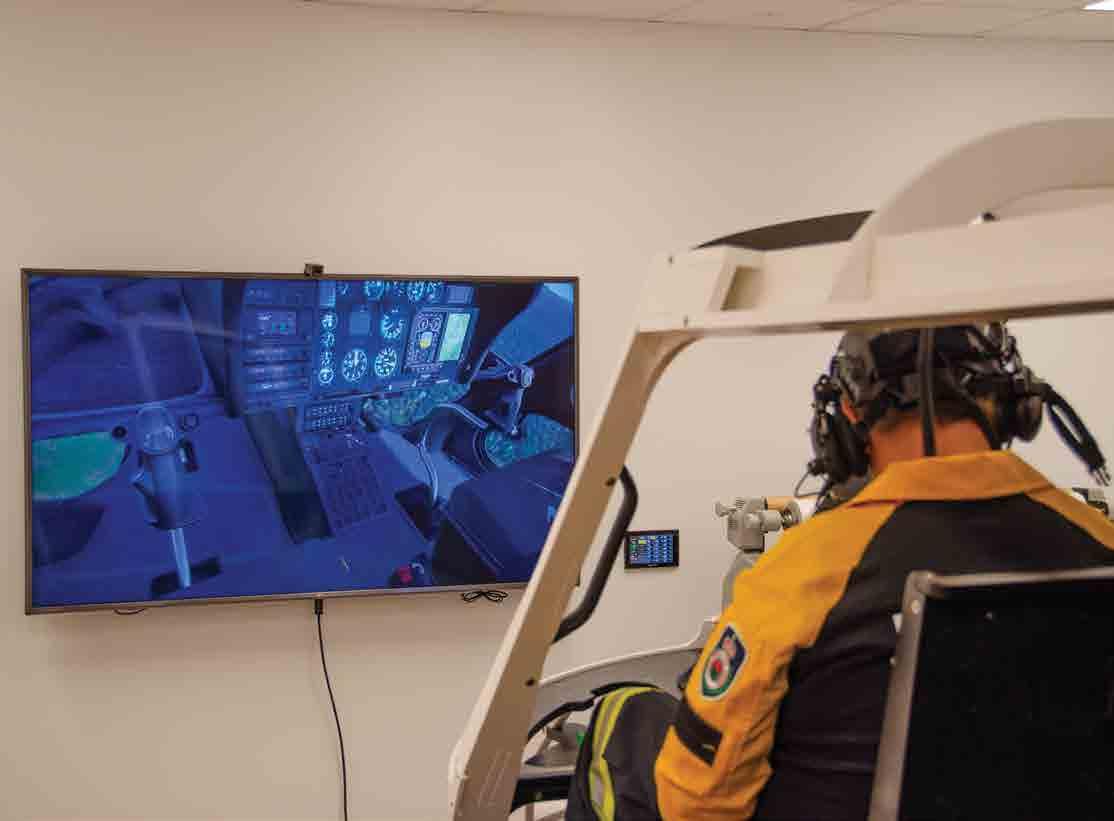
The NSW Government and RFS have taken the national lead in setting the standard for the evolution of airborne fire response capabilities. Coming from what was once a one hundred percent contractor-led firefighting capability to not only taking a more significant role in state-owned assets but thinking outside the box in maximizing the capabilities of the aircraft has shown a sizeable return on investment on the purchase of state assets to protect the lives and property of the people of NSW.
The state of Victoria in Australia is now in its seventh year of contiguous operations of the Night Fire Aviation Program (NFAP). From the humble beginnings of the program, it has now grown to employ state-of-the-art technology on multiple platforms.
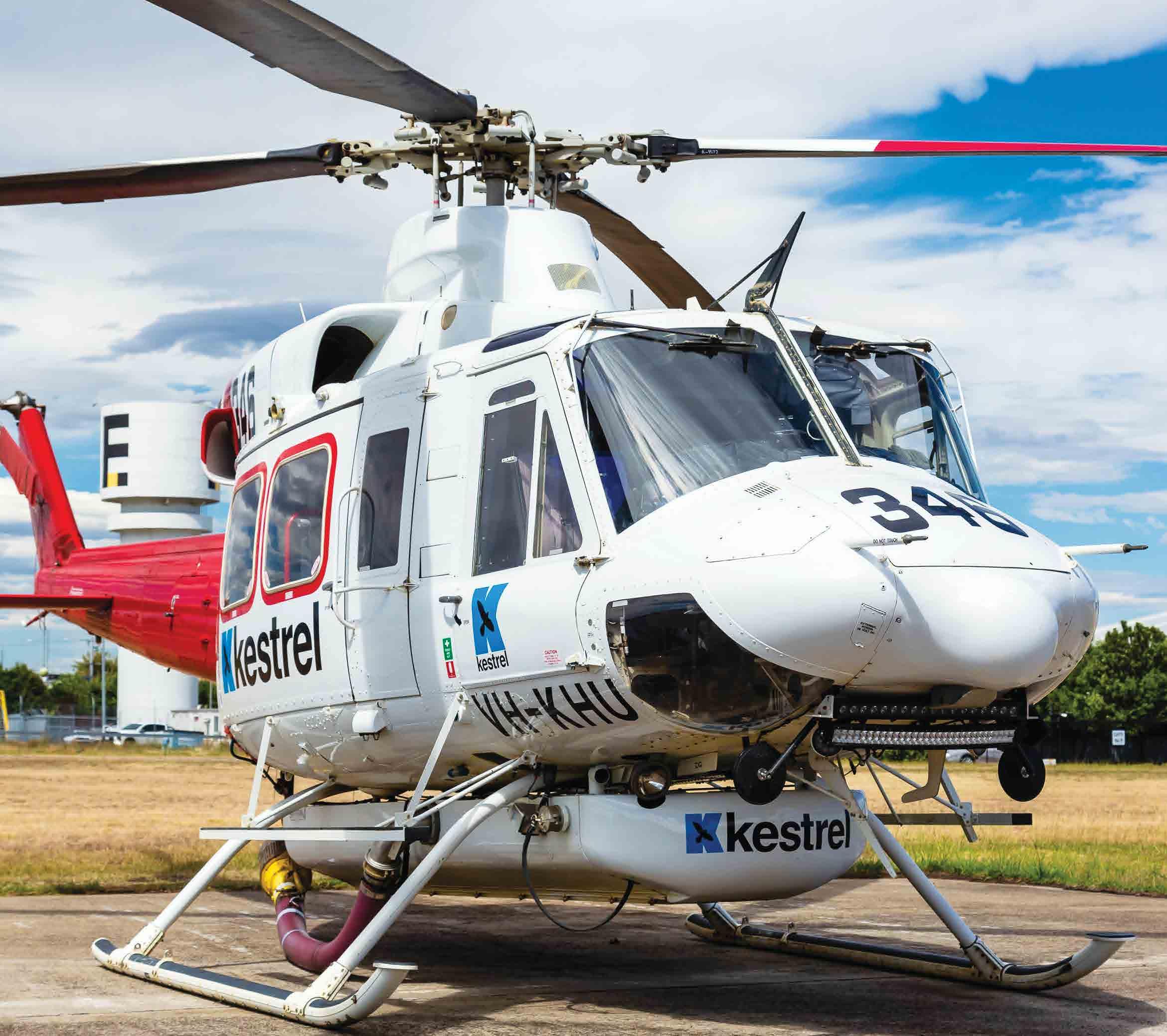
This allows for the emergency management teams to manage a fire incident, and to further trial, understand, and
develop the night aviation attack capability. The program is broken into two separate segments, night firebombing, and night aerial intelligence-gathering services.
Both segments were put to the test on several fires this year within the state. The program is supported with equipment from several operators who are on contract with Emergency Management Victoria (EMV) during the fire season.
After an intensive workup or training program prior to the commencement of the program, all crews were currency certified and also flew several trial flights with their respective rotary platforms to satisfy all CASA and EMV requirements.
Mangalore-based Kestrel Aviation which has developed night fire-bombing systems onto its Bell 412 VH-KHU of Helitak 346, has been with the program from its earliest days.

Coulson Aviation Australia a subsidiary of the North American company, has also been involved with the program
beginning with their Sikorsky S-61 and today with their larger Boeing CH-47 Chinook. Coulson is into its season of operations with the type for both day and nighttime aerial attacks.
The third company contributing to the program is Moorabbin base Microflite Aviation. The company is also no stranger to aerial firefighting with several of its helicopters on contract in Victoria and in other states as air attack platforms and air intelligence gathering (AIG) aircraft. ➤
Microflite operates its Airbus Helicopters H135 VHUJQ or Firebird 308 for this mission. This helicopter has undergone significant upgrades to its external and internal features to make it mission capable.
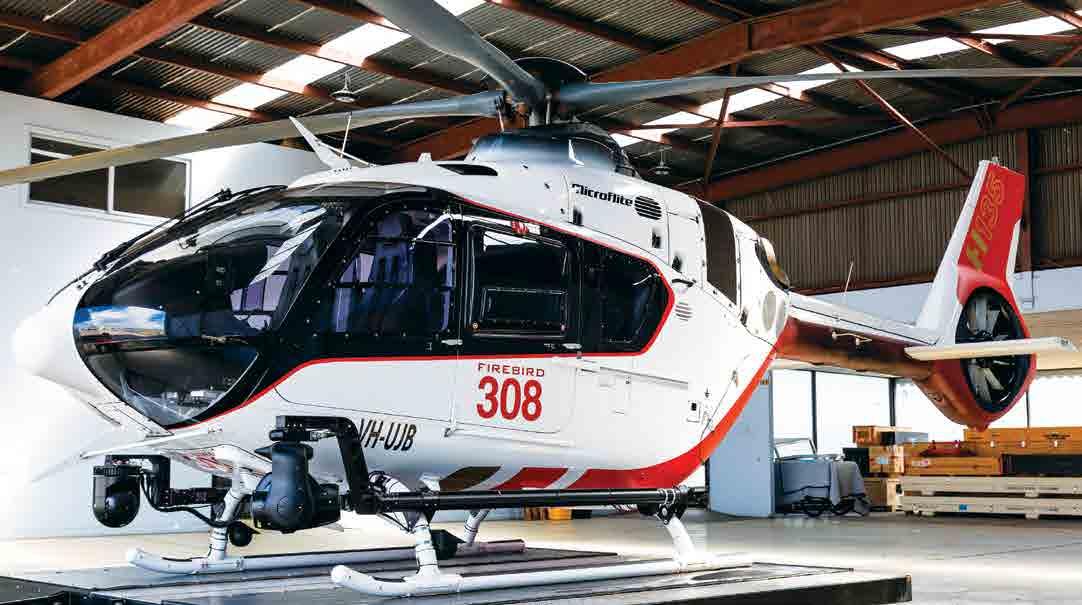

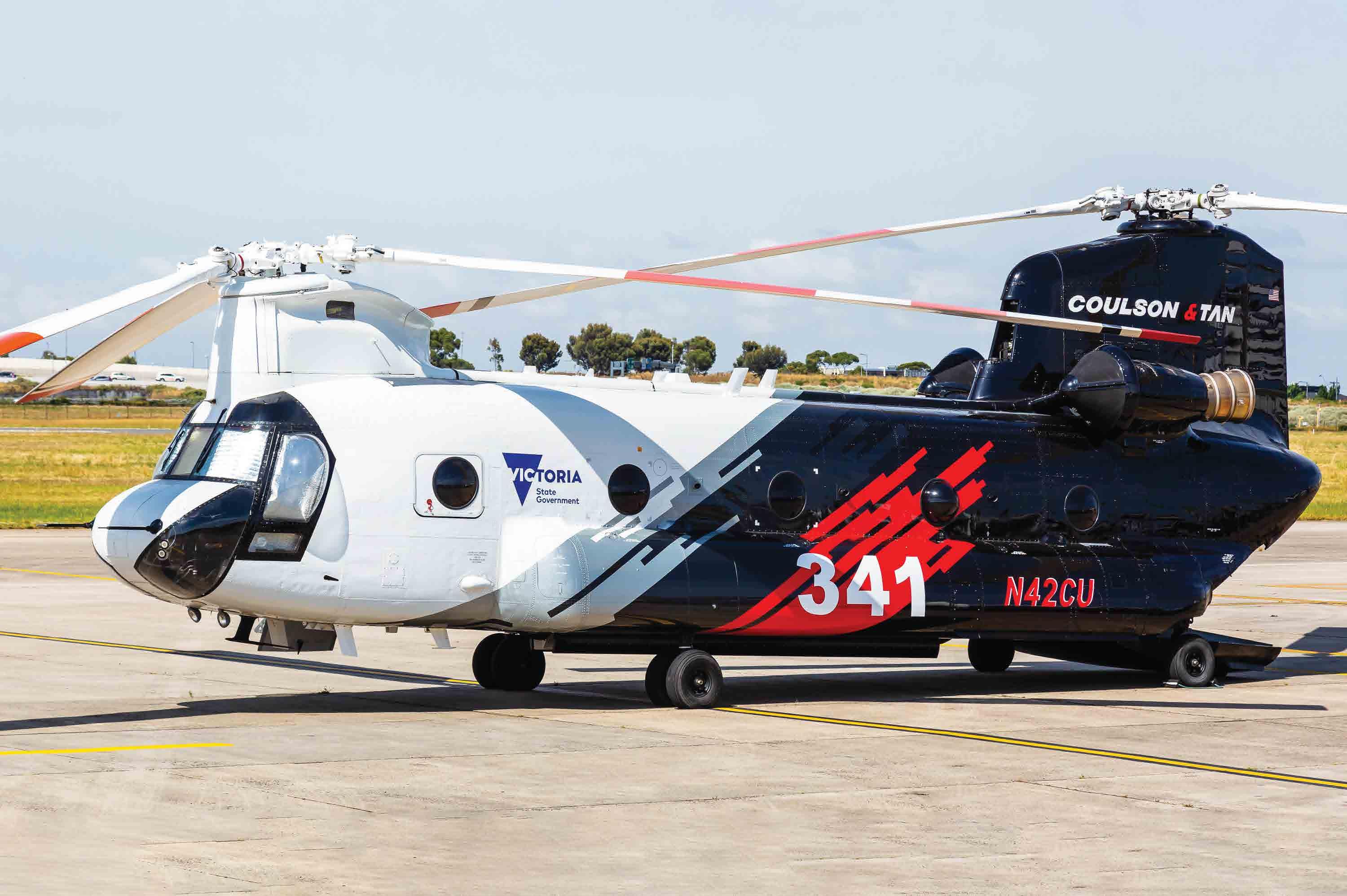
The air attack platform has some of the latest technology incorporated into its operating features. This includes an infra-red high-definition video camera that relays information while airborne and also gathers data during the day and at night for incorporation into a fire attack strategy. The enhancements also enable decision-making while on an active fire and can be streamed to control centers to better inform operations.
EMV also opened a dedicated firebase at Essendon Fields Airport this year to accommodate the fleet as they grow the program giving the operational personnel premises to operate and integrate within.
The NFAP program will continue to allow it to be best practice within the aerial firefighting community within Australia. Several other states and territories have now signaled their intention to undergo a similar program and have been watching Victoria’s progress with keen interest.
The program operates alongside a 50-plus state fleet of aircraft, protecting Victorians from fire threats.



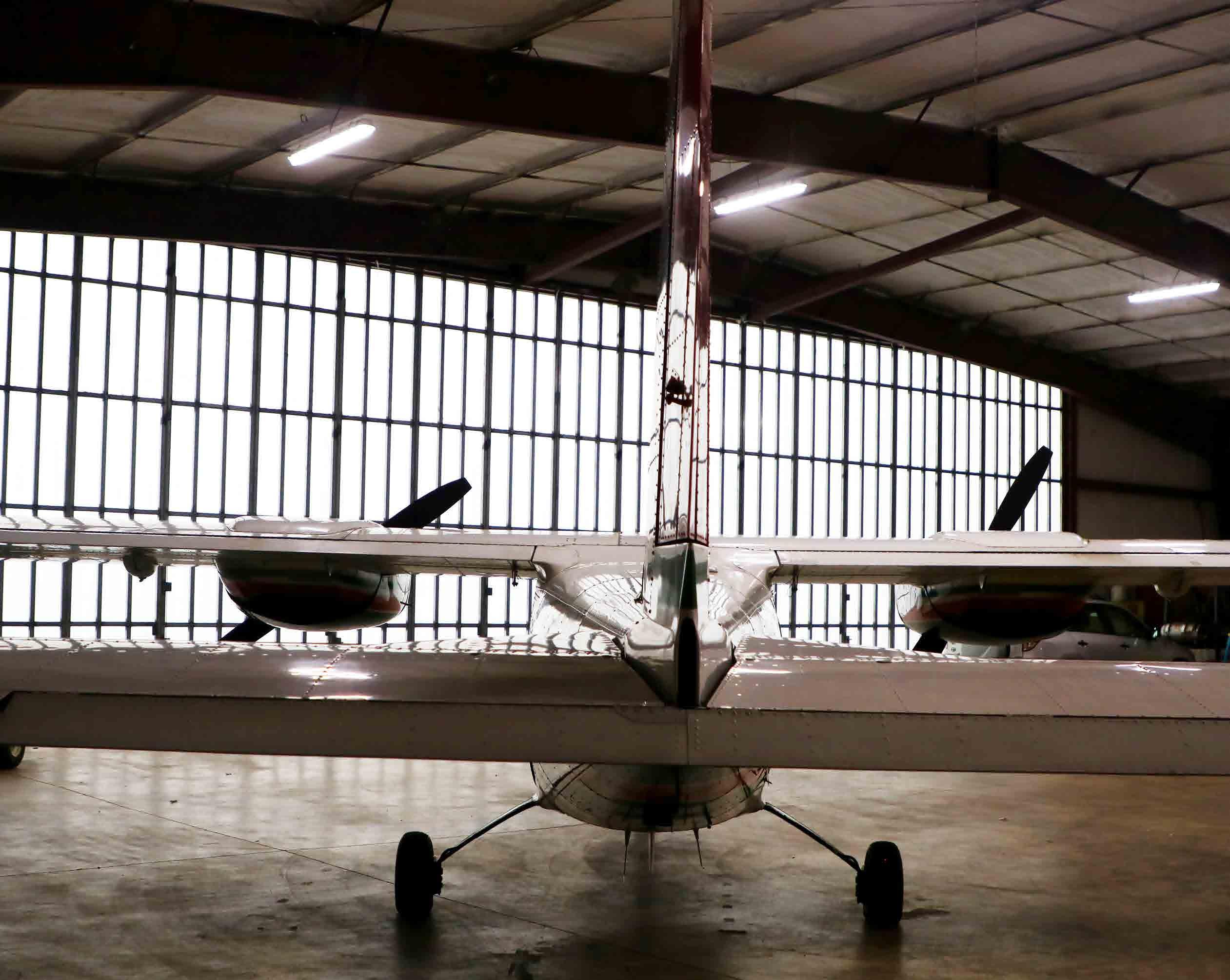
The Oregon Department of Forestry’s (ODF) Partenavia P-68 Observer has had many uses in the last 40 years, but its most recent function is as the platform for the department’s nighttime wildfire detection work. Using night vision and a FLIR camera system that is paired with an augmented reality mapping system, this multi-mission aircraft (MMA) allows for quick detection and response to dozens of wildfires every year.
During fire season, the Partenavia flies at night looking for signs of wildfires started by lightning. What makes this system unique and successful is the marrying of several technologies that couldn’t do the job on their own. ODF uses night-vision goggles (NVGs) and infrared sensors to initially spot suspected new fires. Then a laser pointer that is only visible in the NVGs, is used to communicate the exact
position of the possible new fire to the observer/camera operator. Finally, the observer uses the infrared sensors and the high-power zoom to confirm whether it is actually a new fire and not another light source. Using any of these tools alone would be only fractionally as effective and take up more valuable time.
“As far as I’m aware, we’re one of the first states combining night vision and infrared into our aircraft to detect fires early,” Cole Lindsay, aviation coordinator for ODF’s Northwest Oregon Area, which protects approximately 3.5 million acres of forestland in northwestern Oregon from wildfire. “Using these tools together allows us to fly at night after a thunderstorm, find small fires in remote areas, and then send detailed information to our dispatch center so that they can send out the appropriate resources to extinguish the fire.”
Once the point is determined to be a new fire it gets documented and reported. The observer views the location on a map screen and the augmented reality system (ARS), which overlays all known information like roads, streams, and names, onto the video screen as if they were on the ground. The still images and videos on these two screens give a sense of where the fire is and what it is doing. Going a step further, attributes of the fire are drawn and labeled on the video screen, and ARS turns those into data points and polygons.
During the summer months, the aircraft is centrally based in Redmond, Oregon to allow access to the entire state. Using the MMA to catch fires early is just one of the ways that ODF works to prevent larger wildfires.
In the 2022 fire season, the MMA detected 69 fires, 60 of which were detected during extreme fire danger. The early detection of these fires helped to prevent the majority of them from growing into larger fires. Out of the 69 total detections, none of the fires on ODF-protected lands grew larger than 10 acres. Over the span of the season, ODF pilots and operators banked approximately 92 hours in the sky in search of new fire starts, the most in one night being 21 detections.
The MMA is also used as an ‘eye in the sky’ for incidents. The MMA provides a valuable aerial perspective and
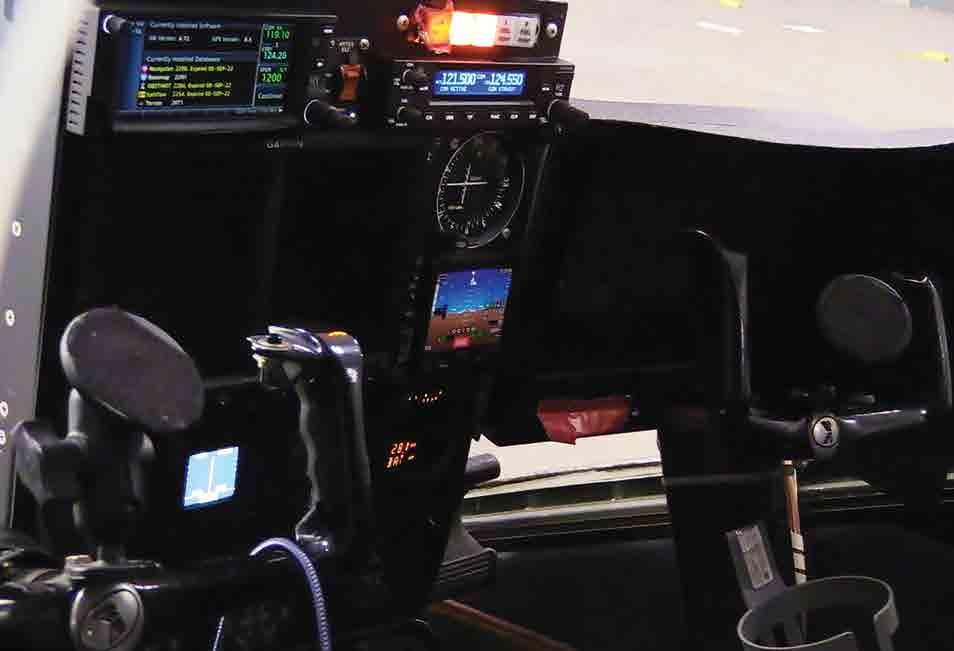
facilitates the gathering of information including the fire perimeter, possible helispots, and the attributes and behavior of the fire that can be loaded into a map for the ground crews to use. The information gathered is provided to the ground as a complete package that allows ground forces to view, strategize, and attack the fire with more situational awareness than they would have otherwise. In the 2022 season, the Partenavia executed four of these mapping missions.
“We’re very proud of our achievements using the Partenavia,” said Neal Laugle, ODF Aviation Unit manager. “However, with the high demand for the resource, it’s difficult to meet the needs of the entire state with just one aircraft, which leaves our team having to prioritize certain areas over others during times of extreme fire danger in the state.”
Though the aircraft and program received investments in the 2021 Oregon Legislative Session, there is still plenty of room to grow.
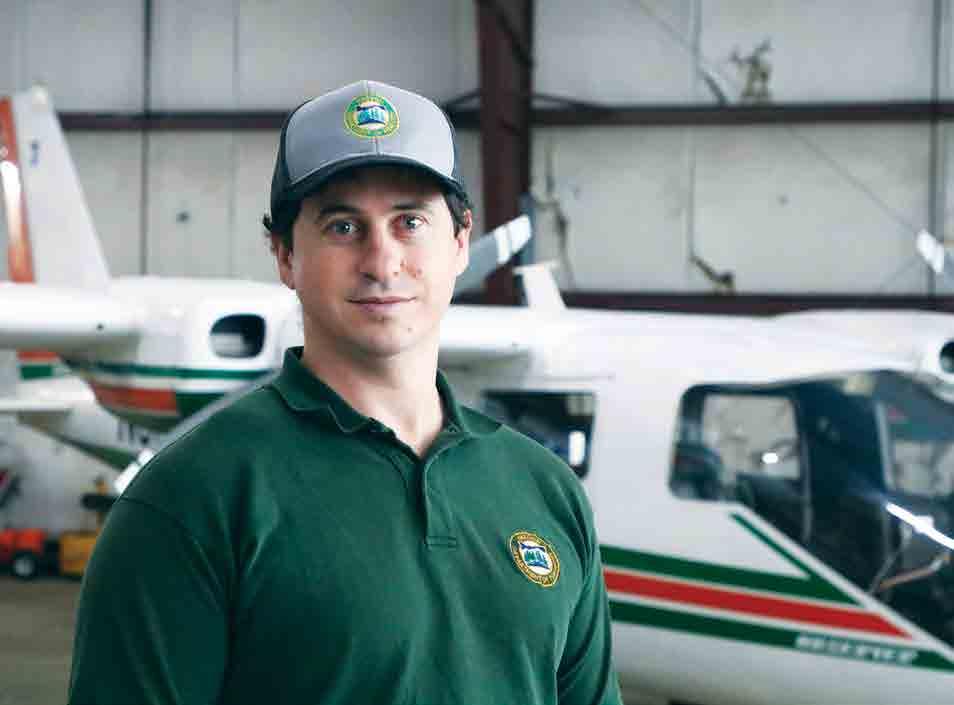
“A wish list item for our program would be another multimission aircraft to better support the entire state and to create a backup for the agency since the Partenavia is 40 years old. The aircraft is not getting any younger, and with that age comes more maintenance,” said Laugle.


 Story by Paul Seidenman, images by Marissa Fortney
Story by Paul Seidenman, images by Marissa Fortney
Neptune Aviation Services is going beyond its wellknown air tanker operations with plans to offer air attack services by June 1 of this year, deploying two Rockwell Aero Commander 690A twin turboprops. The aircraft was previously operated by the air attack division of Northern Wings Aviation of Bozeman, Montana. Neptune, which purchased the Northern Wings operation last year, has rebranded its Neptune Aviation Services Air Attack.
According to Neptune Aviation Services’ President Jennifer Draughon, the primary mission of the aircraft in the air attack mission will be to coordinate the movement of air assets such as tankers, lead planes, and helicopters deployed over fires, as well as to communicate with fire incident commanders on the ground. Other roles will include wildfire mapping and fire surveillance.

Draughon reported that entering the air attack sector of aerial firefighting was a natural move for Neptune, whose current air tanker fleet consists of nine BAe 146 jets formerly used in commercial passenger service and reconfigured as air tankers.
“It was critical that we transition into this line of business— smoothly and successfully—and then work to expand it,” said Draughon. “After performing our due diligence with pre-buy inspections of airframes, company performance, and other business evaluation reviews, we concluded that because of Northern Wings’ small size, it was manageable as a new line of business and diversification effort for Neptune. At the same time, it came with existing US Forest Service (USFS) contracts and was recommended to us by one of our employees who had worked there in the past.” ➤
The two Aero Commanders are currently under call-whenneeded (CWN) contracts with the US Forest Service (USFS) Region 1, covering Northern Idaho, Montana, North Dakota, and a small part of South Dakota.

Expanding a business beyond its core product or service might be considered risky for some companies. Yet, as Draughon noted, the business case for adding air attack to Neptune’s highly specialized large air tanker-fire retardant dropping operation was two-fold.
“One aspect of the diversification is to provide our customers with more answers to the solutions they seek—from a source they know and trust,” she explained. “As we expand internationally, the aerial firefighting contracts, we have noted, often seek a one-stop package approach. In that regard, we want to be able to offer the best solution possible for the contractual requirements being sought.”
Draughon added that expanding into air attack services also presents an excellent opportunity for pilot recruitment. “This allows us to bring in pilots and
have them gain experience in the fire traffic area, be mentored under the expertise of our pilots, and learn the environment and Neptune’s culture with the idea of moving into the airtanker platform,” she stated. “Air tanker pilots are a highly-skilled, unique group of professionals that are hard to come by, so we see the air attack platform as the potential to build our pilots.”
“Our entry into air attack accomplishes many goals,” stated Tim Mead, Lead Pilot-Air Attack for Neptune. “It’s a great extension for our aerial firefighting tanker business, allowing us to develop a deeper talent pool of pilots specializing in aerial firefighting.
At the same time, he explained, it gives pilots a career path to move from their general aviation experience to air attack and tanker pilot. “They will have the opportunity to tap into the tanker team’s knowledge and expertise in terms of fire behavior, communication with the tanker pilots, and the needs of the firefighting team on the ground,” he noted.
All training of the air attack pilots, reported Mead, will be handled in-house by Neptune’s instructors.
The Aero Commander is a versatile platform widely considered one of the most ideal aircraft for air attack missions.“It was important to integrate air attack training into the training system that we use for pilots throughout the company,” he said. “When you think about Neptune’s 30 years of experience in training tanker pilots in-house, it made sense for us to train our air attack pilots. Also, since Neptune tanker training standards have been incorporated into the air attack training, that will make it easier for pilots to advance from air attack to tanker operations.”

Mead added that the aircraft would be the primary device for ground and flight-based pilot training. Specifically, a minimum of 25 hours will be performed in the airplane, following 54 hours of ground instruction. Mead and one of the former Northern Wings pilots will handle training for the air attack operations. ➤
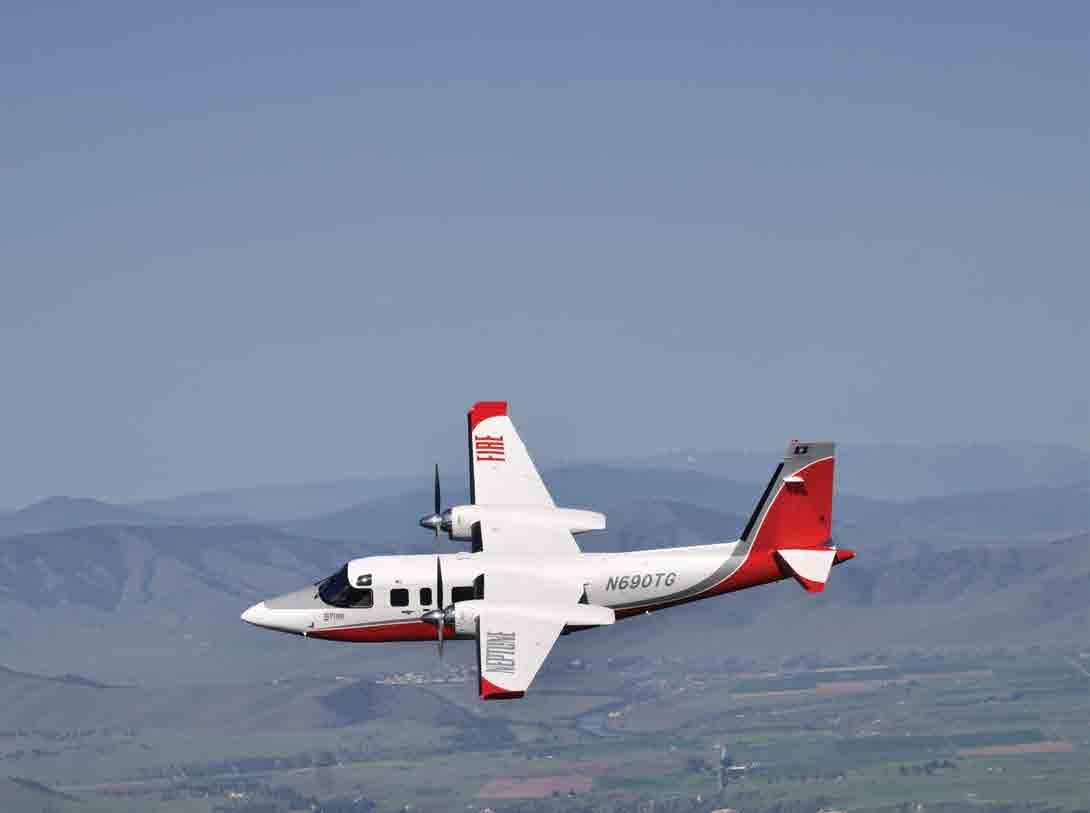
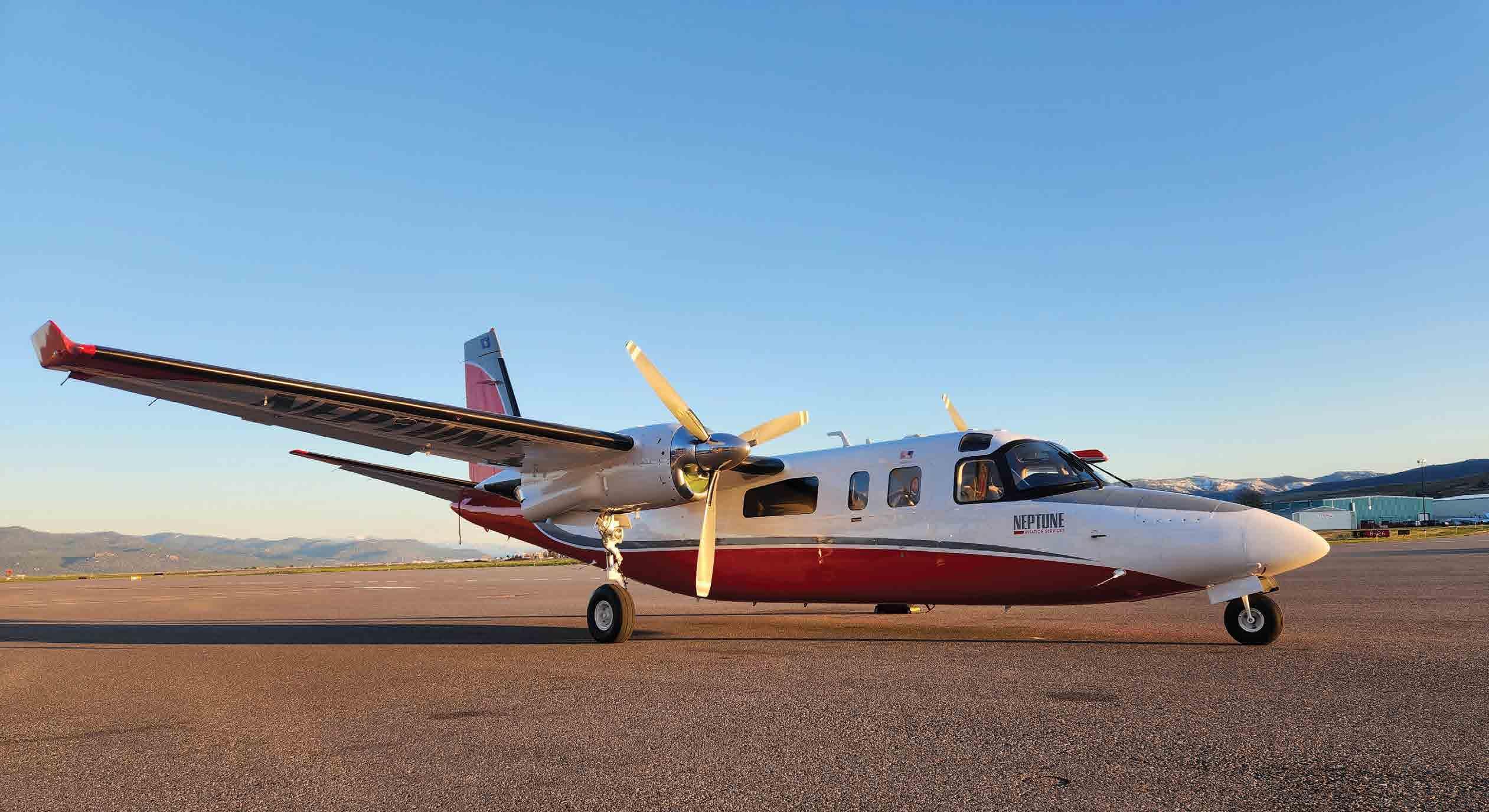
Asked to cite how the air attack mission differs from those of the air tankers, Mead explained that, for starters, the level of communication activity in an air attack aircraft during a fire scenario is intense.
“There are as many as six different radios on the aircraft, and during air attack, the USFS Air Tactical Group Supervisor (ATGS) who rides with our pilot, coordinates incident airspace, manages the incident air traffic, and is the link between ground firefighters and the aerial assets. Our pilots must understand the airspace and the ATGS’s needs to locate the aircraft in a safe and efficient position over the fire to support the mission,” he said.
“It’s our job in air attack to make the ATGS’s life as easy as possible while operating over a fire, which is why our pilot training puts a premium on the ability to communicate.”
Mead pointed out that air attack pilots fly the aircraft solo, unlike an air tanker, which operates with two pilots. “There are other team members onboard the aircraft, but only one pilot,” he said. “For the air attack pilot, that adds an additional level of responsibility for making decisions about safety, flight operations, and conditions over the fire.”
He also noted that air attack pilots fly in a confined, lowlevel environment, while tanker pilots fly even lower and within even more confined spaces. “Both Neptune training models reflect the different environments in which the pilots fly and prepare them for the rigors of flying in a wildfire environment,” he said.
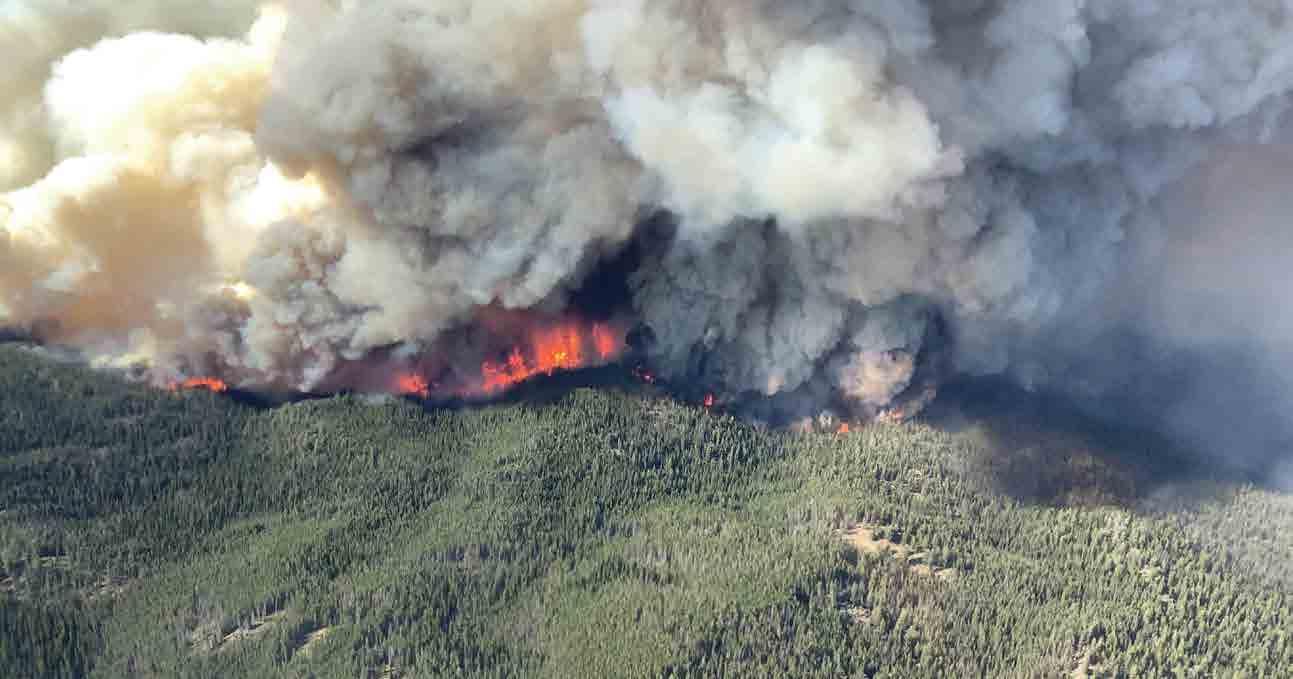
According to Nic Lynn, Neptune Aviation Service’s VicePresident, Operations, adding air attack to Neptune’s portfolio of services was relatively simple. ➤

 Adding air attack platforms to their expertise will provide customers with an all-round solution from Neptune Aviation.
Adding air attack platforms to their expertise will provide customers with an all-round solution from Neptune Aviation.


“Air attack operations are conducted under FAR Part 135 regulations, and since Neptune has had a Part 135 operation for the past 15 years, adding the aircraft and mission to our organization wasn’t a big challenge,” he said. “While it differs from our Part 137 air tanker operations, our air attack program will benefit from our existing Part 135 and Part 145 organization’s administration, leadership, and maintenance personnel. We
will have five trained and USFS-qualified pilots to support the two Aero Commanders, including three we hired directly from Northern Wings. We have the people and the certifications to stand up this new mission.”
As with its BAe 146 tanker fleet, Neptune will maintain the Aero Commanders in its Missoula Airport (MSO) maintenance facilities. A product of the Aero Commander

Division of the long-gone North American Rockwell Corporation in the 1970s, Lynn said that the airframes and engines would be maintained in accordance with the maintenance and inspection programs of the original equipment manufacturers (OEM). For the Garrett AirResearch TPE 331-5-251, the OEM is Honeywell. The Aero Commander 690 aircraft is supported by Twin Commander Aircraft, LLC. He said Twin Commander has been very supportive of the airframe to date. Neptune’s Aero Commanders have an average age of 48 years and 6,500 hours on the airframe. With no major inspections due at this time, they were ready for deployment in June of this year.
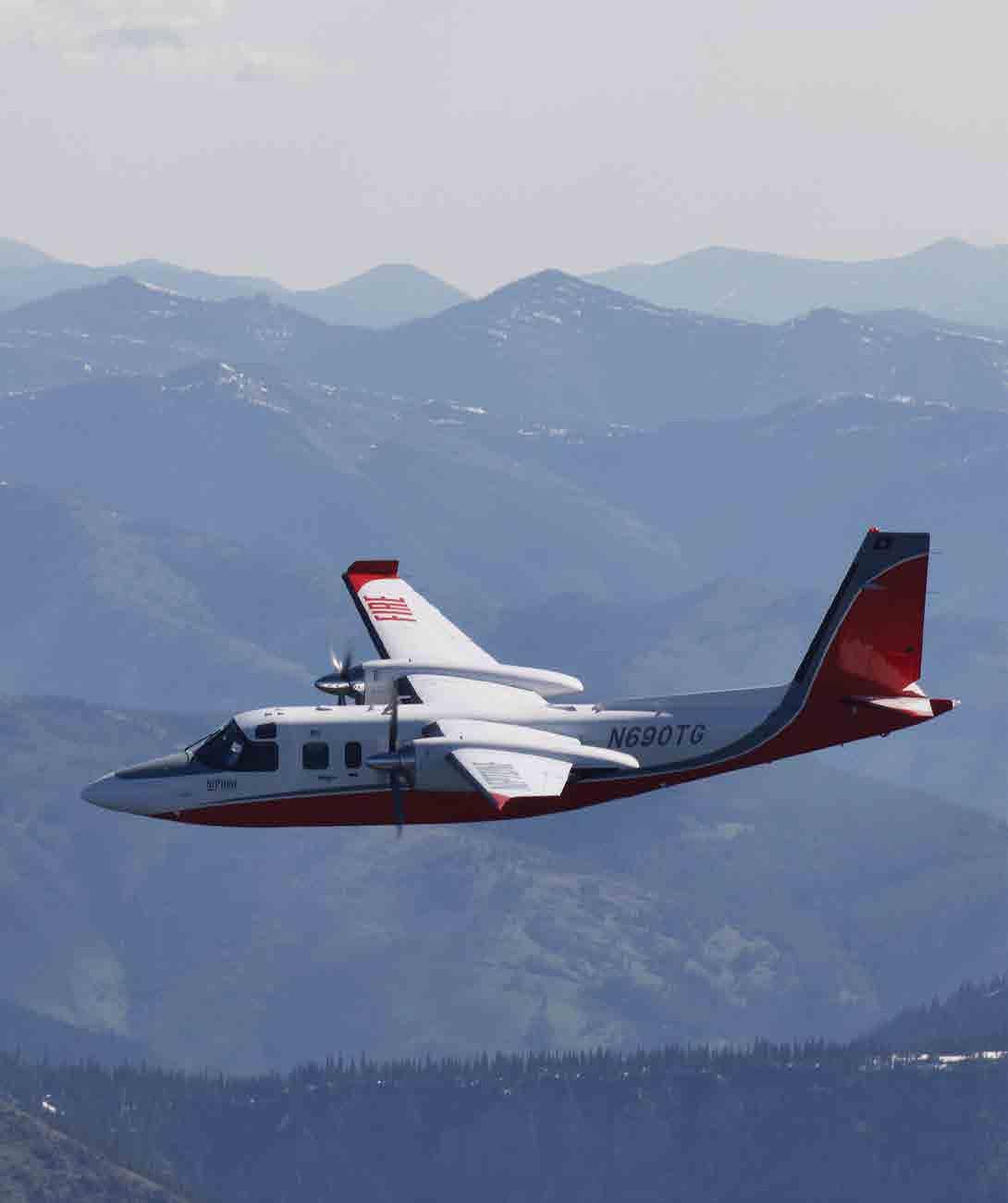


Neptune, of course, sees air attack as a growth opportunity. Along that line, Draughon reported that expanding the air attack fleet is definitely in the company’s carefully crafted strategic planning.


“We will be expanding the fleet. Neptune’s model of expansion has always been methodical, taking into account all factors foreseeable for success well into the future,” she said. “As we study our growth model, we will be looking at bringing new technology to the airframes and exploring the different platforms that bring the greatest safety, efficiency, and effectiveness at an affordable price point for our customers.”
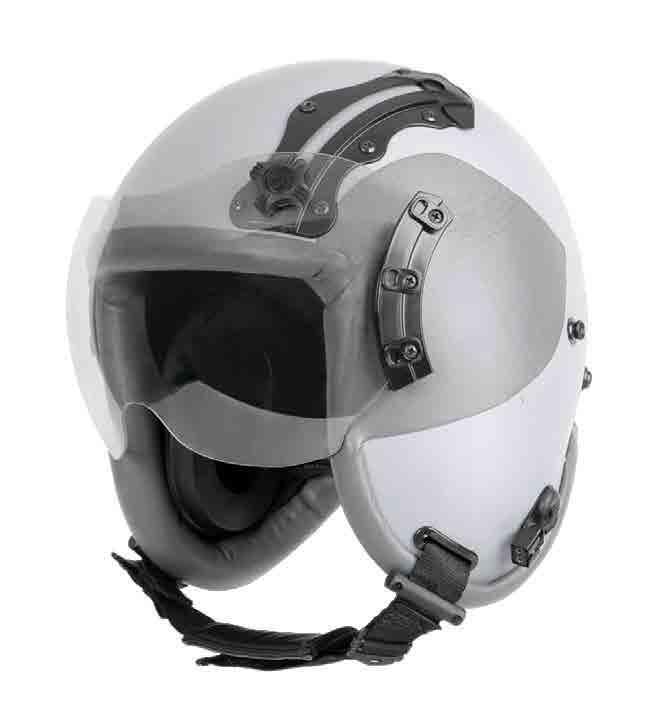
For the first time since the pandemic, the AFF series held by Tangent Link will be heading back downunder to Australia. Hosting this year’s iteration in Dubbo, New South Wales, the home of the New South Wales Rural Fire Service Academy. Like events past, the Australian Aerial Firefighting show will be two full days of packed agenda items, starting with the pre-event drinks hosted by AerialFire Magazine, then moving into two packed days of speakers and events.
Unlike the last several AFF events, the Australian show will be the first in several years to feature a static display portion, thanks largely to the event space being just a short walk to the static display area located at Dubbo regional airport.

The Australian show will feature an opening address from the Commissioner of the New South Wales Rural Fire Service, Commissioner Rob Rogers and move into two days of industry speakers with the latest updates in policies, practices, training, and procedures that will benefit the global aerial firefighting community.
In addition to the show floor featuring many Australian and international vendors, the event will include several live demonstrations of firefighting and search and rescue capabilities making this year’s Australian show one of the most interactive of years past.


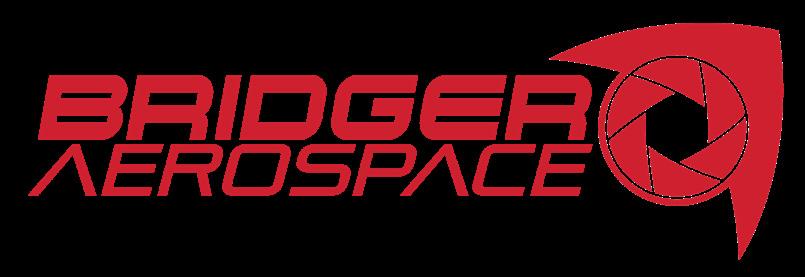
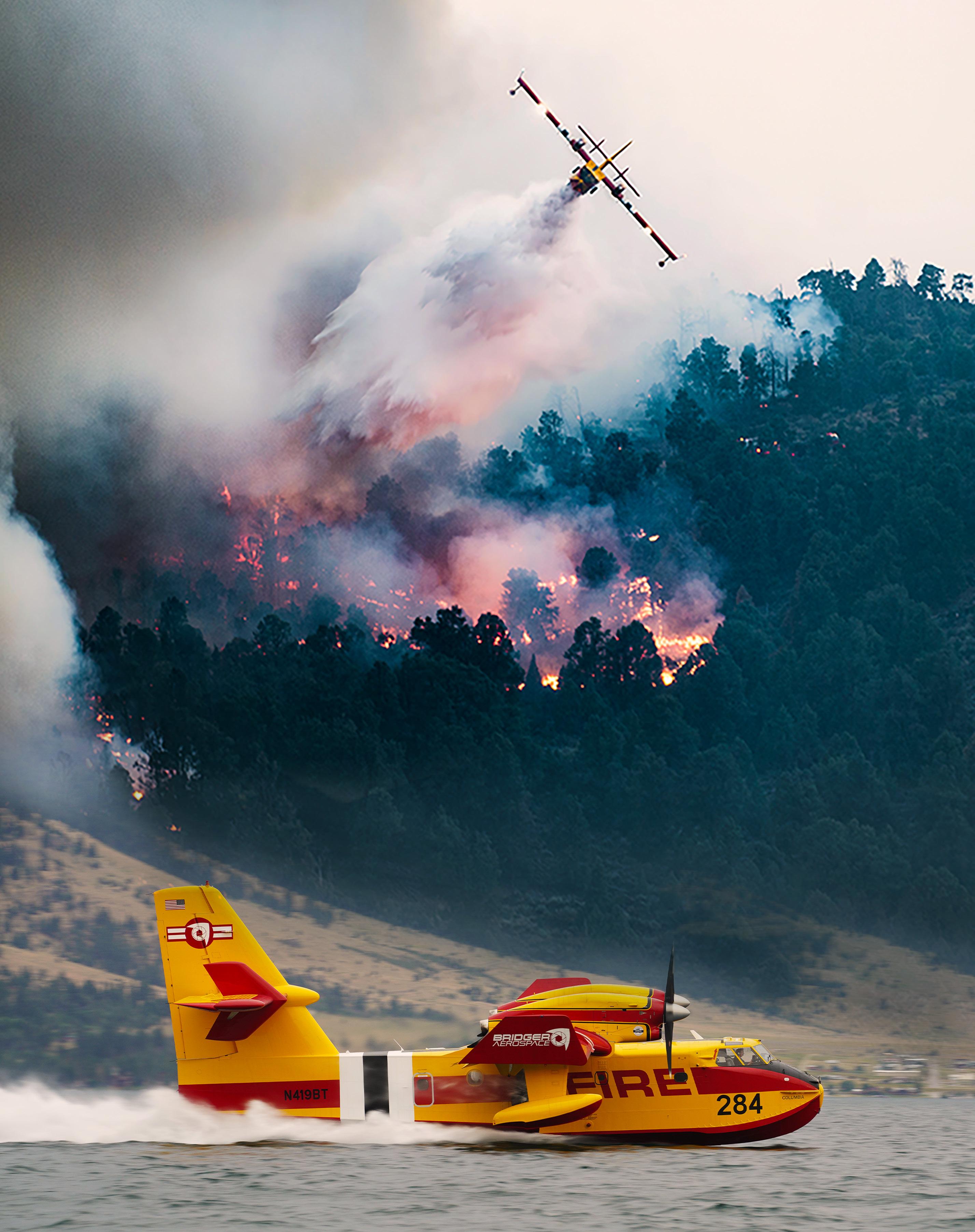
0800 - 1000 Registration & Exhibition
0800 - 1000
1000
Registration & Exhibition
1015 M Moderator’s Opening Remarks – Anthony Clark, Director of Communications, NSW Rural Fire Service, Australia
1000 – 1015 Moderator’s Opening Remarks s – Anthony Clark, Director of Communications, NSW Rural Fire Service, Australia
W Welcome to Country – Mr Lewis Burns – Tubba-Gah Wiradjuri man
1015 - 1025 Wellcome Address – Commissioner Rob Rogers AFSM, NSW Rural Fire Service, Australia
1015 - 1025
Welcome to Country – Mr Lewis Burns – Tubba-Gah Wiradjuri man
Welcome Address – Commissioner Rob Rogers AFSM, NSW Rural Fire Service, Australia
1025 - 1050 Address – The Hon. Jihad Dib, MP, NSW Minister for Emergency Services, Australia Invited
1025 - 1050 Address
1050 - 1115 National Fleet – National Aerial Firefighting Centre (NAFC), Australia Invited
The Hon. Jihad Dib, MP, NSW Minister for Emergency Services, Australia Invited
1115 - 1125 Questions & Answers
1050 - 1115 National Fleet – National Aerial Firefighting Centre (NAFC), Australia Invited
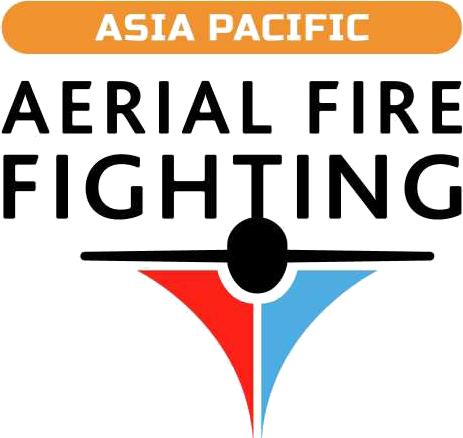
1115 - 1125 Questions & Answers
NEW WAYS & SAFER PRACTICES
NEW WAYS & SAFER PRACTICES
1125 – 1150
1125 – 1150
A Aviation Safety – Making it Right for those Inflight – Peter McKechnie, Deputy Commissioner, New South Wales Rural Fire Service, Australia
Aviation Safety – Making it Right for those Inflight – Peter McKechnie, Deputy Commissioner, New South Wales
Rural Fire Service, Australia
1150 - 1215 T TBC – Emergency Management Victoria, Australia Subject to Approval
1150 - 1215 TBC – Emergency Management Victoria, Australia Subject to Approval
1215 – 1345 Luncheon Break & Networking
1215 – 1345
Luncheon Break & Networking
1345 - 1410 TBC – Stuart Sprung, AMU Chief of Flight Operations, CAL FIRE, USA Invited
1345 - 1410 TBC – Stuart Sprung, AMU Chief of Flight Operations, CAL FIRE, USA Invited
1410 - 1435
1410 - 1435
1435 - 1500
1435 - 1500
Aerial Suppression Effectiveness – A Research Perspective – Dr Matt Pluinski, Research Scientist, Bushfire & Behaviour Suppression, CSIRO National Bushfire Behaviour Research Laboratory, Australia
Aerial Suppression Effectiveness – A Research Perspective – Dr Matt Pluinski, Research Scientist, Bushfire & Behaviour Suppression, CSIRO National Bushfire Behaviour Research Laboratory, Australia
Q QFES Integration of New Capability – Superintendent Martin Gibson, Executive Manager, State Air Operations, Queensland Fire and Emergency Services (QFES), Australia
QFES Integration of New Capability – Superintendent Martin Gibson, Executive Manager, State Air Operations, Queensland Fire and Emergency Services (QFES), Australia
1500 – 1530 Refreshment Break & Networking
1500 – 1530
Refreshment Break & Networking
INDUSTRY COLLABORATION – LOOKING TO THE FUTURE
INDUSTRY COLLABORATION – LOOKING TO THE FUTURE
1530 – 1550 TBC – Fortress North America, USA
1550 – 1610 TBC – Erickson, Inc., USA & Kestrel Aviation Pty, Australia
1530 – 1550 TBC – Fortress North America, USA
1610 – 1630 TBC – Wayne Coulson, CEO, Coulson Aviation, Canada
1550 – 1610 TBC – Erickson, Inc., USA & Kestrel Aviation Pty, Australia
1630 – 1640 Moderator’s Closing Remarks
1610 – 1630 TBC – Wayne Coulson, CEO, Coulson Aviation, Canada
1630 – 1640 Moderator’s Closing Remarks
1645 – 1700 Bus to RFDS / Viewing Zone
1700 – 1720 LAT Drop Demonstration & View RFDS Facility Subject to Availability
1730 – 1830 Drinks Recepption
1830 Event Dinner
www.artemis.smithmyers.com

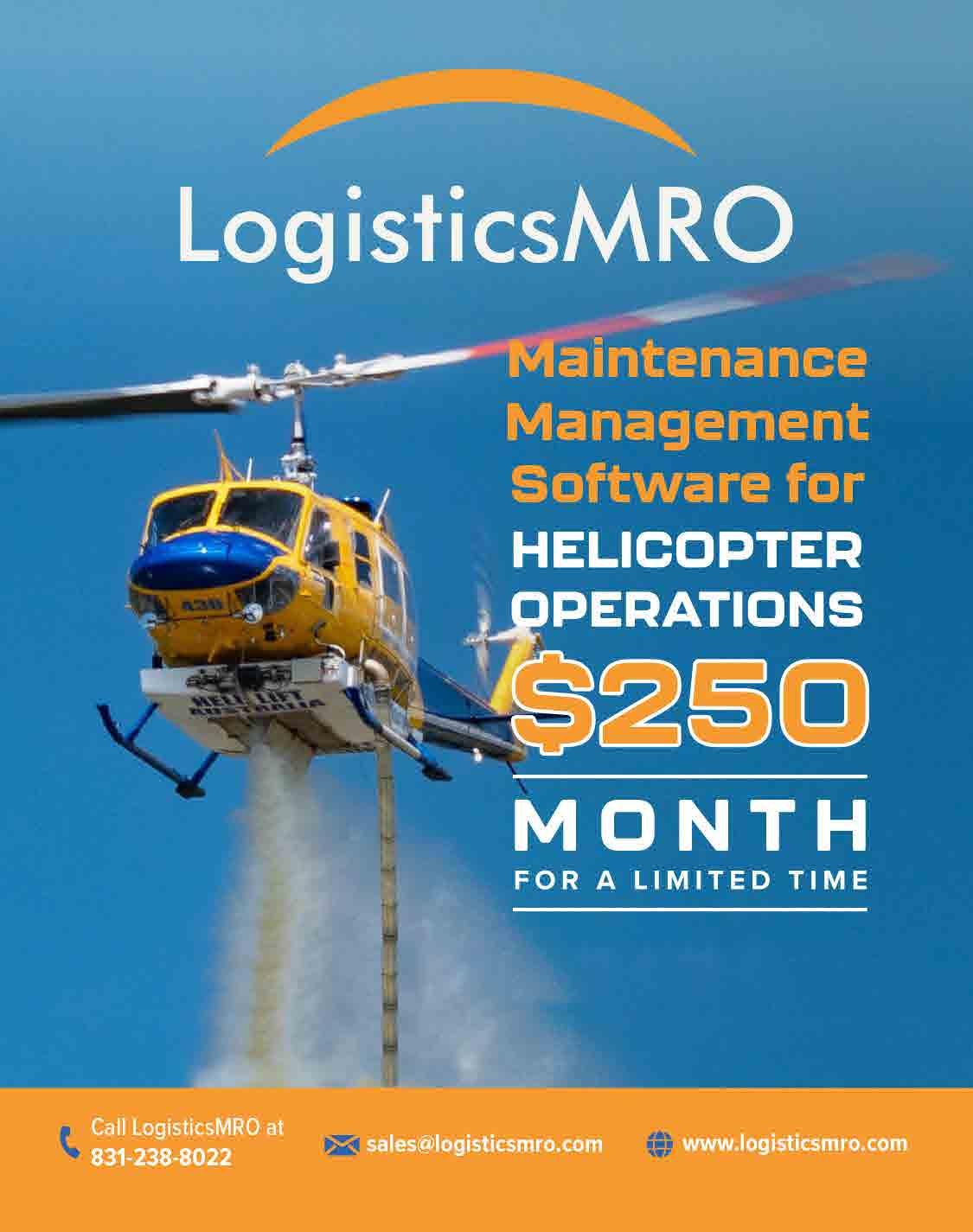
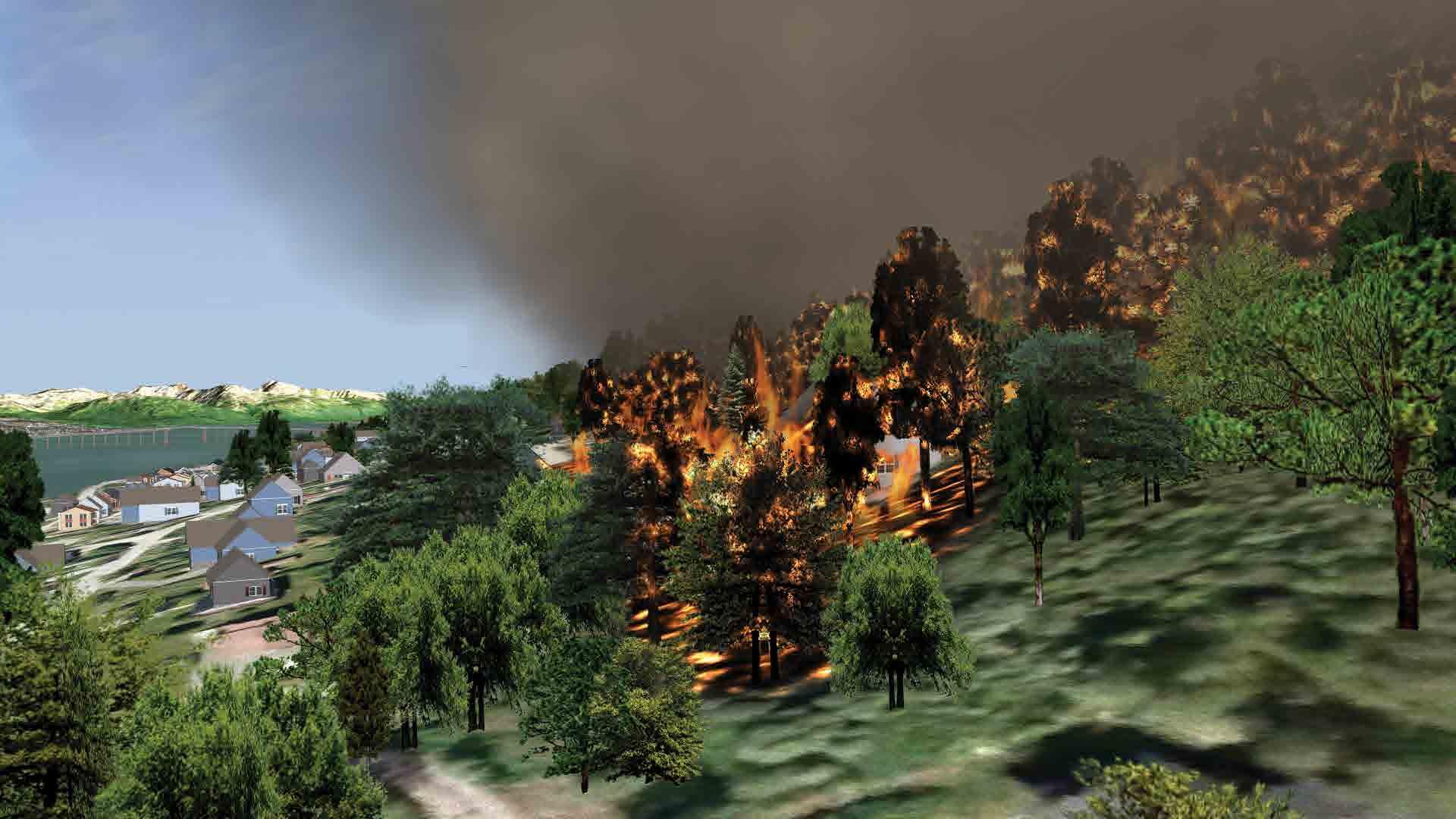
Cascade Pressure Cowl Delivers!
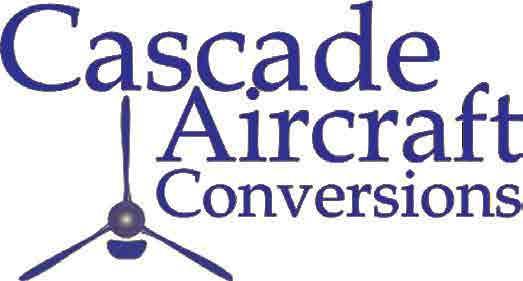
u Increase in Clean Air Volume to PT6 engine
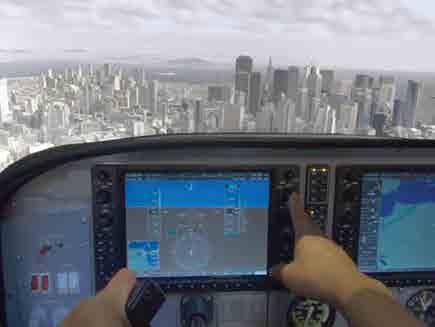
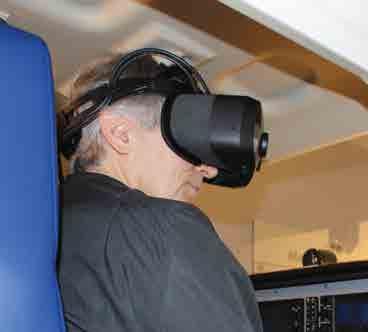

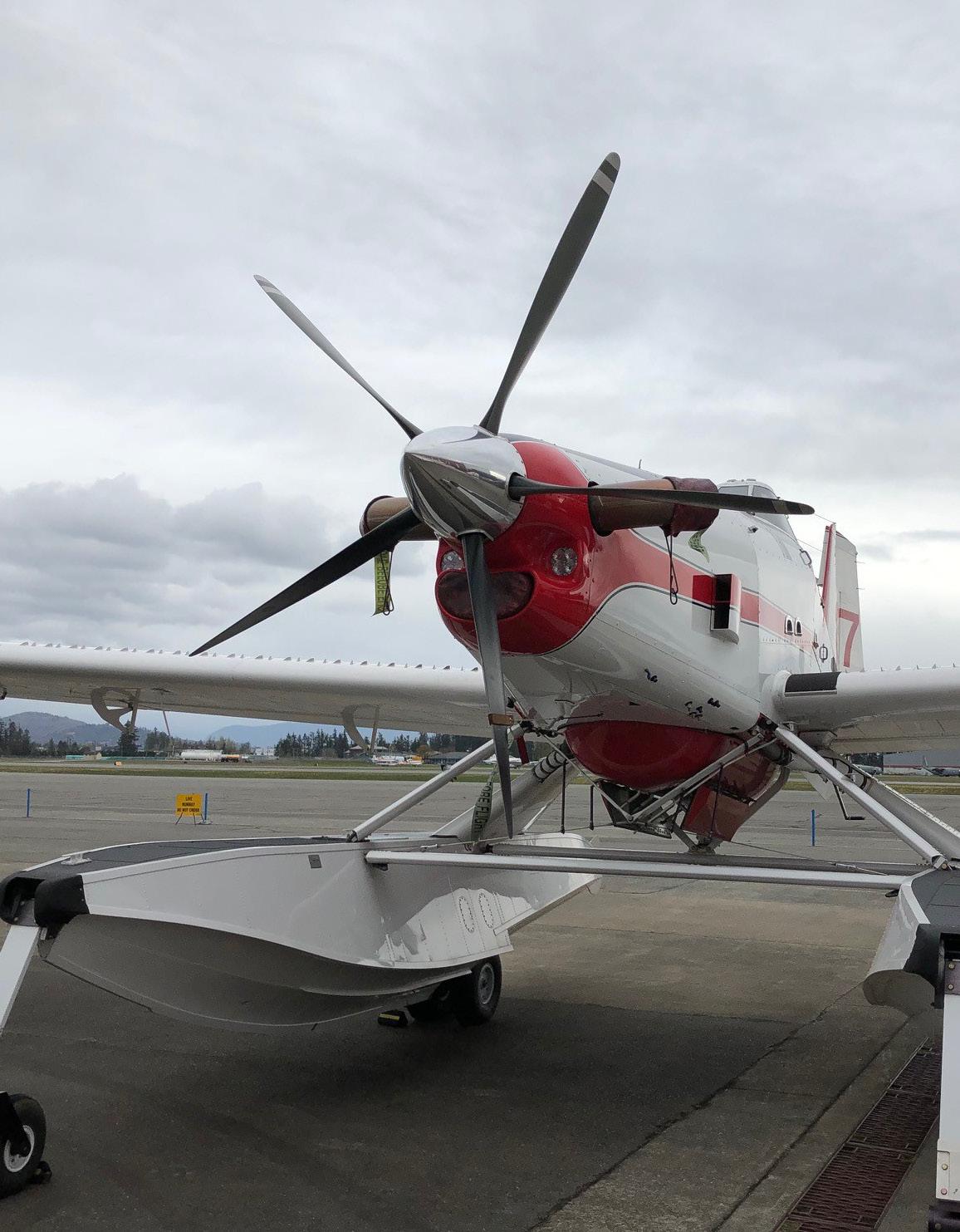
u Decrease up to 32⁰ ITT Temps
u Decrease up to 1.5% NG
u Easy Access to Service
Air Filter System ( Filter swap - 20 min)
Fuel Nozzles
Chip Detectors
Pilot Report: “Before the Cascade Pressure Cowl, this FIREBOSS was always at the back of the pack. Cascade Pressure Cowl installed, it’s always at the front with our best performing FIREBOSS! Performance is everything! ” ProtectingthePT6ATurbineEnginefor21Years!



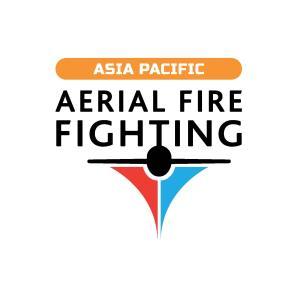


For over 30 years, ISOLAIR has been manufacturingindustry leadinghelicopter systems for the firefighting, forestry and aerial application industries. With a broad line of certified and custom helicopter equipment, ISOLAIR has the system to fit your company’s needs.Fromagricultural spray systems and bucket spreaders to firefighting systems, forestry grapples and torches, ISOLAIR can and will do it all!

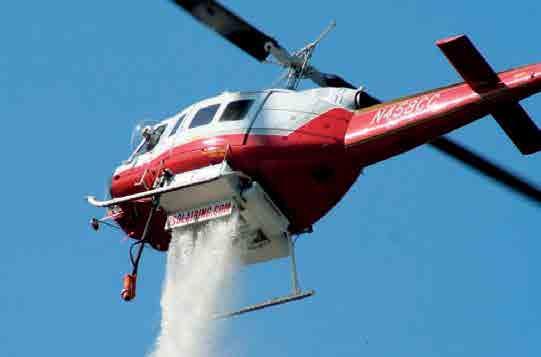

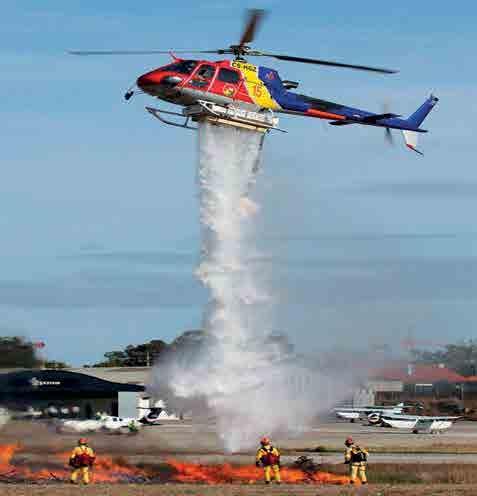
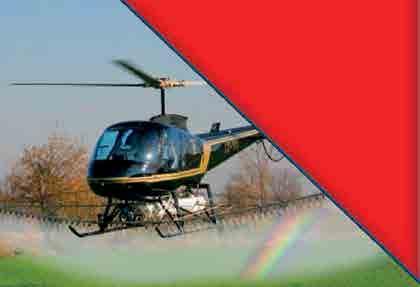
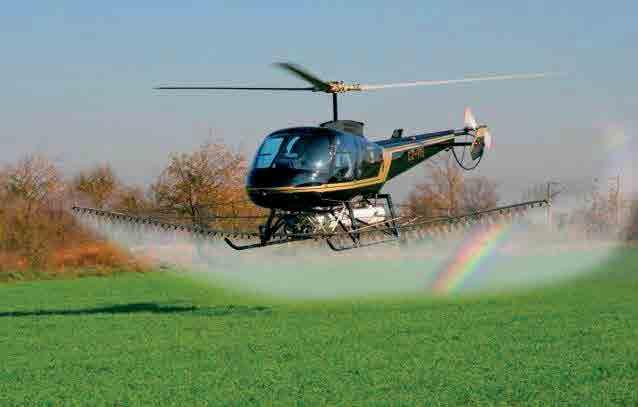
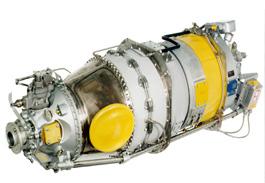

With competitive pricing, qualityassurance, easy to install products, and an ongoing commitment to customer service, we welcome you to contact us. Ourfriendly andknowledgeablestaff is ready to answer your questionsand help youfind the ISOLAIR system that will best meet youroperational requirements. ISOLAIR










PHOS-CHEK fire retardant was trademarked in 1963, making 2023 the 60th anniversary of the product. It also marked another milestone – 60 years that Perimeter Solutions, the makers of PHOS-CHEK, has worked with the U.S. Forest Service, according to Eddie Goldberg, Vice Chairman of Perimeter Solutions.
Goldberg says that Perimeter continues to use phosphates for the company’s products as they are the most effective, safest, and most environmentally friendly chemical to use to prevent the spread of wildfires.
In the early 1950s, water was the only tool to fight fires. Water dropped from airplanes is surprisingly inefficient, and many realized over time that another solution was needed. Over the next decade, additives, including water thickeners, gums, and even clay, were used to make aerial firefighting more efficient.
In the late 1950s, the industry started adding the first chemical, sodium borate, to the mix. While effective, borate was found to be a soil sterilant and was quickly abandoned.
Previous studies showed ammonium phosphate as the most effective fire retardant chemical available. During that time, Monsanto, a large phosphate producer, was working with the USDA Forest Service to commercialize the use of ammonium phosphate in aerial firefighting. At that time, Monsanto was uniquely positioned to develop this technology and supply
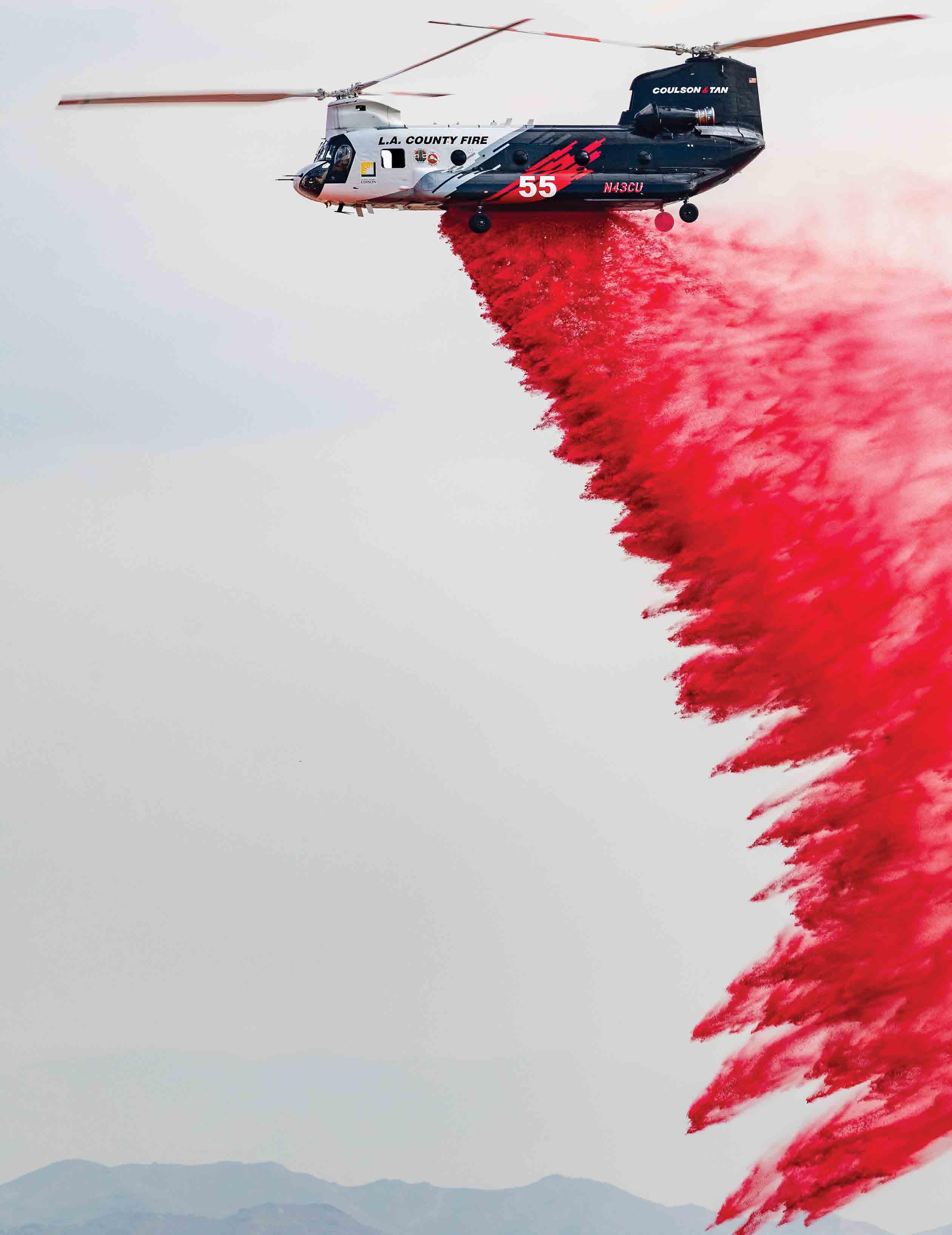
the large quantities needed to support the industry.
According to Goldberg, the unique aspect of phosphatebased products for aerial firefighting is that “phosphate works chemically, with the fuel, to change the way cellulose decomposes, rendering it nonflammable. Monsanto was a large phosphoric acid producer and had contracted with a large steel producer to supply phosphoric acid to scrub their stacks from ammonia. When you mix ammonia and phosphoric acid, you produce ammonium phosphate. So, Monsanto had a lot of ammonium phosphate on their hands. Using it as a fire retardant was mutually beneficial for both Monsanto and the Forest Service. That chemistry, along with ammonium sulfate chemistry, which works similarly but not nearly as
effectively, became the standard in the industry starting in the early 1960s.”
Goldberg says that the products the company sells today are far better than the products of 60–or even 20–years ago. In 1971, PHOSCHEK became the first colored fire retardant, allowing pilots to see where they were dropping the retardant to form a continuous fire line. Later, “fugitive color” PHOS-CHEK

was introduced. An important innovation, this made retardant fade away after being exposed to sunlight over a period of time. As the product evolved, better thickeners were developed to improve drop characteristics, more sophisticated corrosion inhibitors were added, enhanced flow conditioners made mixing easier and more efficient, and changes were made to improve its environmental profile.
PHOS-CHEK has been owned by multiple companies over the last 60 years, starting with Monsanto. The PHOS-CHEK business became part of Solutia when Monsanto divested its chemical businesses in 1997, and then in 2000, the business was acquired by Astaris, a joint venture between Solutia and FMC. ➤
Story by Ryan Mason, images by Marty Wolin & Jeff SerpaAstaris was subsequently acquired by Israel Chemicals Limited (ICL) in 2005, and the PHOS-CHEK brand was assigned to ICL’s Performance Products division. In 2018, ICL sold its Fire Safety and Specialty Additives businesses to SK Capital. Eddie Goldberg took the role of CEO of the newly formed Perimeter Solutions. In 2021, Perimeter Solutions as part of an acquisition by EverArc Holdings, went public and is now listed on the New York Stock Exchange (PRM).
“We flourished as part of Astaris and ICL, as the industry started to take off, and the air tanker fleet was rejuvenated. We formulated and commercialized world-class products, built our infrastructure to support the growing need, and became true partners with the agency. In 2007, we acquired the assets of FIRE-TROL® when they had trouble reformulating their products to remove a specific ingredient and we became the primary supplier to the US government. We’ve been working in partnership with them ever since,” said Goldberg.
While the United States is the largest market for Perimeter Solutions, its international markets are quickly growing. In addition to the US, the company has operations in Canada, Spain, France, Germany, and Australia in both its Fire Safety and Specialty Products businesses. In fire, Goldberg says the
company will continue to grow worldwide as the threat of wildfire continues to grow.
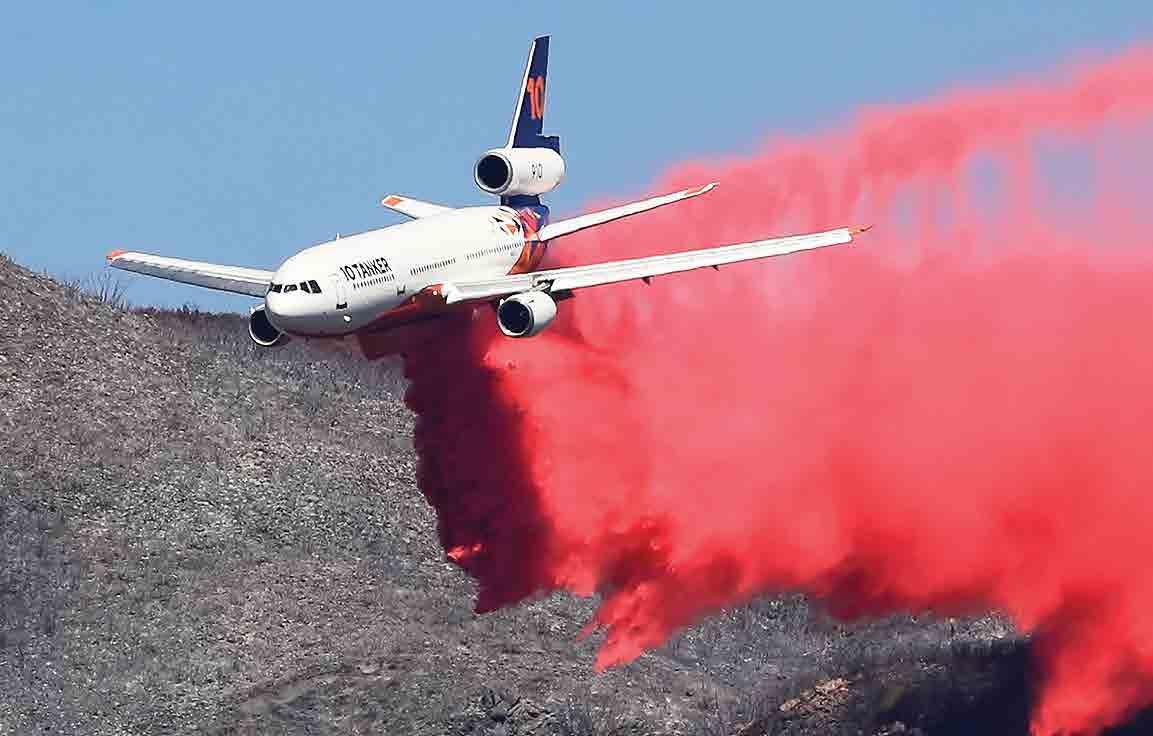
When asked about the future of Perimeter Solutions and other growth areas for the company, Goldberg was very passionate about what lies ahead in the fast-paced industry. “You know, we’re always looking forward in our research and development to see what improvements can be made to our products, and what new chemistries might be out there. We’re currently launching our latest product, PHOS-CHEK LCE20-FX, a next-generation liquid concentrate. It’ll eventually replace our LC95A product that has been a global industry standard for the last almost 20 years. LCE20-Fx is more effective and has a better environmental and toxicity profile. Overall, we think it’s a much better product. It’s more stable and doesn’t require as much handling or maintenance in the field. We’re really excited about PHOS-CHEK LCE20-Fx.
Of course, we’ll continue to look for new products and chemistries that could be more effective and/or cost-effective than phosphates. We’re always looking to the future. And it’s not just around product innovation. It’s also innovation of our services and our infrastructure. This industry is growing at quite a clip as the global wildfire problem worsens. Air tankers are getting bigger and faster. We have to be able
to support them and we have to load them faster and load multiple airplanes simultaneously. The key is to turn them faster to make the fleet more effective.
So, we’re continuing to invest in our tanker base technology. Not just the size of the tanker bases but how we mix and load the retardant to do it faster. We are investing in our distribution network to ensure that we continue to load every airplane that pulls into a pit. You may not know this, but tanker bases typically only have enough inventory to last about one day of operation. So, if you’re in the Pacific Northwest, in Medford for example, you could have 10 Airplanes show up in one day, and now all of a sudden, you’re flying, and you’ve got one day’s worth of inventory. We’re resupplying those bases 24/7/365 to ensure that we are always ready. We build and continuously improve our distribution network, to ensure 100% reliability. Overall, raw material supply, manufacturing and distribution takes a lot of investment and innovation, and we’re doing that on a real-time basis,” said Goldberg.
Perimeter Solutions has, in addition to supporting operations at fixed bases, developed new technology for mobile retardant bases that support both fixed wing and helicopter operations close into the fires. These are mobile, wholly contained units that can be deployed to remote locations to bring the product closer to the firefight and bring down the amount of time aircraft need to spend in the air to get to their next load of retardant. This has been a game changer for agencies and aircraft using retardant on fires in remote areas.
While estimating the need for future infrastructure like mobile retardant bases and amounts of retardant used in a season around the world is much like estimating the length of a piece of string, Perimeter Solutions is doing an admirable job of thinking outside the box to provide better products and new and innovative technology that makes aerial firefighting more effective.
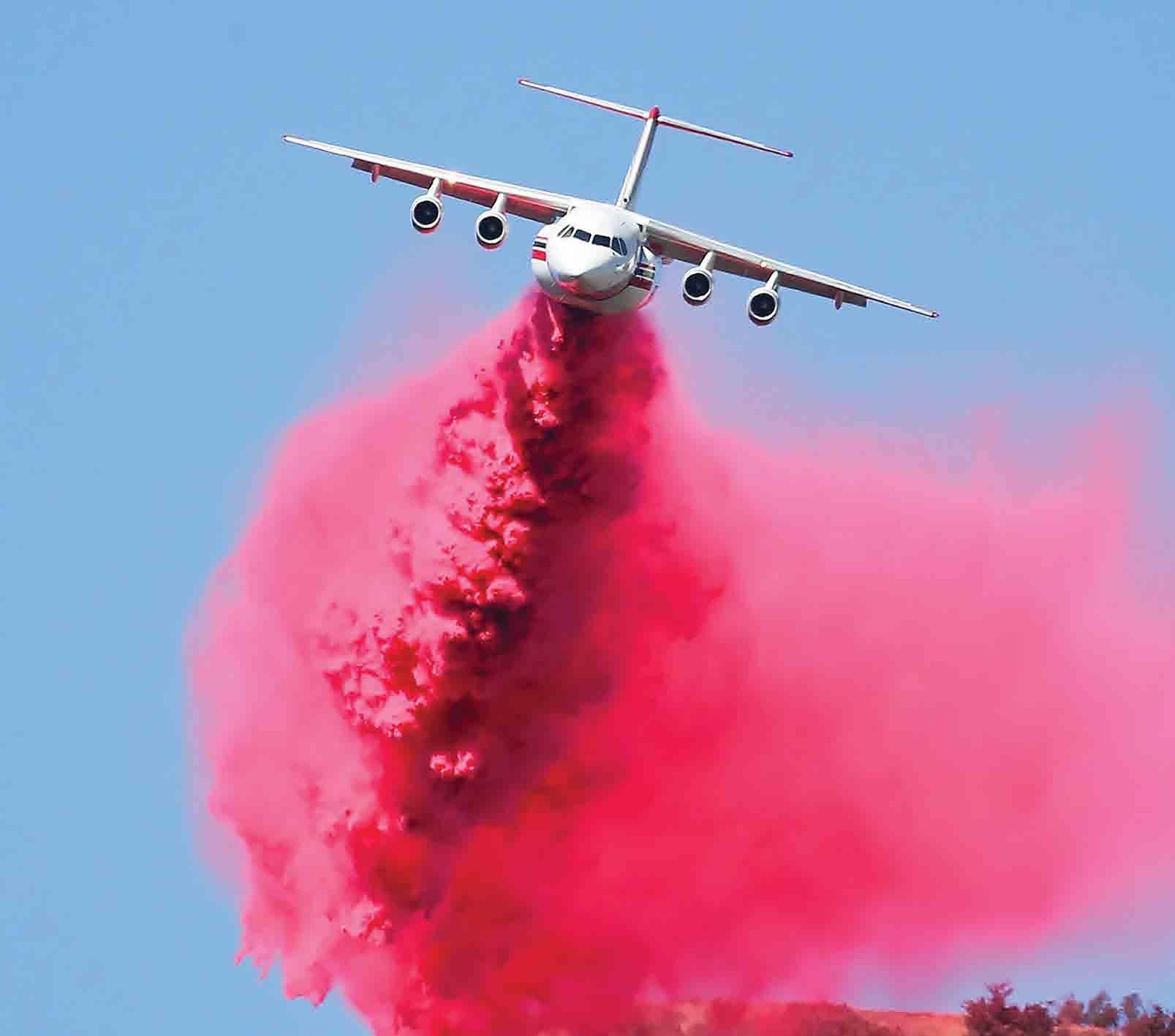
Rapid, direct and reliable initial response keeps fires small and costs down. It’s a smarter way to fight fires. Season after season, dollar for dollar, hour for hour; the Air Tractor® AT-802F proves its value.
Scan to learn more about Initial Attack
